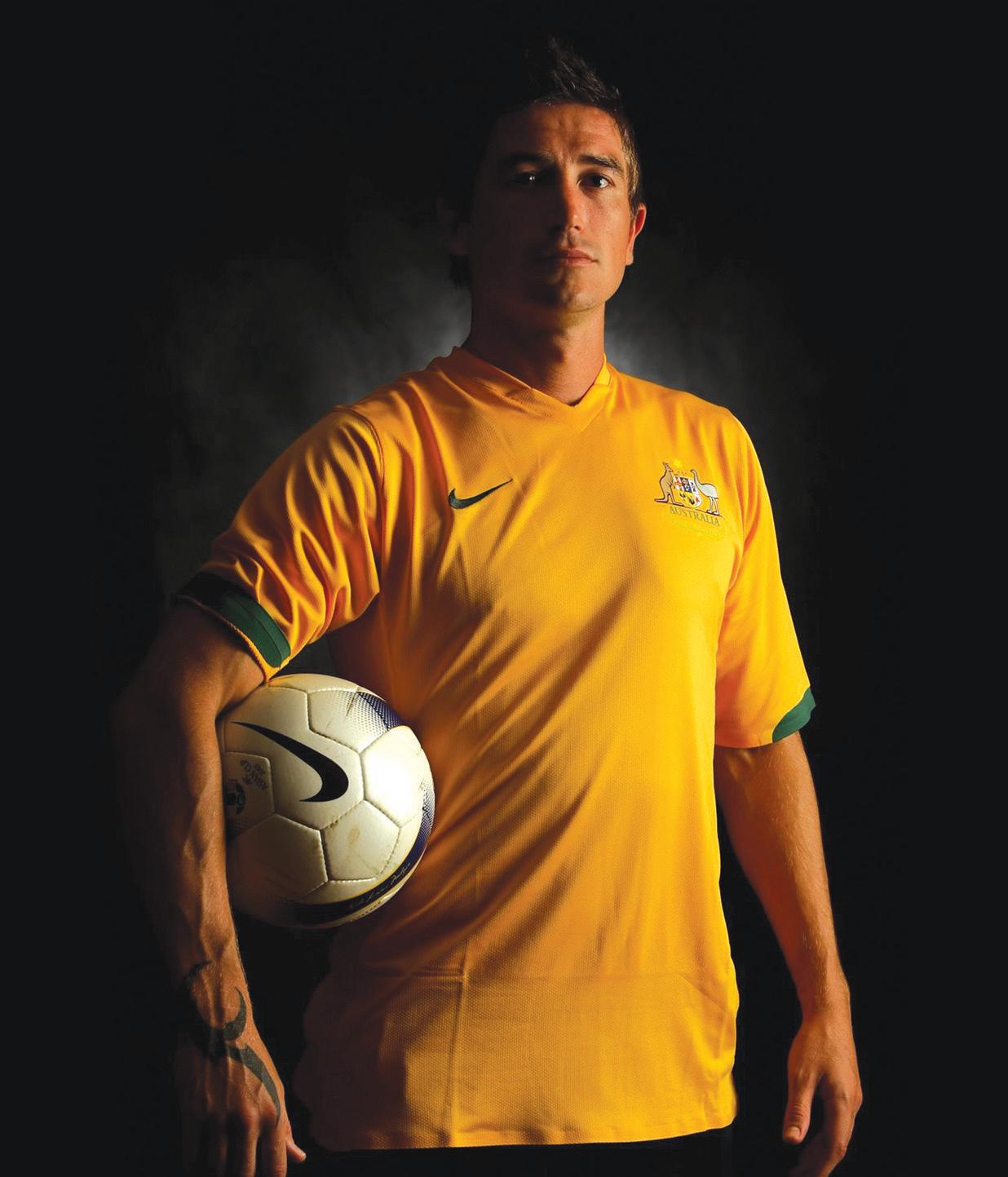




Level 24/44 Market St, Sydney 2000 • GPO Box 108, Sydney 2001 • Ph: 18000 15 8 47 • email: info@indianlink.com.au FREE Vol. 17 No. 9 (1) • June (1) 2010 • www.indianlink.com.au • Estd: 1994 FORTNIGHTLY Published Sydney • Melbourne • Adelaide • Brisbane • Perth WORLD CUP FEVER Football special

2 <> JUNE (1) 2010 INDIAN LINK

JUNE (1) 2010 <> 3 NATIONAL EDITION

4 <> JUNE (1) 2010 INDIAN LINK
INDIANLINK
PUBLISHER
Pawan Luthra
EDITOR

Rajni Anand Luthra
ASSISTANT EDITOR
Sheryl Dixit
CONTRIBUTORS
Farrha Khan, Tanveer Ahmed, Sanjiv Dubey, Ritam Mitra, Preeti Kannan, Astha Singh, Nima Menon, Shivangi Ambani Gandhi, Usha Arvind, Shraddha Arjun, Chitra Sudarshan, Natasha Ghai, Noel deSouza, Jane Milburn, Madhuchanda Das, Geeta Khurana, Malavika Santhebennur, Thomas King, Graham Sims, Kanishko Das, Saroja Srinivasan, Guneeta Dhingra, Farzana Shakir, Preeti Jabbal
ADVERTISING MANAGER
Vivek Trivedi 02 9262 1766
ADVERTISING ASSISTANT
Priti Sharma 02 9279 2004
GRAPHIC DESIGN AND LAYOUT
Darren Monaghan
Indian Link is a fortnightly newspaper published in English. No material, including advertisements designed by Indian Link, maybe reproduced in part or in whole without the written consent of the editor. Opinions carried in Indian Link are those of the writers and not necessarily endorsed by Indian Link. All correspondence should be addressed to Indian Link Level 24/44 Market St, Sydney 2000 or GPO Box 108, Sydney 2001
Ph: 02 9279-2004 Fax: 02 9279-2005
Email: info@indianlink.com.au

Rudd’s report card shows an “F”
With just a few months before the next Federal election, Prime Minister Rudd is fast losing his popularity with the Australian people. Over the past months polling by major research houses have been reporting on voters’ disillusionment with Mr Rudd and the subsequent slump in Labor votes. With the Greens attracting these disillusioned voters, it seems likely that they will hold the balance of power at the next elections. If, on a two party preferred basis, the Liberal Party is able to win, be prepared for an interesting time in Australian politics, with strange bedfellows.
Prime Minister Rudd’s report card really does not read very well. Swept to power on promises of a technology and education revolution and a commitment to environmental change, not a lot has been achieved in these areas, either due to politics or plan mismanagement. With the onslaught of the global economic crisis, Labor had rolled in power with cashed up reserves and the boom in the mining industry. Now only history will tell whether Mr Rudd has a highly ineffective team of Ministers or is he a control freak and unable to delegate well, but the fact remains that there have been far more failures than successes on his watch.
The failure of the emissions trading scheme was a major blow to Kevin Rudd. If he had won this high stakes game, it would have meant international and national accolades. His government home insulation scheme was poorly executed and monitored;
BY PAWAN LUTHRA
his school rebuilding programs are mired in controversy about overspending. His plan for a National Broadband network seems to have no clear strategy; his refugee settlement programme has a number of observers confused. And now his latest battle with the mining industry is one that he cannot lose for political reasons. Even the 20/20 summit at the beginning of his term was a lot of talk and no action.
Prime Minister Rudd and his government have done no favours for India and Indian Australians. On a national front, the Labor government’s decision not to sell uranium to India has been a major irritant, despite the United States agreeing to transfer nuclear know how for peaceful purposes to India.
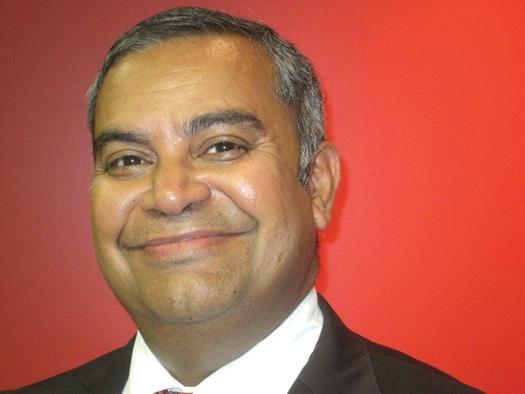
The Labor party still hanging to the now redundant NTP (nuclear non-proliferation treaty), and continues treating India with arrogance in this area. India’s civilian need for nuclear energy will allow for greater environment controls, and by commencing uranium sales to India in 2007 when the Rudd government came to power, it would have been a positive start between a new government in Australia and one of the strongest democratic countries in the world. But that was not to be and yet another
golden opportunity was missed. The Rudd government’s mishandling of the student issues is also disappointing to thousands of Indian students in Australia. Rather than fixing the system, the draconian step of radically changing the occupation demand list has impacted hundreds of thousands of Indian families who were committed to study and potentially, migrate to Australia. While the Australian government reserves to right to make changes, a more humane way could have been to allow a cut off time in the future, rather than retrospective so that people can replan their lives accordingly. This random change of rules without flexibility has even impacted many Indian Australian business people such as restaurateurs, travel agents, education facilities etc., who work closely with these international students. And since Australia’s unemployment rates have been falling over the past two years, this action reeks more of politics than the impact of the global financial crisis.
Rudd’s report card will unfortunately show an F where the Indian Australian community is concerned. Looking back at the last Federal election, it seems that people of Australia were voting John Howard out, rather than Kevin Rudd in.
JUNE (1) 2010 <> 5 NATIONAL EDITION
EDITORIAL www.indianlink.com.au
What’s On
Chinmaya Mission events
7-12 June Good or Bad: You choose Talk by Swami Swaroopananda on Chapter 16, Bhagavad Geeta. Venue Baha’i Centre, 197 Derby St, Silverwater. 7.30pm – 9.00pm each night. Br Gopal Chaitanya will run concurrently a special children’s workshop Mahabharata Heroes
13 June Happily Ever After....? Workshop for young married couples or couples/singles seriously thinking of marriage. 9.00am-5.00pm, Bellavista Community Centre
30 June 60th birthday celebration of H.H. Swami Tejomayananda, 7.30pm - 9.00pm at Chinmaya Sannidhi Ashram
2-10 July Queensland tour by Br Gopalji. Program includes Children’s Camp (Rama Rules), Retreat for the ladies (Balancing Life), Workshop for Teenagers (Hero or Zero), Home Satsangs, Talks at Griffith University for Philosophy
Students, Talks at the Theosophical Society
14-15 July Children’s holiday camp Ayyappan Swami: Lord of Sabari Hills Chinmaya Sannidhi Ashram, 38 Carrington Road, Castle Hill. Camp
Acharyas: Brni Sujata Chaitanya and Br Gopal Chaitanya.
16-17 July Youth mini residential camp Face it! Make it! with Br Gopal Chaitanya, for 17 – 35 year age-group. Venue Chinmaya Sannidhi Ashram.
25 July Guru Poornima Gratitude and Remembrance of Guru 10.00am to 11.30am at Chinmaya Sannidhi Ashram
30-31 July Ladies residential retreat The Gita Guide to Life with Br Gopal Chaitanya at Chinmaya Sannidhi Ashram. Details visit www.chinmaya.com.au or call 02 8850 7400
Information Session on Community Care
2 July Sydney Multicultural Community Services are organising an information session on Community Care for Fiji Indian (Hindi) communities in Strathfield Main Library, 2:30pm-4:30pm. The session will aim to help seniors stay in their homes independently and comfortably for as long as possible. On the day, you may ask questions regarding available services and community care from our expert team. Light refreshments will be provided. The Strathfield Main Library is located at 65-67 Rochester Street Homebush. Details Maryam Maghsoodi 02 9663 3922, email maryamm@ sydneymcs.org.au
Sakhi Sangam
25 July Sydney Sakhi Sangam will be held at the Croatian Club, 921 Punchbowl Rd (Cnr Canterbury Rd), Punchbowl. Details Nandini Thadani 02 9181 2204, Sushma Ahluwalia 02 9894 0070.
Bilingual help to take medications correctly now available in Tamil and English
Pharmacists are now able to provide further support to patients with low English proficiency by offering them translated information on medication adherence aids. Known as MultiLingual Webster-paks, these have medication information in English and a second language appear side by side.
The Webster-pak consists of days of the week listed down the pack and meal times across the pack. Each compartment is filled by the pharmacist with your exact medications (2, 3, or 4 tablets as prescribed) - down to a half or quarter of a tablet. All you have to do is pop the compartment and know you’re taking the right medications at the right time.
At the top of the pack is your photo and a list of all your medications and dosages. This is vital if perhaps there is an unfortunate incident, so when an ambulance is called the paramedics can see straight-away what medications you have been taking Research has shown that such dose administration aids:
• help patients take their right medicines at the right time
• make it convenient and easy to take medicines
• improve continuity of supply.

• give patients greater confidence in their ability to manage their own medicines in their home and there’s been evidence of health and quality of life benefits and the decrease in their care needs.
• gives peace of mind to relatives and carers. Bilingual Webster-paks are available in 20 languages - Chinese, Arabic, Croatian, Dutch, German, Greek, Indonesian, Italian, Korean, Macedonian, Maltese, Polish, Russian, Spanish, Serbian, Tagalog, Tamil, Turkish, Ukrainian and Vietnamese which cover the most commonly spoken languages in Australia other than English. Webstercare, the creators of the packs, are intending to introduce more languages in the future.

Ask your local pharmacist for this facility.
Brahmotsavam Festival
3 July In aid of Brahmotsavam Festival, Sri Venkateswara Temple proudly presents Adharam Madhuram a Bharathanatyam ballet by Manjula Viswanath and the Rasika Dance Academy. It is a popular classical dance program depicting the love of Lord Krishna. 6.30pm at Bankstown Town Hall. Details Devi 02 9706 7354
Upanishad classes
Weekends June and July SVT Vidyalaya resumes its Upanishad Course taught by Sri Vasudevacharya. Venue Darcy Road Public School, Darcy Road, Wentworthville. Details Kumar 0407 108 372 or Shobana 0422 732 907.
COMMUNITYSCENE
Dr AM Babu’s medical practice in St Ives, NSW has been awarded the 2009 Solo Practice of the Year Award (NSW) from Australian General Practice Accreditation Limited (AGPAL), the leading provider of general practice accreditation in Australia.
Dr Babu arrived in this country exactly forty years ago. An Indiatrained doctor, he worked initially at Manly Hospital and then took on an academic position at UNSW. He soon settled at St.Ives and started his own surgery, where his wife Sarala still serves as Practice Manager.
Dr Babu’s surgery impressed AGPAL with its commitment to safety and quality.
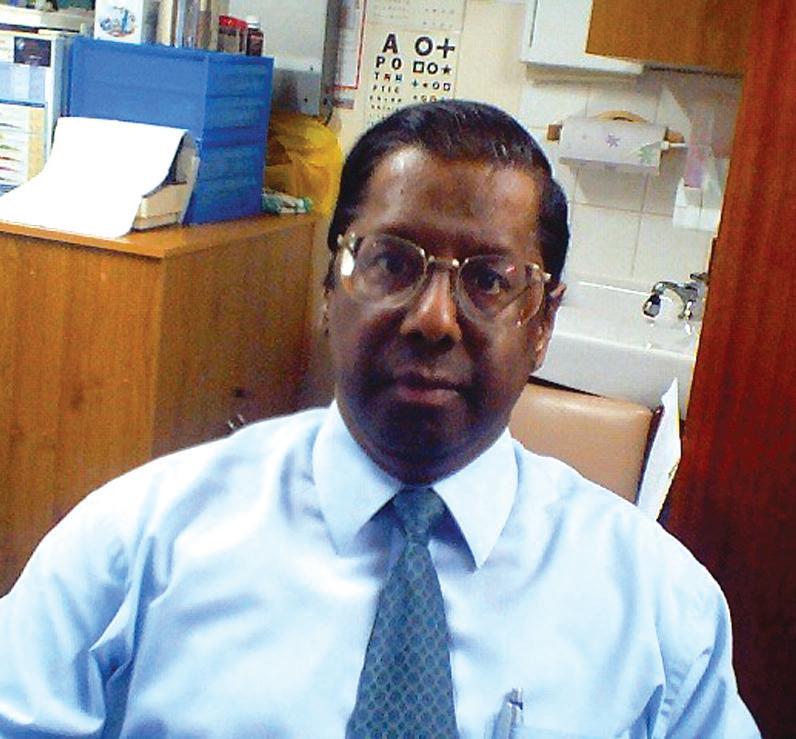
AGPAL CEO Dr Stephen Clark said that the Solo Practice of the Year Award provides recognition to AGPAL accredited general practices where there is only one general practitioner. The awarded practice must have successfully achieved accreditation in a timely manner, excelled in meeting all indicators of the Royal Australian College of General Practitioners (RACGP) standards for general practices (3rd edition), and were commended from both surveyors at the time of their survey assessment.
Dr AM Babu’s Medical Practice has excelled in accreditation against the RACGP standards, which shows that it is a safe place for patient care. Accreditation is a voluntary process renewed every three years - and demonstrates that doctors and staff are committed to providing safe and high quality health care.
“Solo general practices which excel in their commitment to safety and quality in health care, deserve special recognition because of the limited human resources they have available to invest in accreditation. These practices have to be particularly dedicated to be of a calibre required to achieve this award,” said Dr Clark.
Dr Clark commended the team at Dr Babu’s medical practice for their commitment to provision of quality health care.
“They should be extremely proud of the commitment they have made to safety and quality in healthcare,” he
May at AGPAL’s 5th International Conference in Health Care, Quality Around the World.
AGPAL is the leading provider of general practice accreditation and is committed to improving the quality of Australian general practices. Established in 1997, AGPAL accredits more than 75 percent of accredited practices in Australia against standards developed by the Royal Australian College of General Practitioners.
Dr Babu’s commitment to preventive medicine is well-known to all his patients. Young children as well as elderly patients are educated with diagrams and models of the human body, based on whatever their particular problems are – clearly a lingering passion from his days as a lecturer. Equally devoted to his native land as he is to his adopted home, Dr Babu is a fine example of a wellintegrated migrant, who takes the best from the two cultures that he has studied closely.
“Australia has been a great place to do clinical practice,” Dr Babu reflects. “Three As have guided me in my life and career - Aim, Attitude and Ability”. No doubt these three As have aced it for him.
And what are his future plans?
“If you’re asking me about retirement, forget it,” he laughs, “I’m not retiring till I lose all my faculties!”
6 <> JUNE (1) 2010 INDIAN LINK
Dr Babu’s medical practice receives award BEST PRICE GREAT REPUTATION "KAWAI BRAND NEW K-3 FROM $38.5 PER WEEK"
VEGETARIAN PARATHAS
Poodina Paratha
Methi Paneer Paratha

Palak Paratha
Aloo Paratha
Methi aloo Paratha
Oriental style stir fry
paratha Mushroom and pea paratha
Stuffed vegetable and cheese Paratha
Paneer Paratha
Methi Paratha
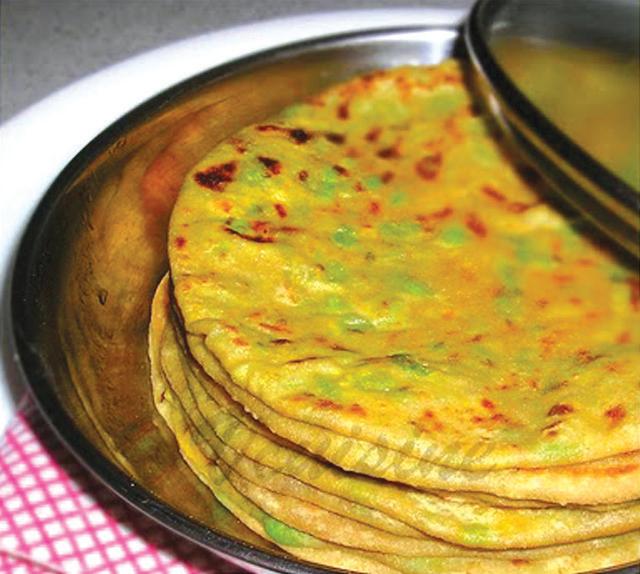
Mooli Paratha
Gobi Paratha
Garlic stuffed mali
Paratha
Masala rajhama Paratha
Mattar Paratha

EXCLUSIVE FOR SOME Nashe Ka Paratha

NON-VEGETARIAN PARATHAS


Keema Paratha
Chicken Paratha

Egg Paratha
DESSERT PARATHAS
Shakkar Paratha
Chinni Paratha All these
JUNE (1) 2010 <> 7 NATIONAL EDITION 139 STEPHEN STREET BLACKTOWN PHONE: 9671 7820 PARANTHA WEEKENDS IN JUNE …Beat the chill, come in for hot paranthas Quality Quantity Service
and our normal
weekend at EXTENDED BY POPULAR DEMAND
menu, all
Indian scholars to study Australian diversity, Indian experience
The Australian High Commissioner to India, Peter Varghese, has announced the winners of the 2010 Australia-India Council (AIC) Australian Studies Fellowships. A total of five fellowships were awarded, two in the senior category (for university faculty) and three in the junior (for research scholars).
Announcing the awards in New Delhi in late May, Varghese said “these awards will lift the understanding of Australia and Australian society among Indian university faculty and research scholars. Australia and India have much to learn from each other through collaborative research and these awards will expand the scope of that collaboration. I congratulate the awardees and wish them well with their travels and research.”
Australia’s multiculturalism and cultural coexistence were underlying themes among successful applicants this year. Professor Priyankar Upadhyaya of Banaras Hindu University (BHU) will work on the challenge of managing diversity, while Ms Lovepreen Kaur from Max Healthcare plans to research the experience of Indian students in Australia. Professor Caldeira from the University of Goa, a 2010 awardee, will use her fellowship to draft a Masters’ course on ‘Multimedia Readings of Australia’.

The AIC fellowships provide an excellent opportunity for awardees to extend their knowledge of Australia and Australian Studies, and to develop collaborations with scholars in Australia. The fellowships are part of the AIC Australian studies program to promote academic linkages.
“First hand exposure to the nation has made me totally restructure the course I had initially designed,” said Professor Caldeira, a 2009 awardee currently in Adelaide.
Since the introduction of the fellowships in 2003, 17 senior and 18 junior fellows have undertaken the 6 – 10 week visit to Australia, spending time at participating universities. Many of the awardees have continued their strong interest in Australia, and several have become champions of Australian studies at their home institutions.
The successful awardees for 2010 are as follows:
* Professor Priyankar Upadhyaya, Malaviya Centre for Peace, Banaras Hindu University will conduct research on “Managing Diversities Peacefully: Learning Experiences from Multicultural Cities in India and Australia”
* The research topic for Dr Nidhi Singh, Department of English, University of Rajasthan at Jaipur is “Making Connections: South-Asian Immigrants’ Search for Cultural
Coexistence”
* Mr Arindam Das, Heritage Institute of Technology, Kolkata will work on the theme “Indo-Australian Dialogue: Indian Diasporic presence and the rethinking of culture, economy and politics”
* Dr Parmod Kumar, Dept. of English, IGNOU will examine “Writings from the Fringe: A comparative study of Australian Aboriginal and Indian Aborigines (dalits) through their autobiographies, memoirs et al”
* Ms Lovepreen Kaur, Department of Mental Health, Max Health Care, will study “Perceptions of safety and the acculturation experience among Indian students in Australia: A pilot study of North Indian and Punjabi Students in Melbourne and Sydney”.
In its seventh year of operation, the fellowships program is being managed by a consortium of Australian Universities, on behalf of the AIC. The consortium is led by Monash University, and includes the Australian National University, the University of New South Wales, the University of Queensland and the University of South Australia.
The Australia-India Council was established by the Australian Government in 1992 to promote linkages between Australia and India in a range of areas, including Australian studies.
Indian Community Welfare Fund launched
The Ministry of Overseas Indian Affairs and the Ministry of External Affairs, Government of India, have decided to set up an Indian Community Welfare Fund (ICWF) for the welfare of Indian students and other Indian citizens in distress in Australia. The Fund will provide essential welfare services for students and other Indian nationals without other means.
The ICWF is already in operation in several countries, notably in the Middle East for the last several years, and is being extended to 24 countries, including Australia, New Zealand, UK, USA, Canada, France, Germany and others.
The Government of India is providing the initial seed money so that the ICWF can begin operations immediately. With a view to building up the Fund for the future, an additional fee of A$ 2 will be charged with effect from 1st June, 2010 on each application for a consular service. This will be in addition to the already prescribed fees and service charges.
The Fund will be administered by the High Commission of India, Canberra in coordination with the Consulate General of India, Sydney, the Consulate General of India, Melbourne and the Honorary Consulates in Perth and Brisbane.
8 <> JUNE (1) 2010 INDIAN LINK
INDIA-OZ www.indianlink.com.au
Ankita records Rahman song
A young Sydney singer scores a dream debut in the Indian music industry
 BY RAJNI ANAND LUTHRA
BY RAJNI ANAND LUTHRA
At the time she didn’t know that her words would be prophetic…for herself!
At a chance meeting with AR Rahman in March this year, she sang for him casually. Less than a week later she had recorded a song under his direction.
Twenty-one-year-old Ankita Sachdev’s first full-length Bollywood playback song has just been released, and the film, Mani Ratnam’s multilingual Abhishek-Aishwarya starrer Raavan/Villain
“I’ve really been fortunate to get this opportunity so early,” Ankita told modesty. “I just couldn’t believe it when it was all happening. It gives me goosebumps even now when I listen to the song!”
Although Ankita has already sung playback (she sang the national anthem in the Hrithik Roshan film 4), this is her first ‘original’ song.
The song appears in the Telugu version of the film (Villain) and is entitled soothing, soft-flowing, romantic number”. It is sung in the film by the ethereal Aishwarya Rai, as she dances, blissfully in love, around her home – in the kitchen, in the balcony, yes, even in the rain.
With this song, Ankita finds herself in the exalted company of Shreya Ghoshal and Reena Bharadwaj (who sang the Tamil and Hindi versions of the song respectively).
Most people in Sydney’s Indian community who have heard Ankita sing (whether on Indian Link Idol or at a community event) have thought she is tailor-made for a playback career in India’s music scene. Indeed, Ankita herself has been training for such a move, staying on in Sydney only to finish her Bachelor’s degree. She moved to Mumbai in late December last year to pursue her dream.
To see a clip of Ankita sing to Rahman, catch the Youtube listing of Lift Kara De dated March 27. And don’t miss the change of expression not just on Rahman’s, but Karan’s face as well
Her uncle Sunil Sachdev found a music school for her after researching all the schools in Mumbai.
“I’ve watched Ankita grow up singing and training,” Sunil told Indian Link. “She has impressed us all with her total dedication so far, and so we were all motivated to help her realize her ambitions”.
Ankita has joined the Raageswari School of Music where she has been training in classical as well as playback singing. This of course, is over and above the years of training she has already received under different gurus growing up in Mumbai, as well as after her family moved to Sydney ten years ago.
In late March, Ankita learnt that her school had organized a trip for students to view the recording of Karan Johar’s TV show Lift Kara De (Sony), at which the main guest was AR Rahman. As part of the show, the audience were given an opportunity to ask the guest questions.
Ankita’s question to “Rahman Sir” was, “Which is your favourite song?”
song Munba Ve, even though I don’t speak the language.”
“I love that song too, you know…” Rahman muttered. Ankita had the presence of mind to ask, “Can I sing you two lines?”
To see a clip of Ankita sing to Rahman, catch the Youtube listing of Lift Kara De dated March 27. And don’t miss the change of expression not just on Rahman’s, but Karan’s face as well. When she finished, Rahman responded with a single word.
“Wow!”
Ankita recounts the experience for Indian Link
“I had been sick ever since I landed in Mumbai, but had been keeping up the riyaaz. For the Rahman show I remember vaguely thinking how nice it woud be if I could score an opportunity to sing in front of the master… perhaps before the start of the show or after, if I could catch him for a few moments. So I tanked up on the home remedies – adrak, honey, homoeopathy –anything to make me feel better. But who was to know I would get to sing during the show!”
During the commercial break after her little performance, a staffer walked up to Ankita and asked for her mobile number.
The next day, Ankita’s phone rang. It was Rahman. They had a brief chat, and he finished by saying, “We’ll be in touch.”
Shortly thereafter, one of his assistants rang her and asked her to come in for an audition.
And then came the call that Ankita thought was a dream.
“We’re sending you two tickets to fly down to Chennai – we want you to record.”
Sunil Sachdev, an accountant by profession, dropped everything and accompanied his bewildered niece to Chennai.
“I got the brief for the Villain song,” Ankita recounted. “I heard the Hindi and Tamil versions constantly till I learnt to sing them both well. Then I got on to the Telugu version. Because I don’t speak the
was helpful and it all went smoothly.”
Meanwhile, Rahman had to fly out to Delhi to receive his Padma Bhushan award at the Rashtrapati Bhavan. At his request the Sachdevs stayed on in Chennai.

“When I was called in to sing finally, I told myself to get my act together. I went in and gave it my best shot.
There were many takes and retakes, but I think I’m pleased with the final version,” recalled Ankita.
As they headed back home they were told, nothing was final yet. There was, even now, no guarantee that Ankita’s version would be included in the final cut.
Ankita’s dad Praveen Sachdev, back in Sydney, told his daughter not to be disappointed.

“I said to her, ‘It shouldn’t matter. Rahman ke direction mein, unke studio mein, gaaya, itni hi kaafi hai (You’ve sung under Rahman’s direction, in his own studio, that should be enough).”
For someone who has been the guiding force in Ankita’s career, her dad’s humility rubbed off on her.
“I spent the next few weeks just reliving the Rahman moments in my mind… and I have to say, I thanked God a fair few times,” Ankita said.
In early May, the film’s music was launched. And Ankita’s track had made it!
The reviews came flooding in, with Telugu fans declaring it “the best song of the album” on various websites and chat forums.
Both Praveen and Sunil are full of praise for the treatment they received at the hands of Rahman’s team.
“Their hospitality, and that too to a total newcomer, was amazing,” Praveen said. “Rahman himself is an amazingly humble person, a man of few words. Do you know, in one of his early conversations with Ankita, he uttered something that sounded like, ‘You are taken’. That should have given us an idea…”
And what’s in the future for this talented young lady?
“Don’t know yet,” Ankita laughed. “I’m just waiting for June 18, to see the film on the big screen.”
Good on you, Ankita. Here’s hoping you go far in the industry.
JUNE (1) 2010 <> 9 NATIONAL EDITION
NEWSMAKERS www.indianlink.com.au
Even as Rahman was receiving his Padma Bhushan award from President Pratibha Patil in Delhi on 31 March, Ankita was in his Chennai studio, working on Kaavule with his assistants
Aussie screens for Delhi CWG
Australian company installs LED screens for Commonwealth Games.
As we get closer to the Delhi 2010 Commonwealth Games and amidst fears that construction won’t meet the deadline, we are now slowly seeing pictures and footage of unique infrastructure in the form of buildings and stadiums finally being completed. In addition to this, one of the notable pieces of equipment making an impressive appearance is the massive LED (Light Emitting Diode) screens
And it is Australia’s MIC Technologies that is reaching sky high in Delhi - rather literally.
The Sydney-based MIC Technologies (the Australian branch of Indian company MIC Electronics) has been contracted to develop and install 17 large outdoor LED screens around Delhi, displaying up-to-date readings of pollution and other climate conditions in the area.
“It will show air pollution, weather and conditions that can be reviewed by spectators,” said Mr. Murthy Telugu, the head of this project. “This is the first time anyone has constructed these kind of screens during (any) Commonwealth Games.”
The contract for the Delhi Commonwealth Games was given to MIC by the Indian Institute of Tropical Meteorology (IITM).

“The design for these LED screens has been developed by our consultant in Australia,” said Mr. Telugu, clarifying the reason why this project is being headed by MIC Technologies in Australia rather than any other branches around the world which include Dubai, the USA and South Africa.
MIC Electronics began in Hyderabad in 1986, expanding to Sydney and Melbourne in 2004. The strength of the Australian branch is in green energy products. “Most of the designing of video screens and LED products are being done in Australia by MIC Technologies,” said Mr. Telugu. “MIC is promoting LED products and has developed LED lighting that saves 40% of energy”.
This, of course, will appease those worried about possible high energy consumption caused by these large screens being put up in Delhi. “MIC has been branded as a green energy revolution company in the field of LED products,” said Mr. Telegu. This is clearly a major point of interest for the Indian Government, which has dubbed the Delhi Commonwealth Games as the ‘Green Games’.
The 17 screens that will be installed for the Games, two of which are already up, will all be connected to each other through Wi-Fi technology. The largest measures at 12.8 feet by 8.53 feet, while smaller ones measure at 8.53 feet by 5.4. There will also be 6 indoor LCD screens installed, measuring at 60 inches each
Besides being a leader in green energy product research and development, Murthy Telugu explained that MIC is a “unique company, as it is the only manufacturing unit of LED and video screens in all of India.”
“It’s a research and development company. MIC has won a number of awards by the Indian Government,” he added.
MIC Technologies owes its success to its CEO and Chairman, Dr. MV Ramana Rao who is very passionate about developing good products and technologies for the community to use, claims Mr. Telugu. A scholar and researcher in this field, Dr. Rao has pushed MIC Technologies to higher heights and up into the sky in 2010 for the Delhi Commonwealth Games.
The 17 screens that will be installed for the Games, two of which are already up, will all be connected
to each other through Wi-Fi technology. The largest measures at 12.8 feet by 8.53 feet, while smaller ones measure at 8.53 feet by 5.4. There will also be 6 indoor LCD screens installed, measuring at 60 inches each.
“As part of the contract we are also expecting to put up screens at railway stations,” said Mr. Telugu.
MIC Technologies also developed a specially designed software program for the LED screens which will link them through Wi-fi, with automatic updates straight from the IITM.
While the LED screen technology isn’t new, the way in which the technology is being used specifically for this project is unique. An emissions inventory has been prepared by scientists from the Pune-based IITM that will be used in conjunction with MIC’s software. “This project caters to information which is really useful for every person who walks on Delhi streets,” said Mr. Telugu.
The future of these screens after the Commonwealth Games is still unknown. However Mr. Telugu believes they will remain up as a public information service. “At the moment it will be used for pollution readings, weather and climate information. But it will be phased in with a lot of additional information including traffic conditions or emergency information, that the public will like to know,” added Mr. Telugu.

MIC Technologies’ role in Australia is also expanding with many local projects. The company has supplied the LED perimeter screens for the Parramatta League Club at Parramatta Stadium. This project was one of the motivating factors which led to a unique initiative where the Parramatta League Club and its rugby players invited the Indian community to watch the game between
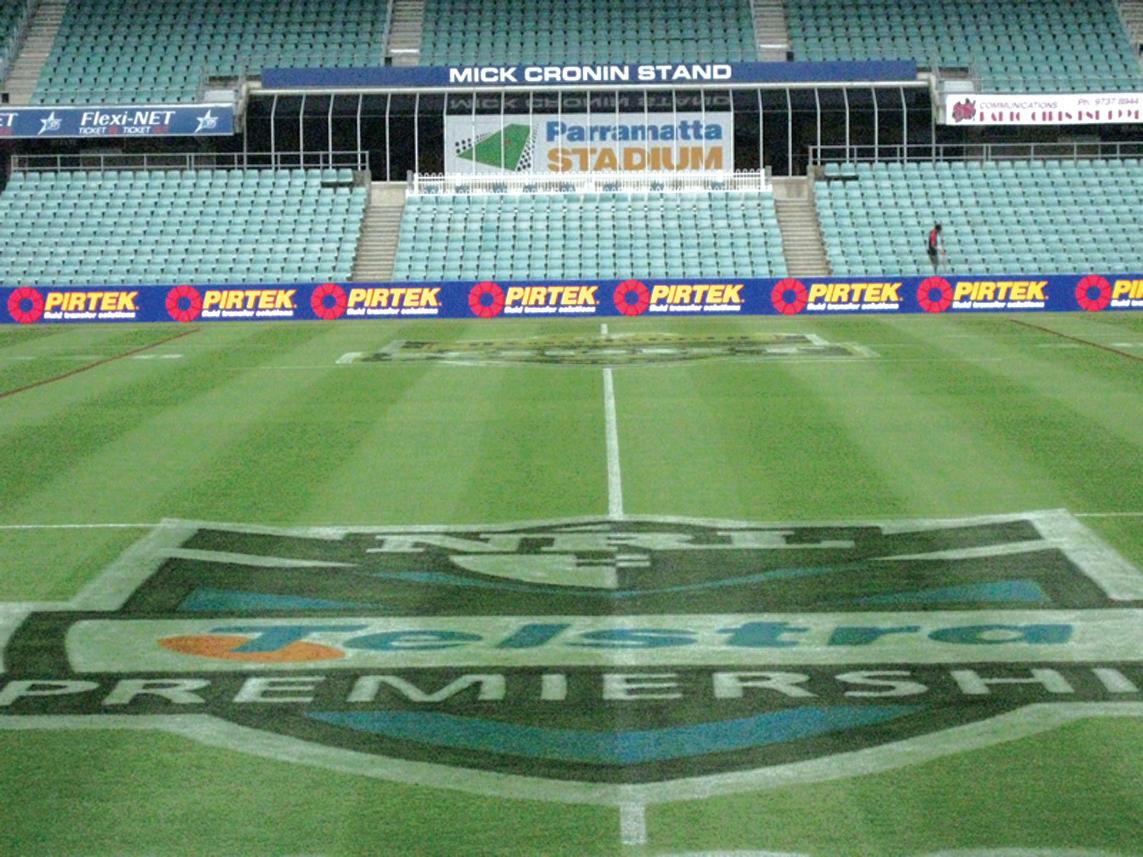
offering 200 free passes to the Indian community.
As part of the organisation team for this night, Mr. Telugu believes it was a great success. “The spectators numbered 16 to 17,000,” he said. “The bhangra performance during half-time was received really well too”.
In return, MIC has invited Mr. Osborne and the Parramatta Eels players to visit India. Mr. Osborne has visited India before, travelling to MIC’s factories in India before placing an order for the perimeter screens for Parramatta Stadium.
The initiative was headed by Parramatta League Club’s CEO, Mr. Paul Osborne. “MIC has created an opportunity for Indians to be associated and become involved with Australian rugby,” said Mr. Telugu. “This (I believe) is the first initiative between the rugby industry in Australia and the Indian community.”
The future of MIC Technologies seems as vast as its 8 foot screens going up around Delhi. “We are currently in 3 main sectors in Australia: IT, telecommunications and LED development, with a focus on green energy. We hope to expand within the Australian market,” revealed Mr. Telugu.
With affiliations to the Australian sporting sector and hopes to build facilities in Australia for the production of LED lights, MIC hopes to create new jobs and a stronger tie between India and Australia.
Globally, the future of the LED screens is an avenue that is still to be explored. “In Australia however, extreme weather conditions may make it difficult to put up. But they should definitely be implemented in Sydney,” concluded Mr. Telegu.
10 <> JUNE (1) 2010 INDIAN LINK
NEWSMAKERS www.indianlink.com.au
MIC has manufactured and installed the LED perimeter screens for the Parramatta Leagues Club at Parramatta Stadium
(From left) Roh Singh, Paul Osborne (CEO Parramatta League Club), Ramana Rao (CEO MIC Electronics Limited), Frank Panda and Murthy Telugu (CEO, MIC Technologies (A) Pty Ltd) finalising the tie-up between Parramatta League Club and MIC Technologies




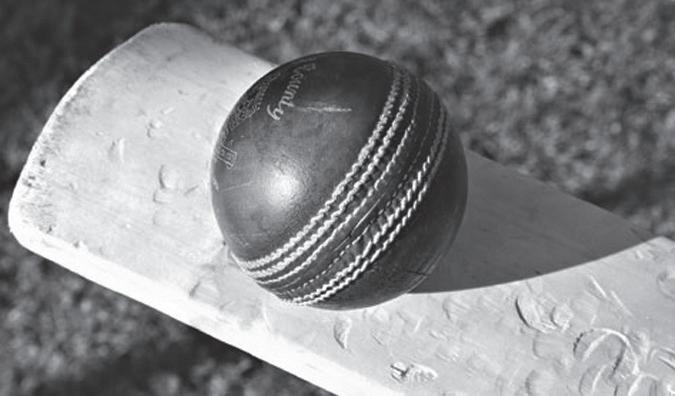








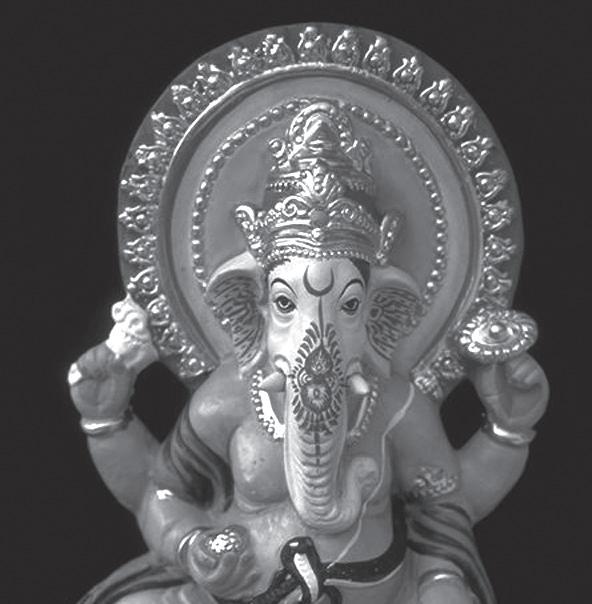

JUNE (1) 2010 <> 11 NATIONAL EDITION * Subscribe to Indian Link Radio for $3.95 each month for first three months, then normal subscription fee $9.95 pm . 24 hours, 7 days Indian Link Radio Conditions apply: Minimum 12 months subcription, $50.00 refundable deposit. This special offer applies to new subscribers and is valid till 30 June 2010 only. THIS MONTH ON INDIAN LINK RADIO SPECIAL EOFY SALE ONLY $3.95 pm* HITS & MISSES BBC NEWS UPDATE SPORTS ROUND UP JOKES CAMPUS UPDATES TRAVEL TIME TALK BACK COMMUNITY NEWS ANTAKSHARI BOLLYWOOD TOP 10 BHAJANS HEALTHY & WEALTHY BOLLYWOOD BAKWAAS
An Indian link at Eels match
There was a palpable air of excitement at the Parramatta Stadium, as the home team, the Parramatta Eels took on the Cronulla Sharks in Round 11 of the National Rugby League on May 22. Fans braved the cold and wind to root for their team, and splashes of blue and gold dominated the crowd at the stadium. The air of anticipation was shared by over 200 Indian fans who were invited to attend the game in support of the home team.
The Pirtek Parramatta Eels had earlier visited Billu’s at Harris Park to give away 200 passes to members of the Indian community, inviting them to attend the match and experience the magic of an NRL game. This initiative had a dual objective, that of forging closer links with the Indian community as well as inciting an interest in the game. The Parramatta Eels are a strong team representing a city in which a majority of the residents originate either from India or the sub-continent, and whose presence is now a significant one.
The United India Association (UIA) was instrumental in supporting this initiative, with UIA President Aruna Chandrala attending the event, along with a host of prominent members of the Indian community and its media. They were hosted by Pirtek Parramatta Eels club
CEO Paul Osborne and Special Projects Manager Bonnie Scott, in a corporate box.
However, the highlight of the evening was a performance of Bollywood’s best in bhangra and beats, by Indian dancers. They performed a medley of dances at half time, much to the surprise and applause of the spectators. For many it was a unique experience, and one never before witnessed within an NRL game at the stadium. The bhangra dancers, fittingly attired in the Eels distinctive colours of blue and gold, rocked the stadium with a lively performance and an enthusiasm that lived up to that of the players on field in the first half. Next followed a couple of dance sequences and the finale, of course, the popular and indomitable Jai Ho!

Ms Chandrala invited the spectators to attend this year’s Australia India Friendship Fair to be held on August 15 at the Sydney Olympic Park, where they could experience a closer interaction with all things Indian. The fair is an annual event and showcases India’s heritage, culture, tradition, diversity and food.

“It was exciting to experience the atmosphere of an NRL game,” said Vivek Trivedi, a first-time spectator of the sport. “The half time Bollywood performance was very well received and made a positive statement about the Indian
community’s support for the Parramatta Eels.”
Earlier this year, Mr Osborne and Mr Scott had visited India in a quest to obtain a better understanding of Indian culture and to establish important relationships. It was a fruitful and enlightening visit, causing the initiative to be introduced and subsequently launched. They hope that their new partnership with UIA will entice the Indian residents of Western Sydney to develop an ongoing interest in the Eels and hopefully, an ongoing relationship with the club, uniting the community through Rugby League.
For UIA, this was yet another first and a successful initiative, as it helped promote assimilation into Australia’s culture through the medium of sport, which is everpopular in this country. It was also interesting to note that the invitations to the game were enthusiastically accepted within a community which, up until now, has shown an avid interest mainly in cricket, rather than any other true-Aussie sport.
Although the Parramatta Eels lost the match, this significant event heralds the start of a fruitful, mutually beneficial and long-standing relationship between the sport and the Indian community.

12 <> JUNE (1) 2010 INDIAN LINK
Migration, growing up and the Parramatta Eels
The Indian community’s links with Australian sport are now stronger, after a show of solidarity with the Parramatta Eels, notes TANVEER
AHMED
When growing up in western Sydney, in the working class suburb of Toongabbie, there were few things of higher status than playing Rugby League for the Parramatta Eels. While my parents may have wished me to become a doctor, my dream was to be half back for my favourite sporting team.
One such player lived on my street in a weatherboard house barely a hundred metres away. I would sometimes wait on my front lawn to catch glimpses of him leaving for training in his blue and gold tracksuit. My friends and I once knocked on his door in the hope of obtaining an autograph, only to be disappointed by his absence.
While I have long given up on my hopes of playing half back, Rugby League still occupies an important place in my heart. It is a link to my childhood of lazy afternoons playing sport in backyards and parks, of mingling with my teenage tribe, all from immigrant backgrounds and of bonding with my father watching the games on television or at the stadium. My mother was often confused when she discovered us swearing at referees on the TV set.
Like all true sporting fans, my father and I shared in both the disappointments and euphoria of victories and defeat respectively, almost as if we were the ones kicking the ball or scoring the tries ourselves.
Almost two decades on from the heady period of Parramatta’s glory days, the team and sport have grown to become major corporate entities and key cultural institutions. Any game where Parramatta features on television rates higher than any other team in any football code in Australia. The club is arguably one of the major embodiments of working class Australia, or “working families” as the Prime Minister likes to call them.
Much like cricket in India, the contained period of time and space within which a sporting encounter takes place represents all the ups and downs of life in a short, consumable product outside the working week. The popularity of sport is not just that it is like a mock war, but within its boundaries play out the themes of love and loss, politics, territory won and lost, crushed hopes and dreams and, very occasionally, conquest against the greatest odds.

The innovative gesture from the
Parramatta club, led by its CEO Paul Osborne who spoke to me of his awe and wonder after a recent trip to Bangalore, to attract members of the Indian community to the club is to be commended. While it may have a commercial basis, there is nothing wrong with ventures that can be mutually beneficial. This has been the positive nature of trade since time immemorial.
The fact that a particular geographic area is now being associated with Indians is in fact, very important. I have heard from politicians in the past that ethnic groups do not easily have clout unless they can be linked closely to a particular area and, more importantly, to a particular seat.

Such clustering is not always a positive thing, but the last few years have seen the Indian and South Asian expatriate community come of age within Australia. From broad success and successful integration to stronger bilateral relations between nations, the community is becoming stronger and more prominent. The student crisis was, of course, a blight on such a trend, but it also highlighted the emerging muscle and importance of both India and the local community.
It is also important that Indians are not solely associated with cricket in the sporting arena. Part of modernising is expanding the perception of South Asia in general, away from idealised, orientalist myths. There can be no better symbol of Indian-Australians and their integral role in modern Australia than an association with Rugby League, of all things.
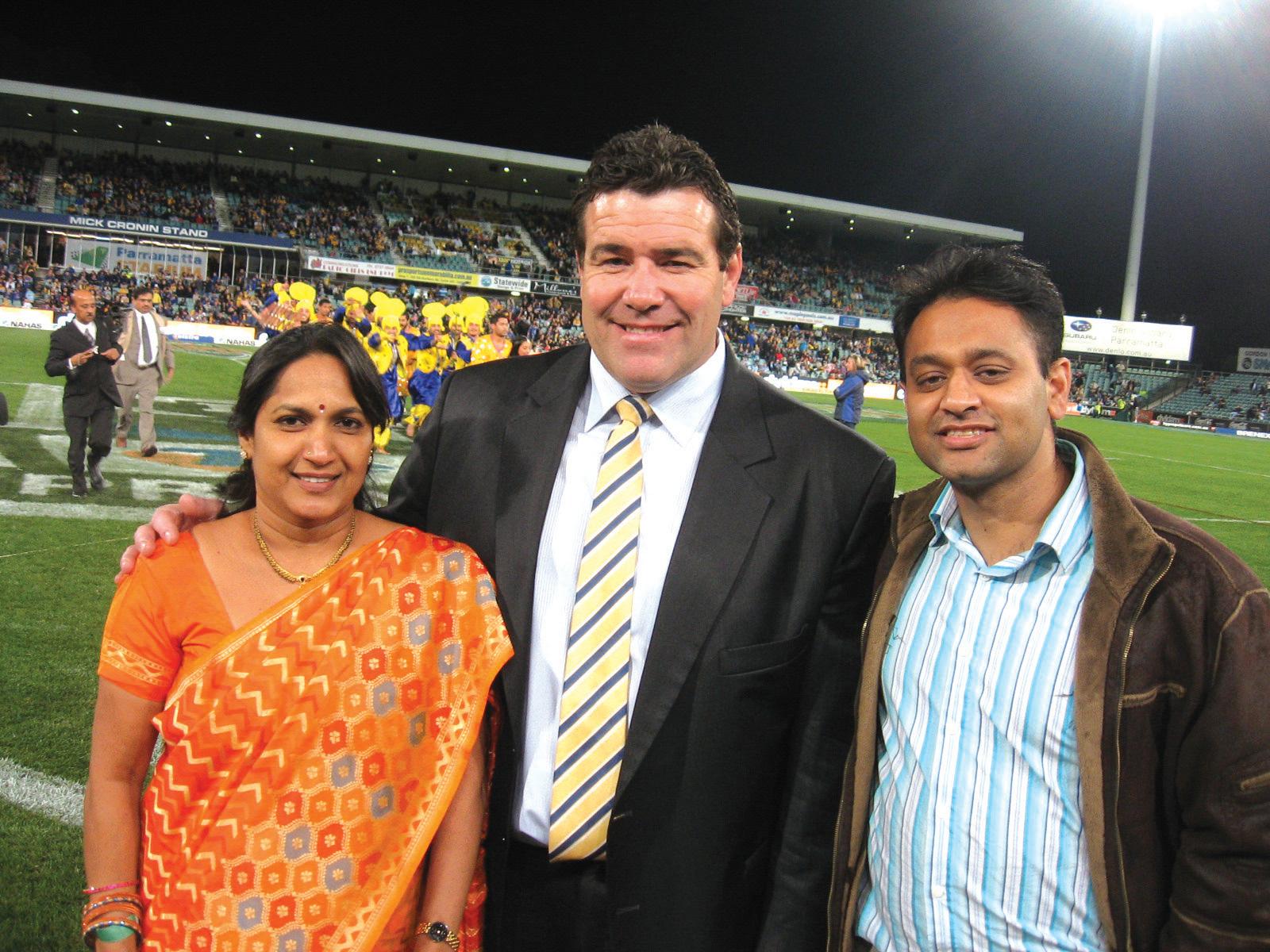
It remains to be seen whether the campaign will actually lead to increased club memberships. The product needs to be attractive. But there is no doubt it has already generated a great deal of goodwill and opened minds about how ethnic communities can better interact with core Australian institutions.
WITH 100%
JUNE (1) 2010 <> 13 NATIONAL EDITION www.indianlink.com.au
Tanveer Ahmed with Aruna Chandrala (UIA Chair) and Paul Osborne (CEO Parramatta Eels NRL Club)
FOR TARDE ENQIRIES. G S PACIFIC MARKETING (AUST) PTY LTD Phone: 02 8860 9659. Fax: 02 9629 7978 Mobile :0404 491 870 Email : gs_pacific@bigpond.com Available in all leading stores in Sydney
Tanveer Ahmed is a psychiatrist and opinion columnist with the Sydney Morning Herald
ENJOY THE AUTHENTIC AND TRADITIONAL TASTE OFINDIA .
NATURAL
INNER HEALTH
WHEAT FLOUR ENRICHED WITH FULL WHEAT BRAN AND FIBRE GOOD FOR YOUR
The Academy has a number of talented kids and about six have already been identified as those with the potential for making it as professional players, if they ever desire a career in soccer
Learning the game
BY SANJIV DUBEY

As cricket hogs the headlines back in India with stars like Sachin Tendulkar revered like some kind of god, the Indian national soccer team has hardly made an impact with their achievements. And as they have no Tendulkar-like champion in the team, the sport barely has a following even within the large Indian population. And when you compare soccer with cricket’s popularity among the migrant community here in Australia, soccer will finish a distant second behind cricket in terms of participation.

When you compare soccer with cricket’s popularity among the migrant community here in Australia, soccer will finish a distant second behind cricket in terms of participation
But the Footwork Sports Academy, working in tandem with the New Australian Sports Association and supported by Parramatta Park Trust and Indian Link, is looking to educate, accommodate and facilitate the migrant community with an opportunity to learn and experience soccer. This initiative, which also includes other sports, has gone a long way in taking the game to the next level.
Children as young as four years are coached and closely monitored as they move through the academy
from year to year. These young players are coached on their mobility skills with and without balls like moving with the ball, juggling, control, passing and shooting under the guidance of coaches. These skills are taught progressively at the appropriate age. The program runs all year round at Parramatta Park and is designed to help all players improve their basic skills required to play football at a young age. Without missing the fun, every session has smallsided games when children of the same age groups compete against each other. In addition, emphasis is placed on developing their motor skills, ball skills and co-ordination. This helps facilitate young players with their balance and speed of movement, which can also be transferred to any other sport if they decide to take up one in future.

Participating children have been a part of this ongoing program for some time now and their perseverance has started to show their potential. They may not be at the World Cup, for them Parramatta Park is where the action’s at, and they don’t like to miss any of the weekend games and the celebration of each and every goal they score. And the parents too, look forward to this unique experience of joy, excitement, fun.
Parents, for their part, need to understand that development in sports doesn’t happen in months, but takes years of effort coupled with ongoing encouragement, engagement and sheer determination. The Academy has a number of talented kids and about six have already been identified as those with the potential for making it as professional players, if they ever desire a career in soccer.
The Academy aims at developing these players and opening the right doors for them, offering them every possibility of carving a career in this sport.
As parents provide their children with the means to improve their academic results by sending them to different coaching classes, their children can make it in sports too. We all know that they need to balance studies with sports.
In today’s modern world we see that children deprived of sport tend to be prone to illness and fatigue, and they have a tendency to engage mostly in computer games which don’t allow them access to fresh air and exercise. Many of these children suffer from obesity, and depression commonly follows.
Amazingly, a majority of parents are still not convinced. However, making an effort in sports will give these children the chance for some exercise to build a healthy heart, as well as making them physically fit. They also learn the value of discipline, confidence and the art of being a team player, all prerequisites to a healthy and successful life.
The children at the Academy are excited with the presence of Socceroos at the World Cup and with their own hero David Carney’s inclusion in the team. This talented player’s sister Michelle Carney, herself an exMatilda player, is advisor for the development of soccer with Footwork Sports. They all aspire to be future David Carneys playing for Australia and wish him luck, along with the Socceroos.
For further information visit: www.footworksports.com.au or call 0433 669 334


14 <> JUNE (1) 2010 INDIAN LINK www.indianlink.com.au
An Academy that provides an insight and training into soccer is gaining popularity within the subcontinent community
Waking a sleeping giant
Serious attempts are being made to incite interest in football within India, through international grants and incentives, notes SANJIV
History
Soccer was introduced into India during the British rule, with matches played at the world-famous maidans of Kolkota. Modern soccer is not new to India, which is currently a country of cricket maniacs. So when, where and how will this nation of over one billion people make an impact on the world arena in this sport? It’s a question no-one can seem to find an answer to… as yet.
The history of Indian soccer is divided into two distinct parts – soccer pre and post Independence. In the days of the British rule, football was popular mainly in the present state of West Bengal, and games were mostly confined to this state. Popular clubs like ‘Mohan Bagan’ and ‘East Bengal Club’ came into existence during this era. The Mohan Bagan Football Club dates back to 1889, when soccer was being introduced to the rest of the world as well. Mohan Bagan played a significant role in bringing together talented and patriotic Indians, and in 1911 the first all-Indian team beat the British and won their first IFA cup.

Current scenario
The Vision Asia programme for soccer was originally launched in 2004 with the Asian continent split into six zones, with China and India in individual zones because of their size. The launch states were Delhi and Manipur, and while Manipur calmly and quietly has been doing its work to fulfil its part as one of the best Vision Asia projects, Delhi never really got off the ground. For Delhi it was a long time coming, but now it is official that Vision Delhi is, at least for the moment, history. For the Asian Football Confederation (AFC) it doesn’t mean much except closing down a chapter of a continent wide development program, but for Delhi Football it means embarrassment and losing the opportunity to garner help in developing football in the capital. Although Delhi’s failure has often been highlighted, the success in Manipur hasn’t made big headline news. A couple of years ago Kerala and Tamil Nadu were added to the programme, while Goa was added last year and West Bengal is the next state waiting in the sidelines.
The All India Football Federation (AIFF) also receives an annual aid grant of $120,000 from the AFC to help improve awareness and involvement in the game, and promote promising players. The AFC grant helps the AIFF pay coaches at the junior level and ensures preparing of a sound youth development programme. The AIFF is also planning to appoint an assistant director of coaching in all the five zones in the country with the help of this grant.
The CEO for the upcoming ONGC I League Sunando Dhar has issued a stark warning to the old football clubs that they need to change or pack in. Dhar, as a representative of the Asian Football Council has set out stiff new criteria for professional football clubs, which have to be compulsorily included into the clubs’ constitution. If they fail to meet these criteria by December 31, 2010 they will not be allowed to play in the I League or Asian championships. Once the Indian league becomes fully professional, they will
There is some interest within the A-league teams here to sign an Indian soccer player, thus helping in converting the migrant community into Sydney FC fans
be eligible to take part in the Asia Club Championship which was won by Adelaide United last year.

I suppose resistance will come from old clubs, namely Kolkata’s East Bengal and Mohan Bagan, but we hope commonsense will finally prevail. New I-league teams namely Pune FC and Lajong from Shillong have been very successful in doing the unthinkable, as they are now witnessing a large following and football has become a big passion for the local city people.
A regretful development has been Mahindra United’s pull-out from the game at this important juncture, after finishing fourth in this year’s National League. But it is understood that AIFF have received many offers from business houses willing to become franchises, and hopefully that will change the perception of football in India.
A promising future?
Total Sport Asia believes that there is enough money in India, and there is also international money looking for a window into Indian football. However, the only limiting factor to attracting millions of dollars is the need for major structural changes in the I-League that will ensure protection for investors. There are talks that Mr. Lalit Modi could step in with innovative ideas and project Indian football in much the same way as the IPL, as
DUBEY
common opinion is that there is lack of dynamic leadership. There are also talks on benchmarking different models of soccer governance in the world and tailoring one to suit Indian conditions. The Australian model is in the forefront in this initiative.
Soccer in Australia and even in India has never looked in better shape with Australia qualifying for the FIFA World Cup 2010 and Englishman Bob Houghton as the Indian team coach. The Indian soccer team qualified for the 2011 Asia Cup in Qatar with Australia, South Korea and Bahrain in their pool, which will be played from January 7-29 next year. This is seen as a great and positive achievement for the Indian football team; the last time India qualified for the Asia Cup was in 1984. Bob is to help India qualify in the next World Cup.
In a meeting with ex-Socceroo and SBS
sports anchor Craig Foster, he mentioned that there is a keen interest within the A-league teams here to sign an Indian soccer player, thus helping in converting the migrant community into Sydney FC fans.
Imagine Indian soccer star Baichung Bhutia playing for Sydney FC! I am quite convinced it will bring loads of Indians through the gates, and increase their membership too.
We hope all the effort and due recognition collectively helps in awakening Indians to help Indian football. Hopefully change will happen, and the standards of Indian soccer will be uplifted and improved, instead of an untimely, ignominious and unfortunate demise.
And perhaps one day in the not-toodistant future we will have our own heroes at the World Cup. But for the moment, let’s wish them luck for the upcoming Asia Cup.
JUNE (1) 2010 <> 15 NATIONAL EDITION
FOOTBALLSPECIAL www.indianlink.com.au
An Indian tribute to Ronaldinho at the last World Cup
Photo: AP
Live, Laugh, Love Football!
What is it about football that gives it precedence even over cricket for some members of the Indian community?
BY PREETI JABBAL
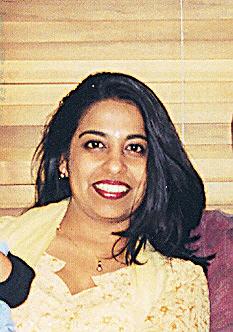
A football tragic once wrote that Football is an action game where art, science, physics and magic all collide in a wonderful spectacle. As the world’s largest sporting event, the game has a formidable and often fanatical following, including many fans from cricket-loving India. As 32 teams from across the world gear up to compete in the FIFA World Cup in to be held in South Africa this month, we talk to some members of the Indian community to find out why they love football, or soccer, as it is called in Australia!
The Football Family
For Manasi and Sachin Mishra their love for football is not confined to screaming themselves hoarse as their son Joshua kicks a goal. They have taken parent involvement to the next step by volunteering to help as team manager and coach. Wesley College student
Joshua and his dad Sachin believe that being happy, healthy and rested is a prerequisite for every game
Joshua plays for Glen Waverley
Junior Soccer Club under 11-Eagles (Kangaroo league).The club is one of the many family-run football clubs affiliated to Football Federation of Victoria. The FFV provides training, guidelines and code of conducts for clubs, officials and players and offers support as an umbrella body for clubs like GWJSC.

Joshua started playing football at the age of 5 with goal kick in Sydney. The Mishra family then moved to Melbourne, and Josh joined goal kick in Melbourne. Over time he transitioned from playing small sided games to playing well on the bigger field. Said mum Manasi, “We felt that football had a bigger profile in Melbourne because of the large European population that has settled here. Football is a global game now but has always enjoyed a huge following amongst Europeans, especially Italians and Greeks, who form a large chunk of the multicultural population of Melbourne.”

Joshua and his dad Sachin believe that being happy, healthy and rested is a prerequisite for every game. They ensure that they have had a good night’s sleep before every match. The Mishras avoid late nights, especially Saturdays. This limits their socializing to a large extent as matches are generally held on Sunday mornings. “Our priority is to create an atmosphere where Josh can play and excel, if that involves giving up socializing, so be it,” declared Manasi.
“Josh is a confident kid however he can be almost superstitious when it comes to football,” claimed
give him clothes that he may have worn in a match that they lost. It is amusing to see him fret so much about these trivial matters before a game,” revealed Manasi. “But we know Josh takes his game seriously and so does Sachin, because he offered to coach the team last year,” she continued. Sachin had played football in India through school and college, and also participated in the popular Santosh Trophy games in Jabalpur. Sachin volunteered to coach the team and put in several hours every week in training and improving the players. “This year Sachin stepped back due to work commitments, but I put my hand up to be the team manager,” said Manasi.
Manasi’s Sunday mornings begin very early as she picks up cakes and bread rolls from the bakery, opens the canteen, gets the oven ready and defrosts the sausage, pies etc. in preparation for the team. As manager she looks after parent helper rosters, fixtures, fundraisers, does fruit and food duties… the list goes on. “I’m not complaining, I quite enjoy the role and can be a bit of a Hitler to make sure things run smoothly,” she confessed. “I like the multicultural aspect of the game. It is cohesive in a sense that it brings the whole world together in enjoyment of a simple, yet spectacular sport. My favourite team in this World Cup will be the one that has most good looking players!” she added, tongue in cheek. Josh, on the other hand, goes for Chelsea and Sachin thinks England and Spain have a real chance this year.
Fanatical about football
Year 11 student Vihan Muthanna from Manly Selective Campus, Sydney says, “I love football because its attractive, the action involved in the game and the movement of the ball creates a great visual, the atmosphere it generates is amazing and it is exciting to play.” Vihan and his friends intend to watch some of the World Cup games on the big screen at Sydney’s Darling Harbour. “Watching the games there will be more fun because of the great atmosphere generated by thousands of football fans who will brave the elements to support their favourite team,” he said.
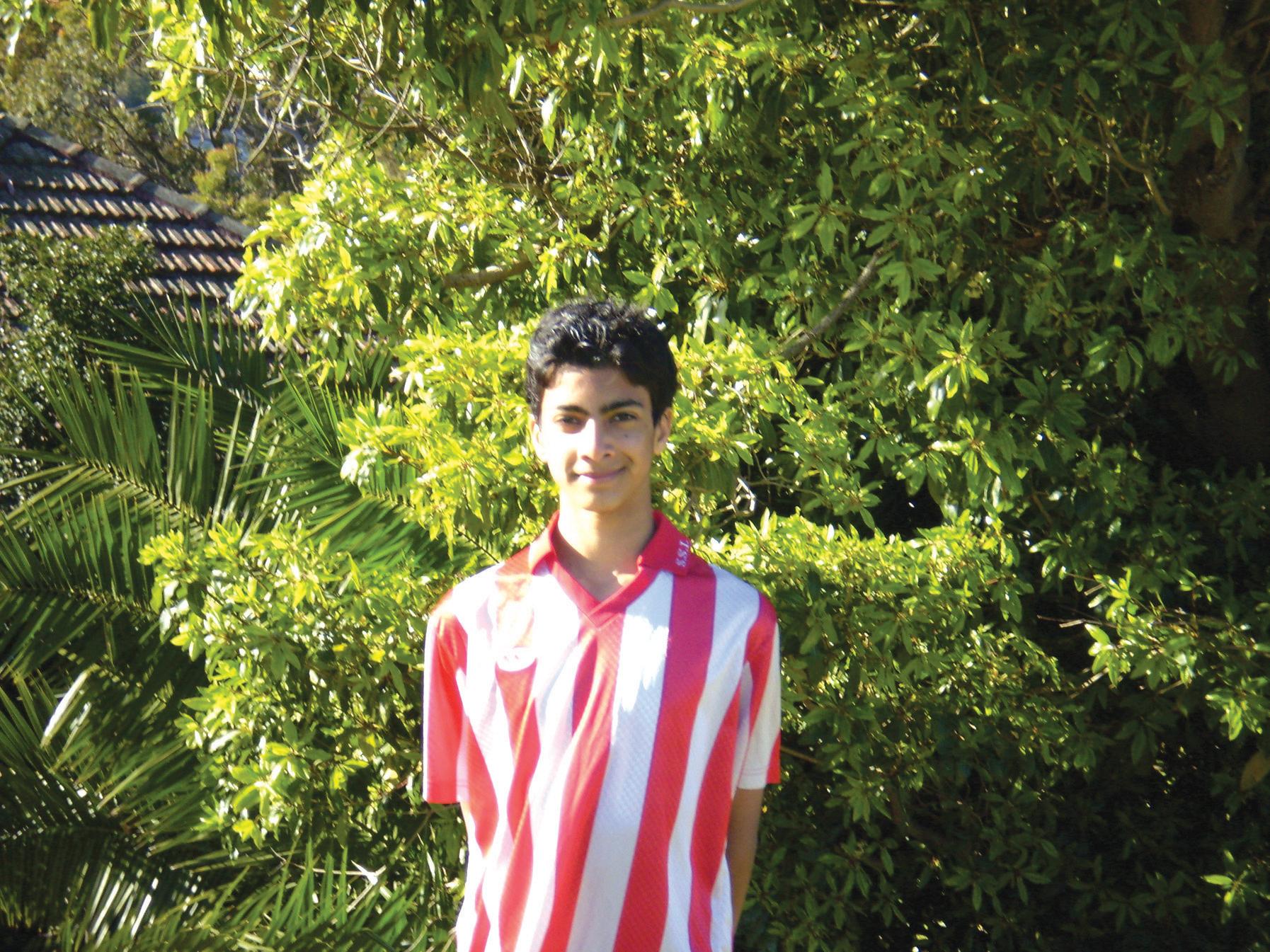
Vihan’s favourite team is Spain. “I really like the team and although they have failed to win a World Cup in the past, their confidence will be high following their Euro 2008 championship. I will be supporting the Australian team as well, but the Spanish team has all my votes,” said Vihan who plays Division 1 football for the North Sydney Bears. According to Vihan, the Indian team is improving, but will take another 8-10 years before they get into the top league.
Vihan began football in the Under 8s due to peer pressure. Many of his friends were involved with the game and he decided to join them. “Originally it was just a social game for me, but by the time I got to the
under 12s, I started getting serious and became more competitive. For the last few years football has become a major part of my life. I practice four days a week for at least a couple of hours each day, sometimes more,” said Vihan as he described his football schedule. “We recently competed in the States knockout competition and made it through to the quarter finals,” he added proudly.
Vihan’s parents Vidya and Vinod Muthanna fully support his involvement in football. “It is a lot of driving to and from matches and practice sessions, as well as countless hours spent in waiting for his game to finish, but it is definitely worth it!” claimed Vidya. “He loves the game and a lot of his passion has rubbed off on us. We are looking forward to the World Cup as much as he is,” she added.
This winter, thousands of Australians will snuggle up with friends and family to watch the action unfold in Johannesburg and it won’t be long before we will know who is a likely winner of the coveted World Cup. In the meantime, fans have invested in lucky solo undies (to support the Socceroos), got their slabs of beer stocked up and barbies ready to be fired up. Let’s collectively hope and pray that elements like the weather, terrorists and controversies don’t mar this wonderful event.
On with the game! And may the best team win!
16 <> JUNE (1) 2010 INDIAN LINK FOOTBALL
Vihan Muthanna
Manasi and Joshua
Network Marketers required
Experienced, Successful Network Marketers who are looking for a Ground Floor Oppertunity with a huge, debt free, International Company soon to launch into the Sub Continent. This Company has just opened in Malaysia and Korea. Only one product, no warehousing, health beverage. We are looking for 3 People. Must be Ambitious, Hard working and Teachable.
Give me a call. I am 78 yrs old and have just returned from Malaysia. I am only looking for people who are genuinly seeking 'their Big Chance' in life and are prepared to work hard to get it.




JUNE (1) 2010 <> 17 NATIONAL EDITION For expert coaching in Lowest Fee Guaranteed IELTS IELTS GURU Suite -1, 71 A Macquarie St, Parramatta, Phone 0411 520 546, 9687 9741 www.ieltsguru.com.au • Power Packed Sessions. • One and Two Weeks Crash Courses Available. • Money completely refundable, if not satisfied with the first tuition session.
Call Helen on 0414461673
Football greats come together at the sport’s most prestigious event, creating an impressive and promising line-up of talent
BY RITAM MITRA
As the FIFA World Cup 2010 approaches, there is great hype surrounding Maradona’s in-form Argentinean side, or the always difficult-to-beat Brazilians, and closer to home, the mighty Socceroos. But when it comes to football, India has

GERMANY
Germany showed clinical form in their qualifying campaign, accounting for Russia in a devastating fashion. They seemed to effortlessly march to the UEFA European Championship final in 2008, and it would be folly to count the seven-time FIFA World Cup finalists and three-time winners out of the top contenders. Player to watch is Miroslav Klose. He seems to perform well on the big stage, at Euro 2008 he scored the second goal for Germany during both the quarter final and semifinal against Portugal and Turkey. Apart from Brazil and Italy, Germany ranks as the team that has won the FIFA World Cup the most times, and in an interesting feat, have won all four of the penalty shootouts they have entered in World Cups. With a somewhat dangerous group, this might be an important factor.

traditionally always been a nation of spectators. It can only be frustrating to the game’s administrators in the subcontinent that there is such a great disparity between our number of footballers, which is very few, and the number of our football fans, which is enormous.
As the opening match draws closer, let’s take a look at the players that can’t be missed, the teams to watch out for from the 32, as well as examine one country that will be watching very closely – India.
BRAZIL
Brazil is always the name that springs first to mind when considering favourites, and it’s not without good reason – the five-time winners of this tournament are currently ranked first in the FIFA world rankings, and are in great form going into South Africa, having won the Confederations Cup there last year. They have lost only once in their last 24 matches, beating teams like Ireland, Argentina and England along the way. They boast an incredibly star-studded line up, stretching all the way from their goalie Julio Cesar to prolific striker Luis Fabiano. The key player to watch – midfielder Kaka Since Ronaldinho was controversially left out of the squad, Kaka will be the controlling presence in the midfield, where he is already known to dominate. He has the ability to score from anywhere, and will be one of the most important factors in Brazil’s performance. However, although they are natural favourites, Brazil has one of the oldest squads at the World Cup, with an average age of 28.6 years; they have less pace and energy than their younger counterparts. Brazil also carries the burden of hopes and expectations of 192 million people back home – they are somewhat the India of the cricketing world (albeit perhaps a bit better, following India’s recent efforts against Zimbabwe). Nevertheless, Brazil is definitely the team to watch.

SPAIN
Spain are currently second on the FIFA World Rankings, and not without good reason either. Maturity, resilience and also the ability to overcome adversity were all prevalent during their qualifying campaign, and are the reigning UEFA EURO 2008 champions. While in their captain, keeper Iker Casillas, they have one of the world’s finest goalkeepers, there are few better finishers in the game than David Villa and key player to watch, Fernando Torres. Torres has blistering pace, and aided by a talented line up, he will be an important factor, as he was in helping Spain claim their first major title in 44 years at EURO 2008. The side is fairly balanced, and is in an incredible vein of form, having won all ten of their South African qualifying matches. Spain finished their qualifiers as the European Zone’s second-highest scorers, with 28 goals.

ENGLAND

LEADING LIGHTS TO LOOK OUT FOR G D H
England has not lived up to any of the hype that has surrounded their “golden generation” of players in the last decade or so, and it may be one final chance in 2010 for some of the most well-known faces today. England stormed to nine wins out of ten matches in their European Zone qualification, blasting 34 goals in the process, a zone-high. Their line up is comparable to Brazil’s, with several household names including captain Rio Ferdinand, vice captain Steven Gerrard, Frank Lampard, Jermain Defoe and key player to watch, Wayne Rooney Rooney was awarded the FWA footballer of the year 2009-10, as well as the PFA Players’ Player of the Year, and shouldered much of the responsibility in the qualifying stages. He will surely want to make a difference for his side, which has a penchant for underperforming on the big stage.

18 <> JUNE (1) 2010
FIFAWORLDCUP
ARGENTINA
Diego Maradona has himself claimed that this year’s Argentinean World Cup side is even better than his own legendary 1986 World Champion side (although he somewhat contradicts this by saying he will run naked through the streets of Buenos Aires if his side goes all the way).
And Argentina has no excuse for not dominating their early competition, with possibly the most explosive side in the tournament. And you cannot say too much about their chances without mentioning the key player to watch, perhaps in the entire tournament – Lionel Messi

A team’s hopes cannot rest entirely on one man’s shoulders in football, but if they could, then Argentina’s plight is the perfect example. A lot of Argentina’s hopes are pinned on this superstar, who is generally recognised as the best footballer in the world at the moment. Now it’s up to how Maradona can best exploit his talent – the eccentric boss is not known for his strategic prowess, but if he gets it right, there is no reason this team cannot lift the cup. The team does, however, feature some brilliant attacking talent including Carlos Tevez and Diego Milito, and should have no difficulty scoring goals.
B F
ITALY
Defending champions. Familiar faces. With what appears at a glance to be one of the easier groups in the competition, Italy cannot take their competition lightly just because of a stunning tournament four years ago. Indeed the group features Paraguay, who finished a close second to Brazil in the qualifiers, and a dangerous Slovakia. Italy is a team synonymous with experience, and is entering their 17th Finals campaign. They will depend on stalwarts such as ever-present centre-back, Fabio Cannavaro and Alberto Gilardino in attack. The key player to watch: star keeper Gianluigi Buffon, who has just begun to recapture his best form, which had him labelled as the “best custodian in the world”. The aura surrounding past sides is not quite so prevalent this time around, and Italy will rely on experience crucial at this level to see them through.

D C
AUSTRALIA
Australia is not considered, by the wider football world, as having a realistic chance. And with big teams such as the ones already mentioned, this is not an unfair assessment. But with a battle-hardened unit featuring many of the names and faces from the impressive outing four years ago, Australia was one of the first nations that qualified for South Africa 2010, and remained undefeated across their eight matches in the final stage, five points clear of Japan. Heroic goalkeeper Mark Schwarzer will be crucial, and his form suggests he will be a force to be reckoned with, following a record run of 7 matches without conceding. However, the key player to watch for Australia is, of course,
 Tim Cahill
Tim Cahill

The attacking midfielder scores at an amazing conversion rate for the national team, with his brilliant positional sense and aerial ability. He will be important in attack for a side that is centralised around rocksolid defence.
GROUP-LESS
INDIA
Recently, India-based IT outfit Satyam put its name forward as a second-tier sponsor of the 2010 FIFA World Cup, and it is a sad fact that this is India’s closest relationship with the World Cup this year. It may surprise many to know that domestic cricket in India is far less popular than domestic football. India is thus one of football’s most rapidly growing markets, and we will soon see World Cup Fever in India. The key player to watch in Indian football is, however…cricket. It is no coincidence that the national hockey team has been reduced to nothing, and that our greatest achievement outside the cricket field lays in rooms with Vishwanathan Anand – there is just far too much emphasis on cricket in our nation. While this can be seen as healthy for our cricket side, there is a great need of a better grass-roots infrastructure for our aspiring footballers. There are teens playing barefoot in the streets, and there is great passion – but as former coach Steven Constantine put it, “there is no development at the youth level. That, and coach education are the reasons why we are not as advanced as we should be”. It does not help matters that the Sport Authority of India, which controls national youth football, receives no money from FIFA. And as with all major associations in countries as large as India, politics plays a huge role, and is severely halting progress. Captain Baichung Bhutia says, “I definitely see a lot of talent here –even more talented than English players at a young age.” But until more awareness is raised of the football conundrum in India, efforts to improve matters will be superficial. In any case, let’s all look forward to the FIFA World Cup 2010, and maybe it’s a blessing in disguise that India doesn’t qualify – there is no chance of disappointment. It promises to be a fantastic tournament, so let’s go the Socceroos!
JUNE (1) 2010 <> 19 www.indianlink.com.au
night at Sydney Uni’s Manning Bar
Fun, frolic and friendship – that was the mantra at a recent Friday night dance party at Sydney Uni’s Manning Bar.
Titled Mantra: A Traditional Bollywood Affair, the agenda on the night was to make new friends and have fun, in a make-shift Indian setting.

Despite mid-semester examinations, assignments and course load pressure at this time, a good 170 students turned up for the event. Showing great zeal and enthusiasm, many were dressed in Indian clothes, and all readily jumped onto the dance floor for a bit of bulb-changing-and-dog-patting.
Organised by Arijit Banarji and yours truly along with other Sydney Uni students,
the event had the support of the University of Sydney Student Union and the Indian Consulate, and was promoted at UTS, UNSW and Macquarie University as well.

To create that ‘India-mahaul’ (feel of India), guests were greeted in the traditional way with aarti (lit earthern lamp) and teeka (forehead adornment).

Consul General Amit Dasgupta inaugurated the event with his guest address speech. The fun and frolic kicked off with MKF Fusion band lead by Mahmood Khan. Their song Like the River a huge hit, went down particularly well.
Later during the night DJ Rav and DJ Sunil Spinz hit the DJ console and the dance
floor flashed with the colours of Bollywood – Indian as well as non-Indian students, clad in their saris, salwar kameez, kurtas, sherwanis, showed off the Bollywood jhatak-mataks as best as they could. Rupi Hothi from Platinum Dholis came on with his dhol to rock up the night and reload the energy and enthusiasm for a second round on the dance floor.
It was non-stop RNB, hip hop and Bollywood (Sajna ji vari vari, Desi girl, Kajrare, Beedi, Chaska, Dhan ta naan, Aahun aahun and Hadippa), until the night was called off at 12.00 midnight.
Among the guests Aayush Sharma from GOPIO Glenwood, Soumen Sen and
Priyanka Verma from Sydney University, Tejas Thete from Macquarie University (all from the Combined Universities Cultural Night 2010 committee), Zahra Babuji from New South Wales University, Ashima Punj from University of Technology – Sydney, Kanika Singh, and Dyasmin Sandhu from University of Sydney.
Nothing like a bit of balle balle to make new friends.
Astha Singh
PhD Candidate (Plant pathology) Faculty of Agriculture, Food and Natural Resources University of Sydney
When Guru Dutt came to Avoca Beach
Late last month a bunch of Hindi film tragics from Sydney drove down to beautiful Avoca Beach on the Central Coast to see Guru Dutt and Waheeda Rahman.

The 90-km drive, usually picturesque, may have been wet and miserable this time, but it could not dampen the pyaasa spirits of die-hard Guru Dutt fans.
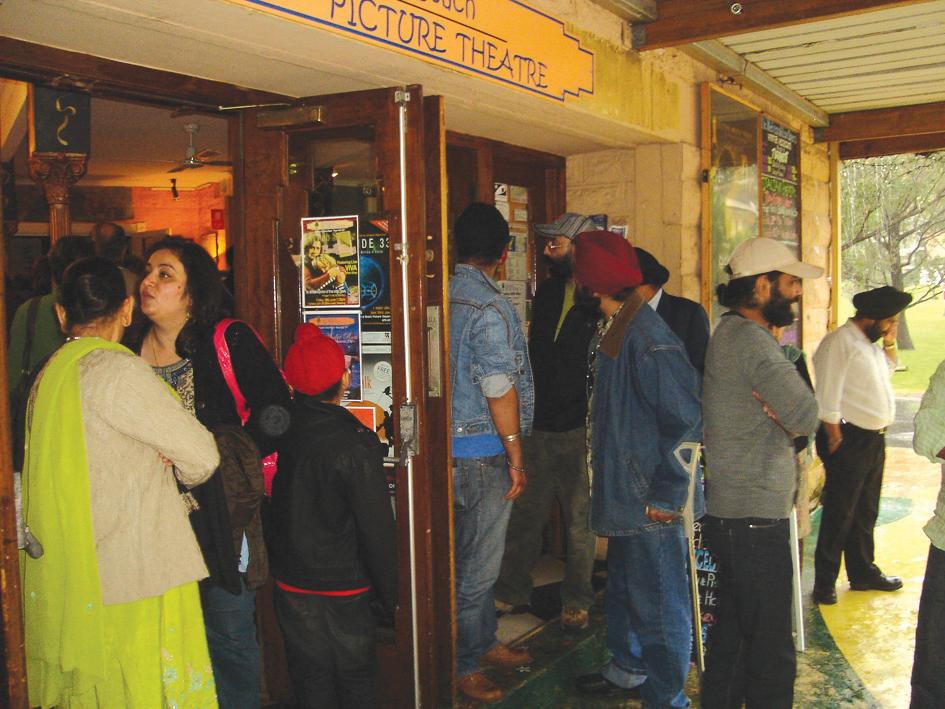
The foyer of the Avoca Beach Picture Theatre, which was screening the 1957 classic Pyaasa (The Thirster), was warm and welcoming. Milling around were, surprisingly, a fair few locals from the area as well.
When it began, the film, voted by Time magazine as one of the top 100 well made movies of all time, impressed as it always does. Its powerful and technically superb direction, well-crafted frames, and the histrionics of Guru Dutt and Waheeda Rehman, created a magical cinematic experience indeed. The teasing Jaane kya tune kahi, the playful Hum aapki aankhon mein, the totally mast Sar jo tera chakraye, and the angst-filled Yeh duniya agar mil bhi jaaye to kya hai - all tugged
at the heartstrings like they do every single time!
Unfortunately for the locals there were no subtitles. During the interval, the more sophisticated nuances of the movie were explained to some of the audience who did not understand the dialogue. Sam, a lover of Indian movies, said he “...was glad to be able to watch this classic with
friends”, while Andy said he was “...soaking in the atmosphere the movie has created..”.
Norman Hunter, the founder of the Avoca Beach Picture Theatre, revealed that the screening of Pyaasa as a trial run, went off quite well. His wife Beth and he have occasionally picked other Indian films to screen, and found that audiences from all backgrounds have enjoyed them. “We love to bring quality films to a discerning audience,” he said, claiming that the introduction of Bollywood films has added on to their Italian, French and other cultural events.
“We are not just a cinema,” he noted, “We like to provide interesting, challenging and varied cultural experiences. We enjoy people – and provide them with an opportunity to have a good time”.
Pyaasa has certainly whet the appetite: the Bollywood screenings look set to be a regular at the theatre, with the more recent commercial hit Lage Raho Munnabhai already lined up for the long weekend (June 11). And it will be more than just Munnabhai – there will be supper (Indian of course), a sarod recital by Sardool Singh and a dance performance by Jita Singh.

All we can say is, Lage Raho Normanbhai!
Report and pics courtesy Samit Chandra
20 <> JUNE (1) 2010 INDIAN LINK
www.indianlink.com.au
High achieving students felicitated by GOPIO
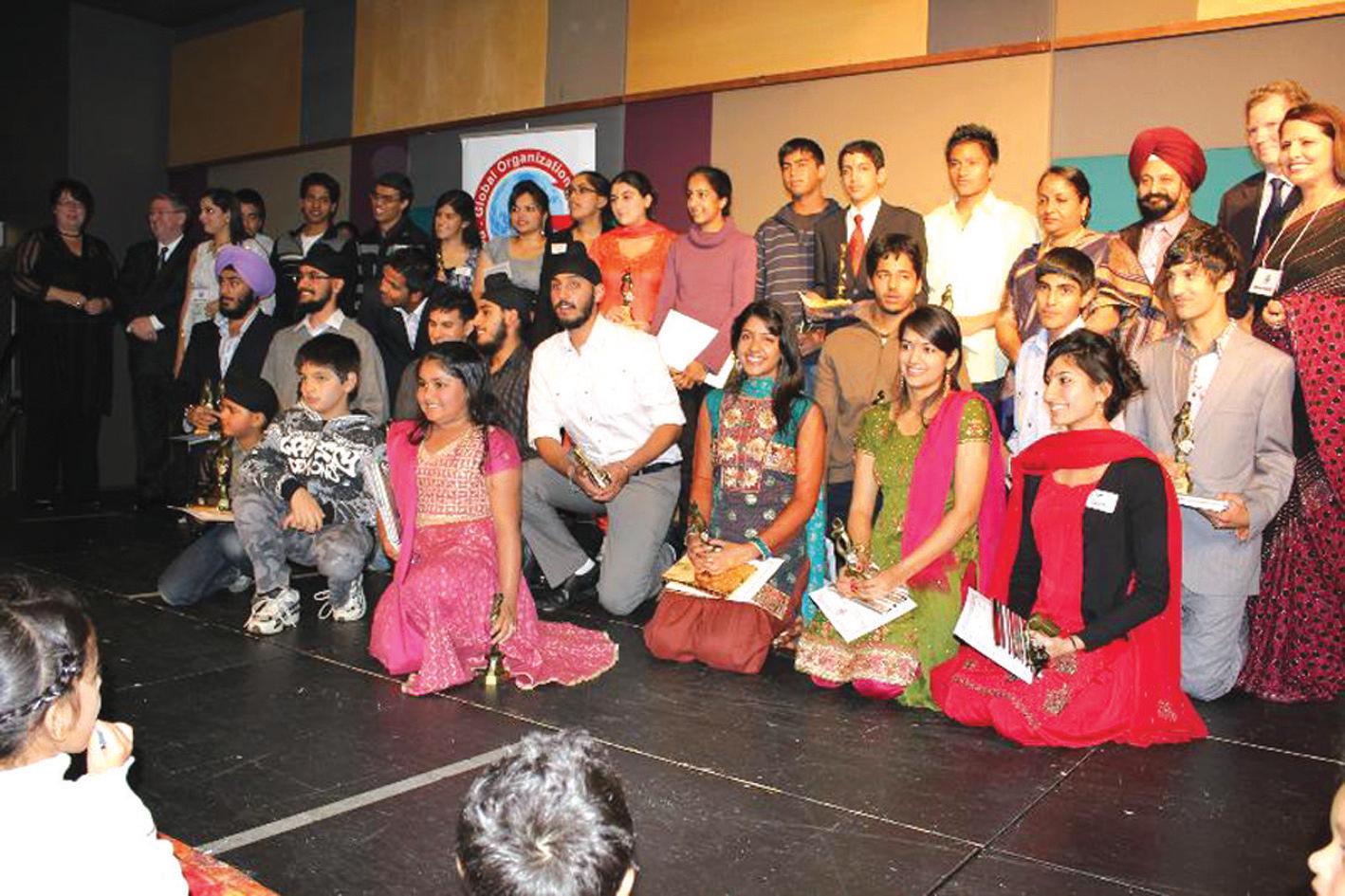
The Sydney chapter of GOPIO (Global Organisation for People of Indian Origin) recently invited dignitaries from different political arenas to applaud the success of Australian Indian students in the fields of academics, art and sport.
The Pioneer Hall at Castle Hill turned into a centre of bustling activity with supportive community members and proud parents congregating to congratulate the deserving winners. Selecting the winners was no easy task, as there were a number of contenders and the competition was quite tight. The three top winners in academics earned an ATAR of 99.95 – no mean feat! There were also toppers in individual subjects and sportspersons who represented the state in hockey, athletics (field events) and cricket, among other sports. Among the award winners were Kamal Prakash Singh, Shibalik Misra, Rohan Dalal and Aarushi Sahore among others for academics; Balraj Singh Ougra, Amandeep Singh Dhaliwal and Arshdeep Singh Dosanjh (all for sport – volleyball); Jagveer Singh Panesar, Karan Singh Bajwa and Soumil Chhibber (all for cricket); Simren Kaur and Jairaj Singh Bhatti for athletics, and Priya Maheshwari for Hindi and Cheryl Khurana for drama.
The evening began with lighting the lamp by chief guest Her Excellency Mrs Sujatha Singh, Indian High Commissioner along with former Premier of NSW Nathan Rees, Federal MP Julie Owens, Peter Primrose representing the Premier and Michael Richardson representing the leader of the Opposition. This was followed by an invocation by Ms. Jasmine Gill, an Indian Link Idol aspirant. In her address, Mrs Sujatha Singh congratulated the winners and said that she had flown in from Canberra just for the occasion, as she wanted to be a part of the celebration. She also spoke about the positive contribution of Australian Indians. Mr Primrose read a message from Premier Kristina Kenneally
applause, the students were awarded with trophies and certificates by the dignitaries. They were also presented with special gifts from Mr Amit Dasgupta, Consul General of India, who was unable to attend due to prior commitments. The top 3 achievers were presented with a laptop each, sponsored by Sydney-based Indian businesses. Attending dignitaries were gifted with an inspirational, spiritual book by
It was an evening of celebration, pride and achievement and Well done students, for your commendable achievements and well done GOPIO, for making it possible.
GOPIO has chapters in nearly 19 countries across the world and is known to work extensively with the Indian diaspora.

JUNE (1) 2010 <> 21 NATIONAL EDITION
COMMUNITYSCENE www.indianlink.com.au
Nima Menon

22 <> JUNE (1) 2010 INDIAN LINK

JUNE (1) 2010 <> 23 NATIONAL EDITION
Seeking the sublime through music and dance
Larger than life is the Vishwaroopam of Mahavishnu, and so was the canvas Padma Balakumar chose to paint with her production Namami Narayanam, staged for a fund raising event by G.O.D (Global Organisation for Divinity) at the Bahai Centre recently.
The repertoire for the evening was varied with compositions from Thyagaraja, Annamacharya, Purandara Dasa, Mirabai, to name a few and the dancers expressing themselves with lyrics written in Telugu, Kannada, Hindi, Sanskrit and Tamil.

The performance began with the serene chanting of the slokam Shanthakaram Bhujaga Shayanam executed with grace by Padma Balakumar. Padma’s devotion and total involvement set the tone for the evening. The program was segmented into three parts, the first exalting the greatness of Lord Vishnu, the second on Lord Rama considered to be one of the most noble of the avatars of Mahavishnu and the third on lord Krishna one of the most popular of the avatars of Mahavishnu
The Vishnu kauthuvam was performed with precision by the senior dancers of Nrityagriha and summed up beautifully the ten avatars of Mahavishnu. Sriman Narayana, in a faster pace than is usually heard in concerts, followed, where the dancers described the lotus symbolism associated with the lord and hailed him as the lord of the seven hills. One of the highlights of this
segment was Padma’s portrayal of a nayika who on seeing the grandeur of a procession of the Lord is totally enamoured and loses herself in sringara bhakthi. The nuances of this emotion were ably brought out by Padma.
The segment on Rama was a musical treat as one heard compositions contrasting in speed, content and expression. There was the peppy item in mand performed by some of the junior students of Nrityagriha contrasted with a sedate deeper composition of Thyagaraja performed by Padma and Malavika. The choreography of dancers moving in and out of stage to portray the different scenes, was cleverly used to present the various stories. One scene that stood out for its intensity was when Rama breaks the bow to win the hand of Seetha. Padma as Seetha filled with anxiety and Malavika as Rama confident but humble were both very convincing.
The segment on Krishna is always a visual treat and Vishamakara kannan by some of the younger dancers of Nrityagriha stole the show. The gopis with pots and beautiful costumes danced with abandon describing the mischievous pranks of Krishna gaining a loud cheer in response from the applauding audience. The program concluded with a thillana in Brindavani preceded by a bhajan Hari tum haro by Mirabai.
The recording for the dance was orchestrated by Prema Ananthakrishnan (Vocal), Balaji Jaganadhan (Violin), Bala
Sankar (Mridangam). Melodious and deep at the same time, Prema’s voice captured the emotions presented by the dancers. Balaji Jaganadhan’s violin resounded touching chords deep inside the self and Bala Sankar kept all of them in rhythm with a firm hand, on the mridangam.
The evening also included an hour of very melodious devotional music aptly titled Madhura Geetham by well known musicians in Sydney Smt.Uma Ayyar and Smt Mythili Narayanaswami Iyer accompanied by Sri R.Narayan on the mridangam. They rendered some of Muralidhara Swamiji’s kirtans, Abinava Jaladharand Prema swarupa premika varadha.
Evergreen and popular numbers like Jagodhodharana, Harivarasanam, Bho shambo
100 % GUARANTEED
100 % GUARANTEED
and Sri rama chandra kripalu bhajamana kept the audience involved and be a part of the nama sankeertanam. Elaboration in the form of a vrutham followed by a song on goddess Saraswathi was very novel and well appreciated.
G.O.D - an organisation promoting divinity to create peace and harmony for betterment of human society without any social, cultural or geographical boundaries - achieved its objectives with devotion dominating the repertoire presented that evening through the medium of music and dance. At the same time it attracted a large audience, raising funds for the building of a prayer house called Namadwaar.
DURGA DEVI JYOTISH MANDIR World Famous Astrologer
Panditji Srinivasaraju & Kashi Vishvanath
Panditji is an expert in Palm, Face, Photo Reading, Numerology, Horoscope & predicts your past, present & future. Are you suffering from any of the following problems: Get advice and solutions in health, family, marriage, love, business, job, finance, promotion, husband & wife relationship, property, court, children, enemy, education, immigration etc.
Performs pooja for Grah Shanti, Dosh Nivarana, Astabandana, Mantra Shakti, Laxmi Chakras Pooja for your Home or Offic PROTECTION FROM ANY MAGIC Shakthi Pooja & any evils don’t worry any more... Lucky & Vasikaran CALL FOR APPOINTMENT
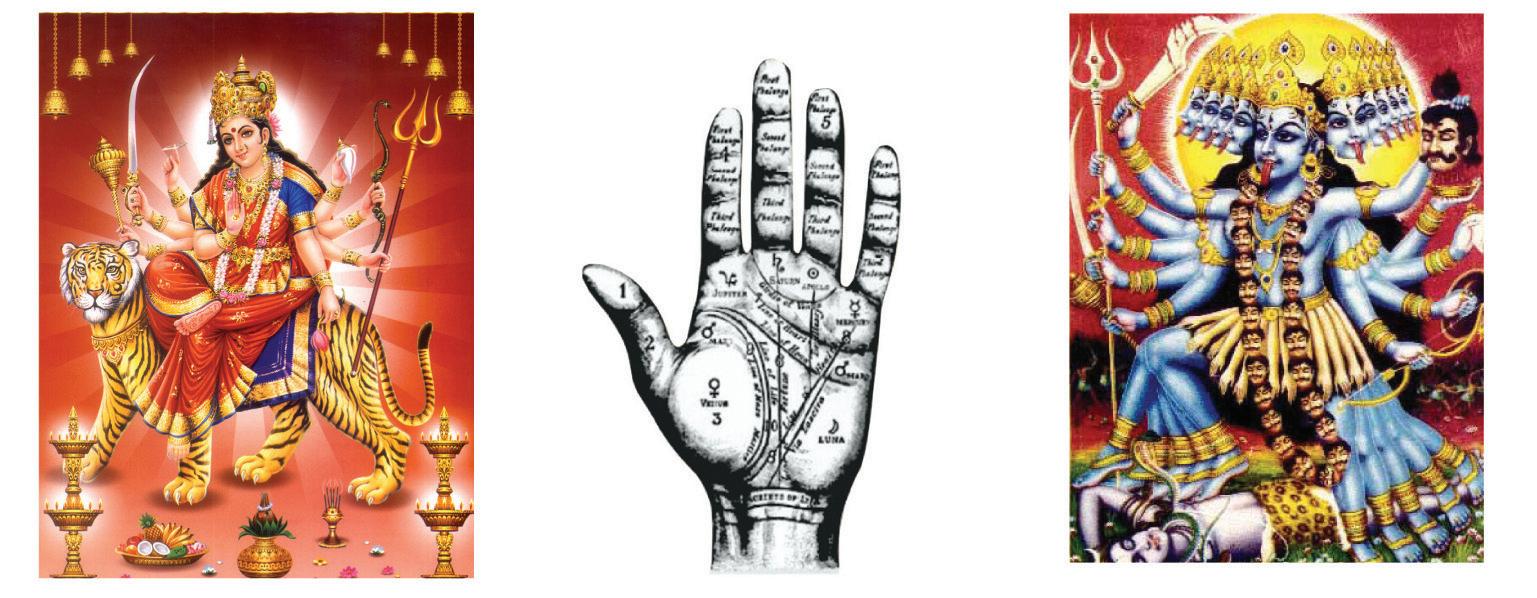
INSIDE THE SHOP - INDIA IN AUSTRLIA , 5 BELAR STREET, ST., MARY’S HOME: 22 The Kingsway, Wentworthville (Opp. Train Station) CALL FOR APPOINTMENT
100 % GUARANTEED
24 <> JUNE (1) 2010 INDIAN LINK
COMMUNITYSCENE www.indianlink.com.au
Hamsa Venkat
Padma Balakumar’s Nrityagriha School of Dance
0413 897 421 / 0435 782 182 0421 030 266 / (02) 9688 2655




JUNE (1) 2010 <> 25 NATIONAL EDITION

26 <> JUNE (1) 2010 INDIAN LINK


JUNE (1) 2010 <> 27 NATIONAL EDITION Singh Food and Spices Quantity Quality Service 143 Stephen Street (cnr Sackville Street), Blacktown Phone 02 9676 4677 Fax: 9676 4688 enquiry@singhfoodspices.com.au : www.indianspices.com.au Blacktown *June only Specials*: l Weekly draw for dinner voucher at Singh da Dhaba valued at $30 l Free dvd with all shopping over $60 l Special promotions everyday Aspice shop withadifference
India’s blue-chip companies send their HR execs to Oz
A delegation of human resources (HR) personnel from India visited Australia recently in an attempt to get an insight into HR policies, systems and practices in Australia and the Asia Pacific region. Represented eight companies and two business schools from the sub-continent, the delegation visited Melbourne to discuss and seek Australian expertise in HR


management, corporate training and other HR related practices. Indian Link caught up with the head of the delegation S Y Siddiqui, Managing Executive Officer, Maruti Suzuki India Ltd.
What was the purpose of your visit to Australia?
The objective was to understand the trend
of HR policies, systems and practices as well as issues related to Human Resources in the Asia Pacific Region. Our meetings thus provided us the right platform to meet various OEM companies as well as HR service providers such as recruitment, training and HR consulting companies.
What does your delegation take back to India and are there any practices you think can be implemented in the Indian context?
I think the meetings were quite productive and good exposure for the delegation. There were some HR practices and initiatives which are quite well established in Australian companies such as Executive Coaching, which are relatively less practiced in India. It will be good to implement this in India in a more structured manner seeing the benefits in the Asia Pacific region.
Are South Asian companies lacking in the HR arena in any way? What areas do you think Indian companies need to urgently turn their focus on?
As such, I do not think that Indian and South Asian companies are lagging behind in HR practices. Over the last 10 to 15 years, HR policies, systems and practices have transited towards global trends as many MNCs have been operating in India for long now. However, one area where more liberal perspective is perhaps needed in the Indian environment is in the area of labour legislations, which compared to companies in USA, Europe and the Asia Pacific, are still old and need to be reviewed and updated in the present business environment. It is now a key focus area for change in India.
Do you see any serious differences between HR practices in India and Australia?
Overall, there were no major differences in the HR Practices in India and Australia. I would rate HR policies in Australia at par with the practices in India. The key focus areas for HR remain the same. However with each country having a
different business environment and culture, certain differences are bound to exist. I observed differences in the policy of superannuation and even the average working hours between the two countries. In Australia unlike India there is no age of superannuation and all retirements are completely voluntary, whereas in India the superannuation age varies between 58 to 60 years. Another interesting difference was that the average working hours in Australia are 38 hours per week as compared to 48 hours per week in India.
Though the corporate culture in India is slowly changing, Indian companies do not always adopt good HR practices that revolve around employee well being. In Australia, there is a clear distinction between work and family lives. Do you see this to be a disadvantage to Indian employees, who may face faster burnout rates?
Over the last few years we have observed a wide range of changes in HR practices in India. Today, we have reached a stage where our policies and practices are focussed on employee well being. Work-life balance and employee engagement have been amongst the key priorities for Indian organisations. Indians believe in working hard and this doesn’t mean that we burn out. We look into the future and wish to create a brighter future for our future generations. I would say it is a cultural difference and there is nothing right or wrong in it.
Do you plan future visits to Australia or any other country?

Yes, I would definitely plan future visits to Australia, may be during the next Annual Convention of AHRI at Sydney in June 2011. I would also like to visit China, Japan, Europe and USA. I believe that there is always scope for learning and improving. In today’s globalised economy, it is critical that we keep exploring practices from across the border and keep ourselves abreast with the changes happening across the world.
Preeti Kannan
28 <> JUNE (1) 2010 INDIAN LINK
BUSINESS www.indianlink.com.au




JUNE (1) 2010 <> 29 NATIONAL EDITION $950 plus Tax $699 plus Tax $416 plus Tax $699 plus tax Open 9 am to 9.00 pm all 7 days Please walk in or call our ALL NEW branch at "LITTLE INDIA WENTWORTHVILLE" on 02 91515665 (4.00 pm to 9.00 pm all 7 days.) or main office from 9 am to 5.30 pm Mon to Fri on 02 91515666
It’s Indian landscapes for this Aussie artist
Nike Savvas captures iconic visages of India’s landscape for a glass installation in Delhi
BY SHIVANGI AMBANI-GANDHI

When Australian artist Nike Savvas visited India for the first time in 2005, she could not sleep for the want of taking in the myriad experiences the country had to offer.
“I went to Delhi for the 11th Triennale of India, where I won a Jury Prize for my work Zero to Infinity,” recollects Savvas. “I travelled around and completely fell in love with India. I was so excited with what I experienced and saw that I didn’t sleep very, much not wanting to waste time in absorbing the wonderment of this beautiful and amazing country. I never had a place or a culture affect me in this way before.”
Five years later, those experiences of India have found visual expression in two dreamy, colourful, glass installations that Savvas has created for the Westin Hotel in Delhi. Transfer Abstracts, which is being installed in the main foyer, is a suspension of myriadcoloured, streaming glass panels.
Nike Savvas has created a work in glass for New Delhi’s Westin Hotel. Entitled Transfer Abstracts, it is being installed in the main foyer, and is a suspension of myriad-coloured, streaming glass panels
“The concept for Transfer Abstracts is driven by the interlinked notions of passing time, movement and travel,” says Savvas. “I endeavoured to capture a moment of this time through colour and implied movement, a split-second in which the diverse local landscape, both current and historical, is represented. It is as though the viewer of the artwork has travelled through and observed the Yamuna River and floodplains, the Aravalli mountain range and the orange sun that sets behind it, all in a moment. These three iconic visages of the Indian landscape will be blurred into one, resulting in a visual spectacle of movement and colour.”
Savvas’ colour palette for this work also draws extensively from the colours of the Indian landscape at sunrise and sunset.
“The vivid reds, oranges and yellows are reminiscent of summer and significant markers of the beginning and end of a day,” explains Savvas. “The warm, saturated colour palette and sense of movement has a curatorial relevance to the clientele of the Westin as it conveys the passing of time and coming and going of people. Select panels of the work are accented with hues of cool blue and flashes of green that reference the Yamuna River and Aravalli mountain range.”
Her second artwork titled Sunstar is in the pre-function room and consists of a series of brilliant yellow glass beads arranged to imply gridlines of perspective. As the viewer moves around the artwork the beads seem to shift, forming dynamic geometric patterns and optical illusions. The fine patterning of the grids reflects sunlight as well as the fine weaves of textile. Nine veils of intricate pattern are suspended, each adding a further layer of depth and detail.
“Sunstar compliments Transfer Abstracts — the two are interlinked by their connection to movement and motion, but differ wildly in execution and aesthetic,” says Savvas. “In the pre-function zone I have played with vanishing points and lines of perspective and motion, creating a stationary artwork that appears to move and shift with the viewer, encouraging them to travel around the space.”
Sunstar captures the strong visual created by rays, or veils, of sunlight, as well as the use of sundials in India.
“As the day passes, light and shadow shift, emphasising or concealing various elements in a space. This movement of sunlight directly communicates the
passing of time, harking back to ancient references of sundials and gnomons, such as the Samrat Yantra built by Maharaja Sawai Jai Singh II at Jaipur, India, in 1734.”
Savvas, who was commissioned for these artworks through Urban Art Projects (UAP), a public art and design consultancy, is excited about taking her artworks to India again.
“It was wonderful to open my practice up to the Indian culture and location. I am excited to have engaged and influenced my work in this way and I see it as a rewarding development. It is also great to have my work viewed and experienced by an Indian audience,” says Nike.
For those who cannot make it to Delhi any time soon, Savvas’s latest exhibition titled Sliding Ladder is currently showing at the Breenspace Gallery in Sydney.
As an example of the variety of Savvas’ artistic influences, Sliding Ladder is named after an algebraic equation, x2/3 + y2/3 = L2/3, that gave rise to string art in the 1960s and ‘70s.
“In this work, I reference optical art to address different perceptual modalities,” says Savvas. This work looks like a macro version of the sliding ladder used by primary school kids to understand algebraic equations. Coloured strings are meticulously drawn and pinned across an entire room of Breenspace Gallery to translate the equation into geometric patterns and abstract forms. The process of creating the work, as well as experiencing it as a viewer, also has aspects of mysticism, contemplation and meditation.
As with Transfer Abstracts and Sunstar, Sliding Ladder is also an explosion of colour, with an emphasis on how those different colours interact with each other, and the visual stimulus they create. This experimentation of colour in space is very significant in Savvas’ practice.
“I experiment with the full range of possibilities of how colour can be applied, investigating its symbolic, physical and psychological ramifications.”
Another continuing aspect in her artworks is the elaborate installation process and The Westin installation is definitely no exception.
“The artwork in the main foyer is particularly challenging because of the scale of the glass panels –they are up to 2.7m long, and quite heavy,” explains
Savvas. “This length means just handling them becomes more complicated. Several people from the Urban Art Projects install team are needed to hold and attach the cables for every single piece. With such a large quantity of panels hanging so close together and vertically interlinked this is a delicate and time consuming process!”
“Challenges faced for the installation of Sunstar are not quite as complicated. Here it is all about attention to detail and ensuring every glass sphere is very precisely located. If the installation of each sphere isn’t accurate, then the entire aesthetic is thrown out.
When the pattern is absolutely dependant on grids, perspective and optical illusion, it’s essential all the components are perfectly placed.
Savvas will not be present for the whole installation period, which will take several weeks.
“I will be inspecting at a key point close to the completion of the install. This is a far more hands off approach than my usual installations, and is only possible because I have already investigated and resolved the details of the artwork with the UAP team.”
Savvas’ works have previously been criticised for being too simplistic — however, one can hardly call her Indian installations simplistic after understanding the range of sources of Indian landscape, history and culture that she reflects in her work. One of her most well known Australian works, Atomic: full of love, full of wonder, which consisted of 50,000 coloured, foam balls, showed at the Art Gallery of New South Wales in 2006. This work was criticised for being “popular entertainment”.
Now that is hardly a comment that Savvas would take as a critique, if not a complement. After all, she believes that her work should engage with people outside the confines of an elitist gallery space. “Art should be for everyone and enjoyed by everyone. ‘Art for the People’I suppose that is my motto.”
Nike Savvas’ Sliding Ladder is currently showing at the Breenspace Gallery in Waterloo, Sydney.
Her installations at the Westin Hotel, Delhi will be completed shortly.
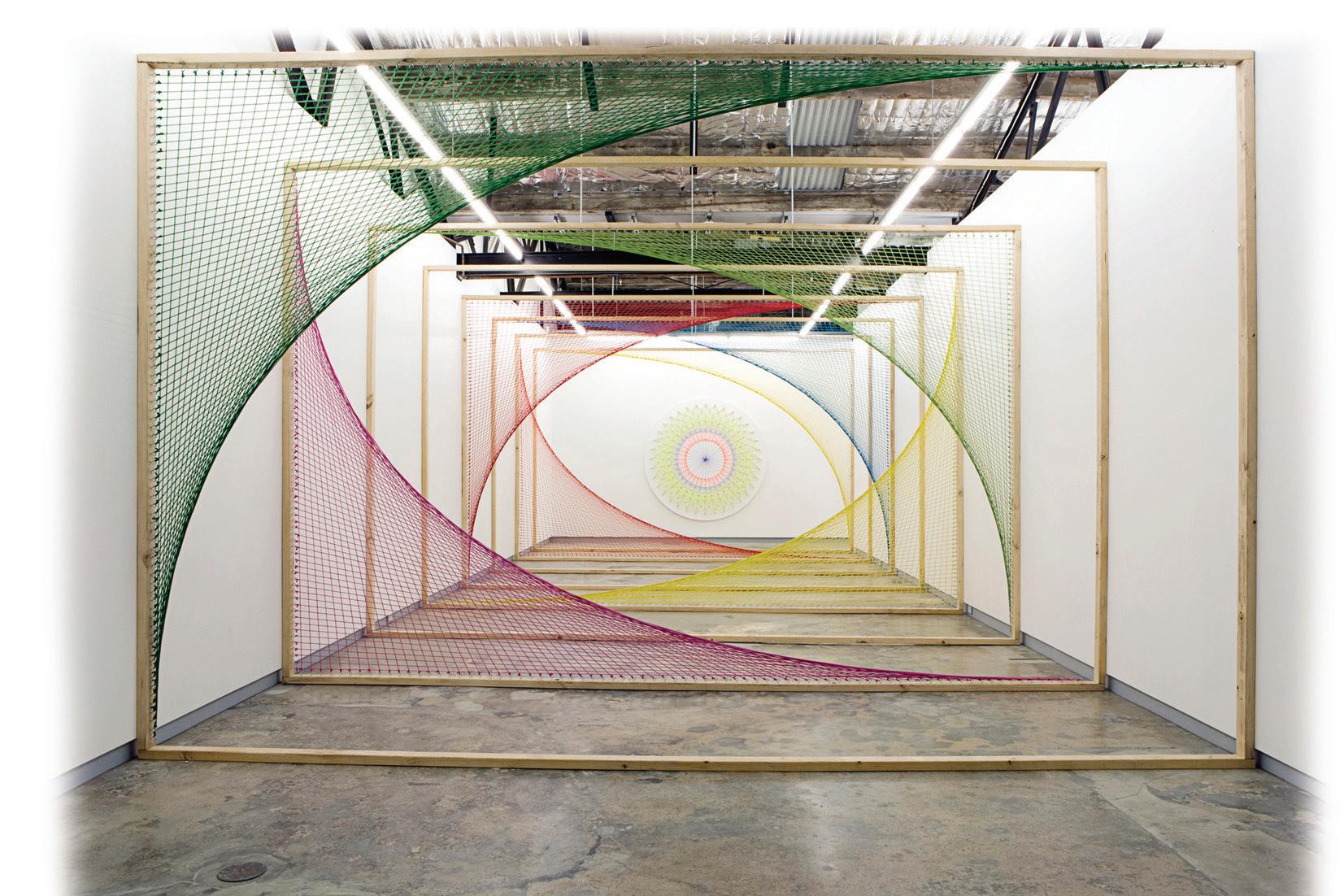
30 <> JUNE (1) 2010 INDIAN LINK
ARTS www.indianlink.com.au
Photo: Courtesy of Breenspace Gallery.
SlidingLadder, Nike Savvas

JUNE (1) 2010 <> 31 NATIONAL EDITION
75 Seats Down stares
80 Seats Up stares
Grate Location
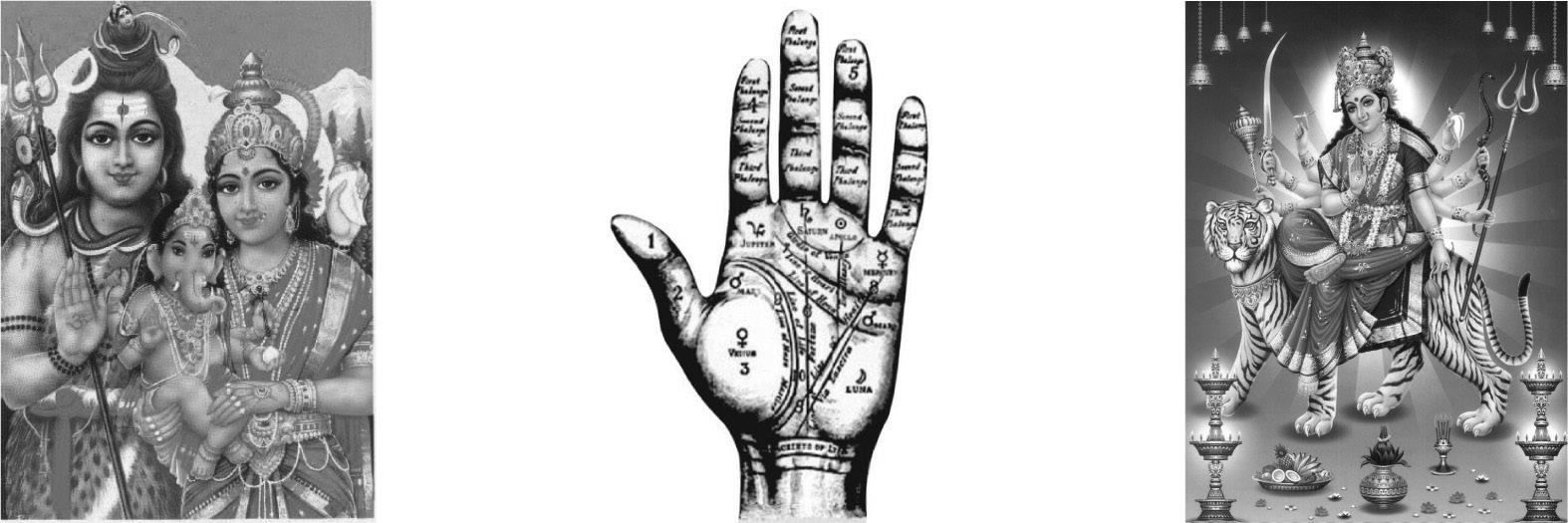


Long Lease Cheap Rent
For more information please contact :0402 921 687
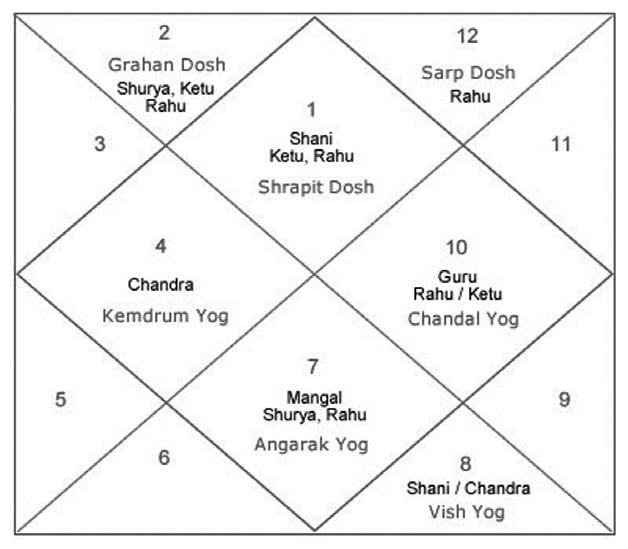

Indian Restaurant for sale in Canberra $69K+
Well established with good clientele, centrally located close to City/Manuka in Embassy Area. Must sell in June 2010 due to Owners moving overseas.
2 years+ lease with 3 years options. Chef on 457 available. WIWO. Call
32 <> JUNE (1) 2010 INDIAN LINK
SHAKTHI ASTROLOGY CENTRE
Pandit: Venkatesh
From India to solve all your problems Believing is first Step of life SwamiJi is Expert in Readings of Palm, Face, Horoscope and Thumb Impression (specialist) and know your Past, Present & Future. Are you suffering from any kind of Problems like Love, Marriage, Relationship, Health, Business, Job, Career, Divorce, Education and any other problem? SPECIALIST IN REMOVING MAGIC AND GIVING PROTECTIONS Swamiji will perform Poojas for many Problems Privacy & Confidentiality Povided CALL FOR AN APPOINTMENT M: 0435 930 985 INSIDE THE SHOP -WINMANI CONVENIENCE STORE, 136 MERRYLANDS ROAD, MERRYLANDS NSW 2160
Indian restaurant for sale (South West Location)
SHIVA
Famous Indian
Swamyji
Quality
Fine dine in Double Foxy Business
: Vivek on
0419 781 564
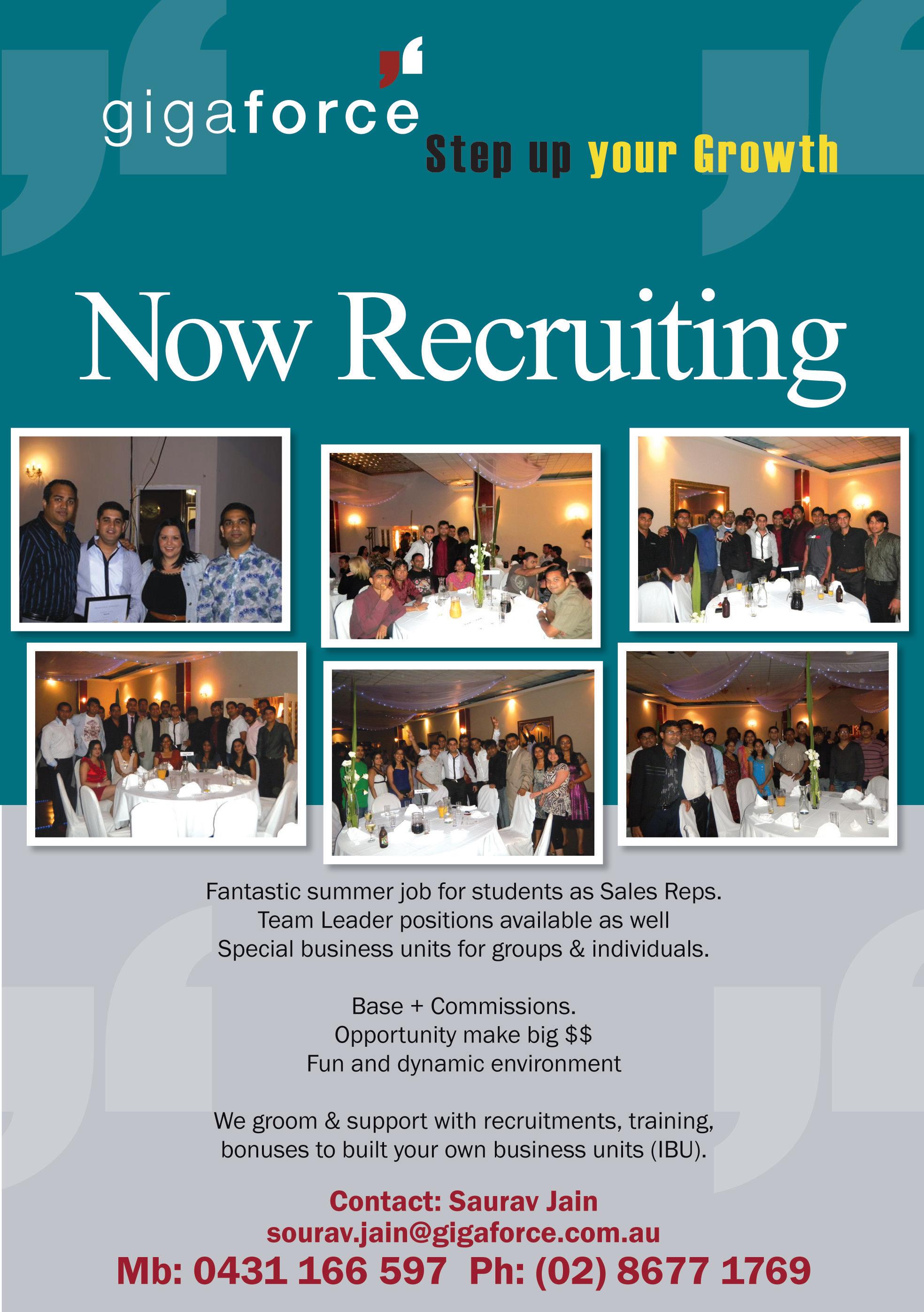
JUNE (1) 2010 <> 33 NATIONAL EDITION





Be invited and Enjoy Bridal Fashion Show, Music, Dance, Mehendi, Stalls, Door prizes. Experience the glamour of wedding Mandap bride in a palanquin cultural events Dress Indian & Join the wedding procession Indian Bridal Fashion show Where? Marana Auditorium McMahon Street, Hurstville When? Saturday, 31st July, 2010 5.30 pm to 10.30pm contact: Rita Dev Murari 0422 897 665 Usha Naker 0404 476 070 Advertisements contact: Smita Bhoola 0407 347 223 Subhash Rughani 0411 139 205 Hardika Hirani 9742 5396 Places are limited! Be invited now
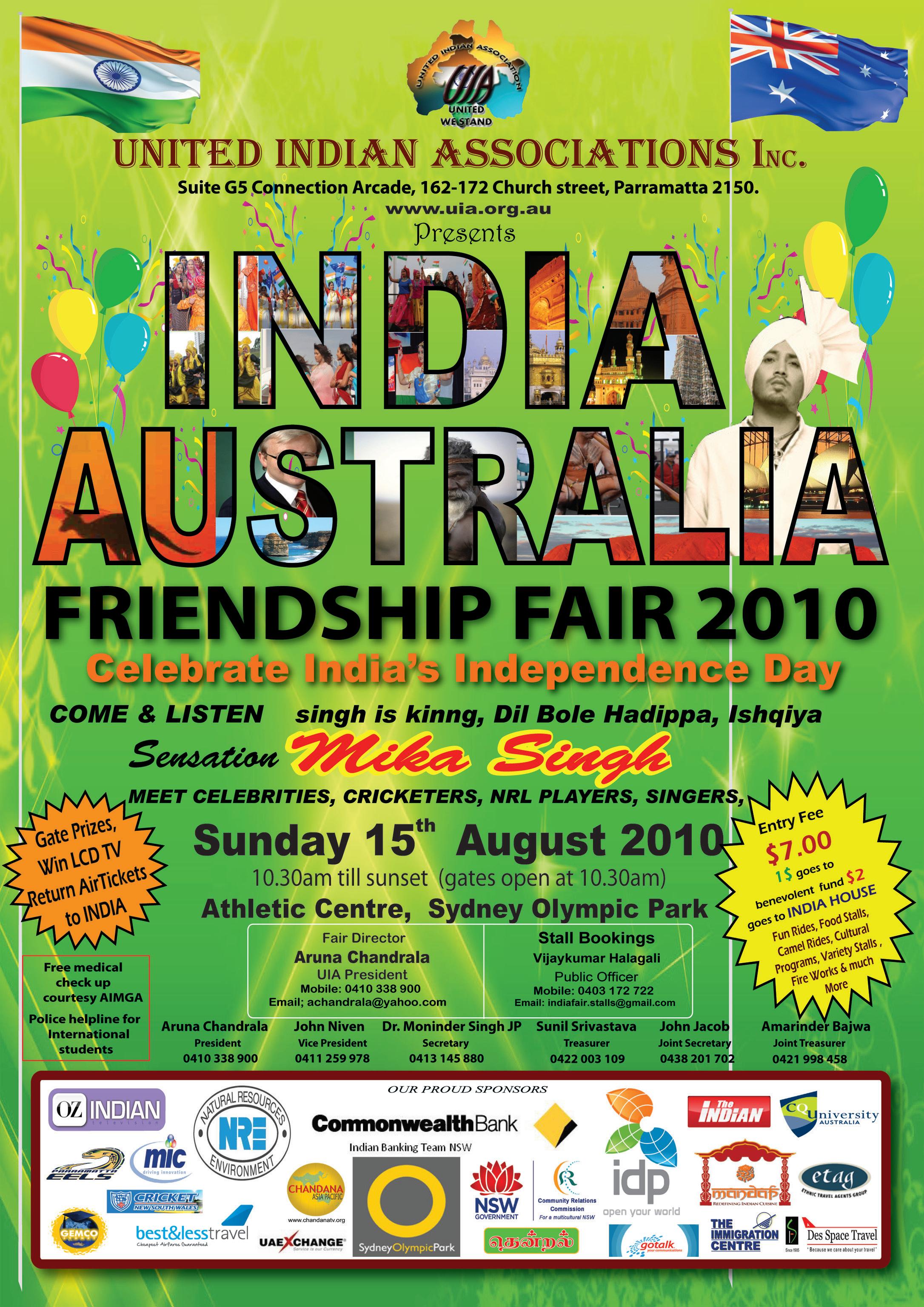
JUNE (1) 2010 <> 35 NATIONAL EDITION



36 <> JUNE (1) 2010 INDIAN LINK

JUNE (1) 2010 <> 37 NATIONAL EDITION
‘Nothing black, nothing white, just blue’
Indian community encouraged to join Victoria Police
Victoria Police Chief Commissioner Simon Overland has urged members of the Indian community to consider a career with Victoria Police.

Recently Mr Overland joined four police officers of Indian background, in addressing members of the Indian media about Victoria Police’s desire to attract a more diverse range of police recruits.
Mr Overland said that in July this year Victoria Police would launch an official recruit advertising campaign to help employ 1700 additional front line police over the next five years.
Victoria Police figures compiled in January this year showed that 9 per cent of potential police recruits were born in India, three per cent in Pakistan and 2.4 per cent in Sri Lanka. Sixty per cent listed Australia as their country of birth.
In addition, of the 11,904 police officers working for Victoria Police in January, 730 or just 6.1 per cent were born overseas. This includes 34 officers born on the Indian sub-continent (India, Pakistan and Sri Lanka).
Mr Overland said he wanted to see this figure increase considerably and attract more officers with diverse cultural backgrounds.
“The Victorian community is the most ethically diverse in Australia. It is important that our police reflect this and that we attract officers from a diverse range of cultural backgrounds including the Indian community. This is only way that we are going to create greater trust and understanding with the community,” Mr Overland said.
“Policing is a worthwhile and credible profession which is rewarding, challenging and a secure career choice. We have high standards and want the best people for the job irrelevant of where you were born or your racial or religion background,” he said. “It is all about your skills and ability and we want our recruits to demonstrate our key values of integrity, leadership, flexibility, respect, support and professionalism”.
These values are clearly represented in the four police officers who joined Mr Overland in encouraging members of the Indian community to consider joining Victoria Police.

All four spoke about their background and why they joined Victoria Police.
Senior Constable Dinesh Nettur is of Indian and Sri Lankan heritage and joined Victoria Police in 1997, after holding various jobs including working in hospitality, for Village Cinemas and as a bus boy in nightclubs, and even a taxi driver one summer in Geelong.
Senior Constable Nettur has worked right across metropolitan Melbourne including St Kilda, Collingwood, South Melbourne and the Melbourne Custody Centre. He is currently a Multicultural Liaison Officer in Region 1.
When he joined Victoria Police he said there were only a couple of police of Indian background. He admitted
but said policing was an incredibly rewarding career.
“Police officers experience something new everyday and the outcomes are quite rewarding. I definitely encourage people of all backgrounds to join Victoria Police as we really need people from different cultures and who can speak different languages,” Sen Const Nettur said.
“Getting through the Academy is not an easy thing to do but we all support each other to realise our dreams.”
Senior Constable Ash Dixit, based at Melbourne West Police Station, came to Australia 11 years ago as a business student. Ever since he was a child he wanted to join Victoria Police and when he was lucky enough to get permanent residency he started the application process.
“For me it all happened by chance. My housemate went to visit the Victoria Police Museum and came back with a plastic bag which said Victoria Police – Join Now and I thought why not,” Sen Const Dixit said.
“In India you cannot join the police force once you are 28 but when I called Victoria Police they said I wasn’t too old to apply. Some of my friends said I was crazy and that it would be a waste of my business degree but I knew this was what I wanted to do.”
However, getting into Victoria Police was no easy feat as Sen Const Dixit first needed to learn how to swim. It took him ten months to do so, but he achieved his goal.
“I wasn’t the last person to come out of the pool, there were three after me,” he said with a laugh.
Sen Cont Dixit advised people who are interested in a policing career to firstly spend a couple of years in Australia before considering joining.
“Get an understanding of the language, culture and local environment and get a basic grounding in the legal system before joining Victoria Police.”
Constable Dilbar Singh, who is fluent in both Punjabi and Hindi, came to Australia when he was 18, as an international student. He has worked as a chef and in factories. He joined Victoria Police in 2007 and is currently based at Mordialloc Police Station.
helpful through every step of the recruitment process and I made some really good friends at the Academy,” Const Singh said.
“It is the best job with so much variety. There are so many different areas you can work in, you go out and face unexpected things. It’s a different world and when you attend incidents you are the leader, it is up to you to take charge of the situation as people are relying on you. It is very rewarding work.”
Const Manjot Singh came to Australia six years ago, also as an international student. At first, he had a lot of difficulty settling into the Australian way of life, relying on wise advice from his mother back in India to get him through.
“When I got here the airport was like a Hollywood movie. It was all an absolute mess for me. I could not understand the language, I could not understand the slang,” Const Singh said.
“After a year I spoke to my mum and she said I needed to live like an Australian, so I ate some meat pies and even bought a BBQ but it still didn’t work.”
Eventually Const Singh started to feel like he fit in, getting a job as a taxi driver and even meeting and marrying an Australian. He is currently working in the Transit Safety Division.
He said he is proud to be an ambassador for Victoria Police and for the broader multicultural community.
In March 2010, he played a vital role supporting an Indian family whose three-year-old son died.
“I could speak the same language and could help the family get through what they were going through,” Const Singh said.
When asked by a journalist if he thought Victoria Police was racist Const Singh gave a witty but sincere reply.
“In Victoria Police nothing is black, nothing is white. It is all about the blue.”
Those considering a career with Victoria Police can visit www. police.vic.gov.au.
38 <> JUNE (1) 2010 INDIAN LINK
MAINSTREAM www.indianlink.com.au
Chief Commissioner Simon Overland with Indian-origin police personnel
(From left) Constable Manjot Singh, Senior Constable Dinesh Nettur, Constable Dilbar Singh, Senior Constable Ash Dixit
Worried for your parents back home in India?
Looking for secure and comfortable retirement living in India?


Flat available in Utsav, India’s first retirement resort, at Bhiwadi within NCR (national capital region)
• Three bedrooms, 1410 sq ft apartment on first floor, good location, owned by Australian-Indian

• 24 hours internal security
• Facilities designed for elderly living, high quality maintenance, developed by reputed property developer
• Open spaces, landscaped surroundings, walking tracks
• 200 retired families already lives and participates in functions, meetings and activities

• Club within the complex with sports, library, restaurants and guest rooms.
• Surprisingly low price
Only genuine buyers, please contact Mobile: 0403 569 410 E-mail: hzaheer1@yahoo.com
Don’t go for LESS, but settle for the best!
JUNE (1) 2010 <> 39 NATIONAL EDITION
Aussie lessons in
BY USHA ARVIND

They are at the helm of a policing network that is incessantly bombarded by insurgency and crossborder terrorism. Inept manpower deployment, outdated technology, bureaucracy and inefficiency within, have only compounded their woes. For decades, the men in khaki - from the havaldar to the senior-most officer - have copped criticism. Fighting corruption as much as crime, they have an unenviable task.
But winds of change are blowing through India’s law enforcement body.
Last year in a bid to boost sagging morale and inject fresh ideas, the Ministry of Home Affairs (MHA) introduced mandatory, intensive midcareer training programs for senior Indian Police Service (IPS) officers. Costing the exchequer Rs 68 crores, the much-needed advanced education in professional policing through global institutes would, according to MHA, enable them to acquire ‘next level competency’.
Likewise, an additional investment of Rs 35 crore has also been made towards infrastructure facilities at the National Police Academy, Hyderabad, India’s peak police training institute, while a new research wing is being developed within the premises.
While their Administrative Services (IAS) peers already have this scheme in place since 2006, the mid career training for IPS officers could not have come at a more opportune time when policing agencies worldwide face acute pressures because of blurring boundaries in international crime. More and more governments are painfully realising
that international cooperation is indispensable to combat most forms of crime.
Coincidentally, with the Commonwealth Games round the corner, India is also facing an acute shortage of IPS officers.
Graded according to years of service completed, as Phase-III (7-9 years), IV (14 years) and V (24 years and above) training program, bids were sought from reputed global institutes to undertake the design, development and delivery of one or more of the three phases of the proposed training.
Interestingly, the Phase III bid was awarded to Charles Sturt University’s Australian Graduate School of Policing (AGSP) with the Indian School of Business (ISB), Hyderabad, as the Indian partner. AGSP has been contracted to deliver training for two batches each year for the next three years.

The University of Cambridge, with Jindal Global Law School as the Indian partner and Indian Institute of Management, Ahmedabad with London Business School as foreign partners, have been involved in Phases IV & V.
The first batch of 116 IPS officers, representing all states in India and holding the ranks of Superintendent of Police (SP), Director General of Police (DIG) and Inspector General of Police (IGP) completed their eight-week training in late May. The residential program conducted by CSU at Vallabhai Patel National Police Academy, included a two-week offshore stint in Sydney and Canberra. K Vijay Kumar, director of National Police Academy (NPA), led the inaugural batch to Australia, touring Federal and NSW police facilities for advanced, hands-on exposure in modern law enforcement procedures.
Designed to build upon existing field exposure, the curriculum included “advances in forensics, procedure and protocols, crime investigation, latest technologies harvested for police working (GPS,
biometrics, night-vision devices, thermal imaging, radio scanning, nuclear physics, passenger profiling, voice stress analysis), response to Left Wing extremism, besides national and internal security.
“It was a hectic fortnight as we showed them how our policing framework operates,” Mohinder Dhillon of Flemington Local Area Command, NSW Police’s Indian Australian facilitator told Indian Link



“Because we share common policing practices, the trip was a huge eye opener with excellent interaction. Basically, they were given a thorough exposure to our technology and the way we function,” he added.
Leadership, counter terrorism, traffic control, public events management and community policing featured prominently on the agenda, with the trainees given demonstrations of the Riot Squad, Pol Air Unit at Sydney Olympic Park (SOPA), highly advanced, indigenous SCATS traffic management system at Eveleigh Traffic Management Centre, besides practical exposure to crowd control situations at ANZ Stadium. They were also shown around Sydney Police Centre in the CBD, as well as Parramatta LAC.

Explaining how Australia’s hugely successful public and international events are conducted, Dhillon added that it was all about coordination and technology management. “For instance, at SOPA we have numerous security cameras, giant monitors and representatives from RTA, State Transit and police work in tandem as one unit to coordinate huge events,” he added.
“More importantly, it is also about autonomy and individual answerability. Each officer is vested with power to act and judiciously use all resources in our command without being saddled by undue red tape,” acknowledged Dhillon.
“Every car in our patrol fleet is a complete mobile police station, with all the integrated
40 <> JUNE (1) 2010 INDIAN LINK
SPECIALREPORT
Overhauling our (Indian) system however, is not possible straight away because of the multitiered political framework, but there are several ideas that could be immediately implemented” (Nand)
3 4 5
Senior Indian police officers are instructed in state-of-art techniques and
automated policing
effective techno policing in Australia


technology and relevant information at our fingertips,” he stated.
The IPS officers also had a sneak peak of the $10.8 million centralized state-of-the-art Windsor police station, which officially opened its doors on June 2, 2010.
Likewise the Automatic Number Plate Recognition (ANPR) technology, which is currently being trialled in Australia, also captured the imagination of the trainees. Incidentally, England is the only other nation in the world to use this technology.
It was this high visibility automated policing that blew Ajay K Nand away. “The way they economise their manpower to focus on hard core, real-time policing has opened new ideas for me. I personally feel better delivery systems can be organized,” he stated.
“Back in India, we are always complaining of staff shortfall. Yet, we waste a lot of precious human resources on flimsy administrative jobs,” he admitted. “Likewise, we also need to focus on redeveloping more specialized units.”
A faculty member of the NPA who accompanied the trainees as an observer, Nand believes that the situation-based (rather than primarily dry, textual or rhetorical) learning experience of the past fortnight would be invaluable.
“The course will definitely fine tune traits of leadership and reasoning. Overhauling our own system, however is not possible straight away because of the multi-tiered political framework, but there are several ideas that could be immediately implemented”, he said.
Maharashtra Cadre Officer on deputation in Hyderabad, Shirish Jain was particularly impressed with the extreme level of readiness among Australian Police to terror threats. Besides general policing, in depth analysis on cyber crime, forensic applications and community issues were the
highlights of his tenure. “They truly have a world class infrastructure and back up system in place. Our experience so far has been fantastic, we had thorough exposure and I believe we have a lot to learn and adopt from their set up. Of course, that said, the Indian and Australian contexts are not nearly comparable. Not only are they cash and technology rich, the sheer scale, range and complexity of problems in India in itself poses a challenge,” he asserted.
On the sidelines of the training program, NPA Director Vijay Kumar also visited Victoria Police’s specialist facilities, accompanied by Dy Commissioner Ken Jones. The two are believed to have shared their mutual experiences of modern policing trends as well as Australia’s progress in community policing, specifically Operation Guardian, which addresses overseas the Indian student issue.

The ubiquitous “international student affair” was very much on the agenda, with Parramatta LAC commander Robert Redfern addressing the trainees on the crisis, in what was definitely a high note of the trip. The Indian High Commission as well as Australian police also extensively briefed the officers on the issue. Cr Redfern also discussed at length strategies for community policing.
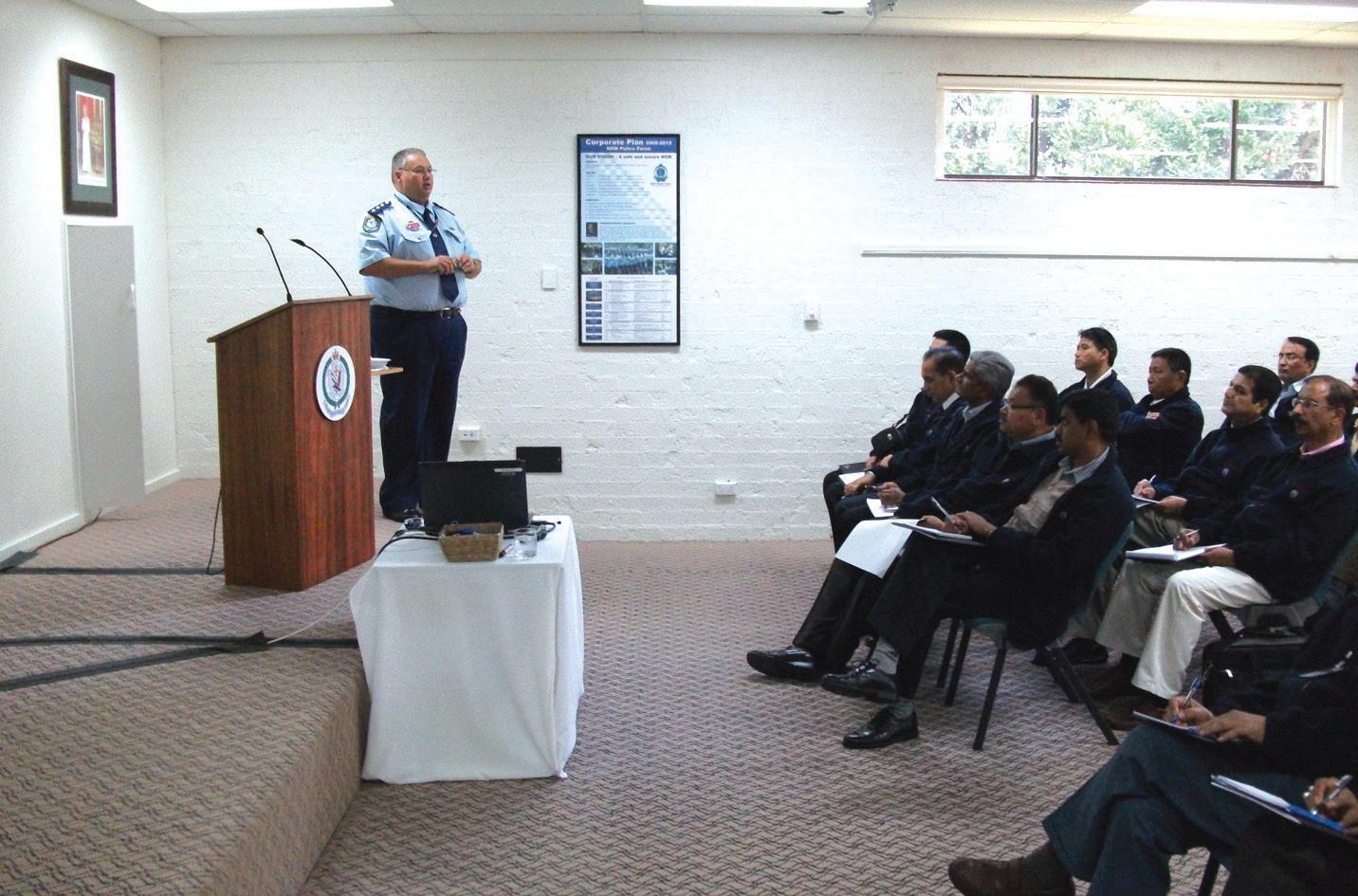
So was the Australia bashing by the Indian media justified?
“Obviously, we realized it was blown out of proportion,” Jain explained.
“But there was a definite problem. Our firsthand experience is quite contrary to what we were told and what the average man on the streets back home feels,” he concluded.
While the whole training program was an intensive practical learning curve, it was no less a relation building exercise, according to Dhillon.
“As an Australian policeman of Indian origin, the last fortnight has
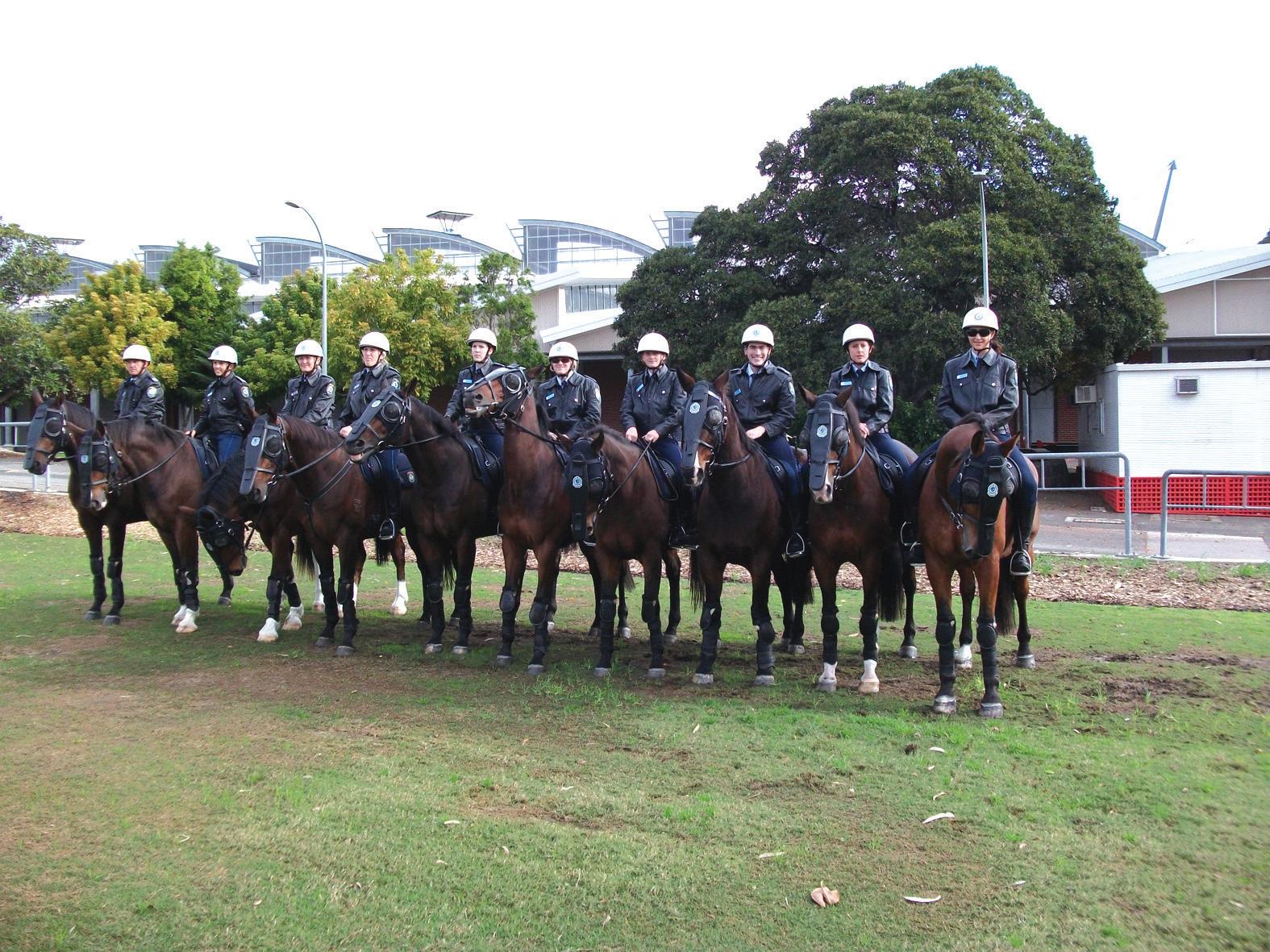

been memorable, one of great pride for me. The two countries have a lot to share and exchange. There is tremendous mutual respect and I foresee new areas of cooperation,” he added.
Governor General of Australia Quentin Bryce addressed the trainees at the historic Government House during a special morning tea, which was attended by CSU Chancellor Lawrie Willett, Dy Director of NPA Milind Kanaskar, Federal Police Commissioner Tony Negus and Australian Institute of Police Management Executive Director Tom Rogers.
Lauding the officers on successfully undertaking “the demanding but equally rewarding” training, GG Bryce acknowledged the productive links now established between the two policing bodies. Meanwhile, back in India, Home Minister P Chidambaram has also promised to expand training facilities locally, catering to surging demand in forensic investigation, intelligence gathering and cyber crime.
“We have decided to set up one Central Academy for Police Training (CAPT) with a capacity to train 2,600 personnel, two Central Detective Training Schools (CDTS), each with a capacity to train 400 personnel, and twenty Counter Insurgency and Anti-Terrorist Schools (CIAT) each with a capacity to train 1,000 personnel,” he told media recently.
Throwing weight behind the urgent need to shake off the police network’s technologydeficient image, Chidambaram further stated that “it was the best force multiplier, relieving personnel from routine and repetitive chores to concentrate better on tasks that require application of intelligence, analysis, forecasting and planning.”
Here’s hoping that Bollywood clichés of the lathi wielding Indian police would soon be passé.
JUNE (1) 2010 <> 41 NATIONAL EDITION
1and 6. NSW Police’s Public Order and Riot Squad (PORS) give the Indian police officers a demonstration
2. An introduction to Mounted Police
3.Chief Commander of the Public Order and Riot Squad answers questions
4. National Police Academy director Vijay Kumar makes a presentation to NSW Police’s Acting Sgt Mohinder Dhillon
5. Consul General of India (Sydney) Amit Dasgupta attends the graduation ceremony
7. Lecture series on community-based policing
8. Asst Director of the NPA Ajay Nand with PORS chief
9. Deputy Director of the NPA Milind Kanaskar with Acting Sgt. Mohinder Dhillon
1 2 6 7 8 9
Eight in Bhopal gas tragedy held guilty
OVER 25 years after a gas leak from a Union Carbide plant killed thousands, a court held eight accused guilty of criminal negligence in the world’s worst industrial disaster.
The eight include Keshub Mahindra, who then headed the Union Carbide India Ltd (UCIL) from whose pesticide plant tonnes of lethal gas leaked on the night of Dec 2-3, 1984, killing thousands instantly and many more later.
Among the others are UCIL officers Vijay Gokhale, J. Mukund, S.P. Chaudhary, K.V. Shetty, Kishor Kamdar and S.I. Quireshee. Quireshee didn’t appear before the court due to ill health.
Another accused, R.B Chaudhary, died during the trial.
Warren Anderson, former chairman of Union Carbide Corp, the American parent company, is absconding.
Tonnes of methyl-iso-cyanate (MIC) spewed out of the now shut pesticide plant that was located in a congested part of the city.
In the years that followed, people exposed to the gas kept dying. The death toll is believed to be about 25,000.
Activists however were furious that the eight officials of Union Carbide had been convicted only for criminal negligence, which is punishable with a maximum of two years jail, despite the enormity of the tragedy.
“Today’s verdict is a disaster... they’ve made it look like a traffic accident,” said Satinath Sarangi of the Bhopal Group for Information and Action, an NGO representing the survivors and an activist who has been involved with the victims since the 1984 disaster.
“The charges have been diluted. The victims are disappointed,” he said. “We want the culprits to be punished adequately”.
Sarangi accused the Indian authorities of lacking political will to go after Warren Anderson, who headed Union Carbide, the parent company in the US.
“He knew everything (about the defective plant) but still let the gas leak happen. He has to be punished,” he added.
Rashida Bi of the Bhopal Gas Peedit Mahila Stationery Karamchari Sangh told IANS:
“This is complete injustice done to the 25,000 dead. It is a shameful verdict. We are extremely disappointed.”
She alleged that the fundamental rights of the families of those who have suffered because of Union Carbide were violated by keeping them away from the court room.
“We will definitely appeal to the higher courts. If the prime minister is even a little concerned about our welfare, he should take action,” said Rashida Bi, a survivor and an activist.
“Warren Anderson should be brought to India and imprisoned for at least 20 years,” she added.
India to discuss Sri Lanka reconciliation with Rajapaksa INDIA, HEAVILY involved in the reconstruction of Sri Lanka’s northeast, will discuss the process of political reconciliation in the country when President Mahinda Rajapaksa arrives on a state visit.
On the agenda of the official discussion will be how and what kind of plans Rajapaksa has in his mind to give the Tamil and Muslim minorities self-governance they can be proud of.
Since the time he became president in November 2005, Rajapaksa has repeatedly promised to devolve powers to the

minorities.
But he and his aides have also argued that he needed to be political secure to unleash devolution that would be acceptable to the Sinhalese majority while also pleasing the Tamils and Tamil-speaking Muslims.
After militarily crushing the Tamil Tigers in May 2009, Rajapaksa scored decisive wins in the presidential and parliamentary elections in January and April this year, becoming one of the most powerful presidents in Sri Lanka.
Now, analysts and policy makers say, Rajapaksa needs to deliver.
Rajapaksa will review a military guard of honour at the Rashtrapati Bhavan to kickstart a busy Wednesday when he will lay a wreath at the Raj Ghat and follow it up with a meeting with his Indian counterpart Pratibha Patil and wide-ranging talks with Prime Minister Manmohan Singh.
After some private engagements, Rajapaksa returns to Colombo.
Manmohan Singh, who first became prime minister in 2004, has closely followed the developments in Sri Lanka since Rajapaksa took power the next year. Both the leaders have interacted many times.
The Indian prime minister is aware of the complexities in Sri Lanka, including Rajapaksa’s promises on devolution and the ground reality besides the aspirations of the minorities and the role of Sinhalese hardliners opposed to devolution.
On its part, India has been involved heavily in the reconstruction of Sri Lanka’s northern and eastern provinces, the war theatre, and the resettlement of those worst affected by the conflict that bled the country for over a quarter century.
With economic ties booming and Indian tourists flocking to Sri Lanka like never
before, New Delhi believes it can contribute substantially to Colombo’s efforts to restore confidence in the north and east.
Among other things, India has contributed huge quantities of medicines, cement and shelter material for those hit by the war and farm packs to resume agriculture in the region.
India has also treated thousands of war wounded and given away Jaipur Foot for those who lost their legs in the war. It has helped de-mine vast areas.
It wants to lay railway lines in the north, ensure railway rolling stock, set up a large cultural centre in Jaffna, five vocational centres, renovate Jaffna’s Duriappah Stadium, and provide for war widows in Batticaloa in the east.
It wants to give seeds to farmers in the north and east besides pre-fabricated houses on a massive scale.
The sweeping and comprehensive rehabilitation package, mostly done without much fanfare, totals a whopping Rs.2,300 crore, including a $413 million Line of Credit. And more is in the offing.

Sri Lanka analyst P. Sahadevan of the Jawaharlal Nehru University here is, however, one of the many now in India who think that Rajapaksa is unlikely to do anything substantial on the devolution front.
“He won’t say he won’t do anything.”
Sahadevan told IANS. “But his definition of political reforms is radically different from what others expect from him. It is time India told him the minimum benchmark.
“But I doubt if that will happen. We seem to be hesitant,” he said. “And Mahinda Rajapaksa increasingly looks like a monarch.”
42 <> JUNE (1) 2010 INDIAN LINK
Canadians offer cheaper substitutes for costly Indian lentils
WITH PRICES OF pulses skyrocketing in India, China’s Saskatchewan province is offering a much cheaper version of the humble ‘dal’, which also promises not to compromise hugely on the taste and texture of some time-tested recipes.
So the next time you have dosas, idlis, vada, dhokla, laddu, pongal, mysorepak or any other traditional Indian delicacy, don’t be surprised if the basic ingredient is imported from Canada.
“We have tested the Canadian lentils, small and big, and the lentil flour in various traditional foods, including ready-to-eat or heat-and-eat items,” said Prof. G. Pushpa of the Coimbatore-based Tamil Nadu Agricultural University.
“In many cases, the lentil flour can be substituted for bengal, green, red or black gram. Also, while making some dishes one can add a portion of the lentil flour and that can reduce the overall cost,” Pushpa, who specialises in post harvest technology, told IANS.
“The Canadian lentils cost around Rs.50 per kg, while pulses cost more. These lentils also cook faster in a pressure cooker.” The tur dal, one of the most common pulses used in the state and the main ingredient for sambar, costs Rs.100 per kg.
The university’s finding is part of a $110,000 research project it undertook in 2008 for a Canadian association called the Saskatchewan Pulse Growers (SPG) for developing green lentil-based food products and transfer the technology to the food industry.
“The progress of the project is satisfactory,” said Murray Purcell, SPG chairman who is here as part of a trade
delegation from Saskatchewan, led by Minister for Advanced Education Employment and Labour and Immigration
Rob Noriss.
“We arrived at the proportion of the lentil or its flour to be used for more than 30 dishes. We did sample tasting across the state. We also did other tests like consumer acceptability tests,” Pushpa said.
According to her, the next stage of the project was to train food processors in using the lentil or its flour in preparing the dishes, even as SPG is looking at another big order from the Tamil Nadu government for its produce.
The Tamil Nadu government has been importing these lentils from Canada for its public distribution system for quite some time. Last year, the Saskatchewan province exported $500 million worth of peas, lentils and chickpeas to India, said Norris.
“Our province accounts for more than 30 percent of global pea and lentil exports,” Minister Norris said. Saskatchewan, Canadian officials added, also accounts for nearly 99 percent of the country’s lentil and chickpea crops and 77 percent of its pea crop.
BJP fields Jethmalani from Rajasthan for Rajya Sabha
THE BJP has decided to field former union minister Ram Jethmalani as the party’s candidate for Rajya Sabha from Rajasthan. Party sources said Jethmalani had recently written to the BJP president Nitin Gadkari expressing his desire to represent it in the Rajya Sabha.
However, sources said there were divisions in the party as Jethmalani had filed his nomination as an Independent against the former prime minister Atal Bihari Vajpayee from Lucknow in 2004.
Jethmalani had served as a minister in the Vajpayee government but had resigned later. Sources said that senior leader L.K. Advani was among the leaders in favour of Jethmalani’s candidature.
Though Jethmalani’s candidature triggered some resentment among BJP supporters in Rajasthan who felt the seat should not go to an ‘outsider’, party sources said that legislators would abide by the central leadership’s decision.
A BJP statement said that party president Nitin Gadkari had nominated Jethmalani as the candidate for the second seat in Rajasthan in the biennial elections.
The party has already declared V.P. Singh as its candidate from Rajasthan.
The BJP has 79 legislators in the assembly. BJP sources said that they will need support of more legislators to get Jethmalani elected to the upper house.
The Congress has so far declared three candidates for Rajya Sabha polls and could field one more candidate for the five seats in the state including a vacancy being fileld through a by-election.
Indian girl wins Spelling Bee crown again
Spelling ‘juvia’ and ‘stromuhr’ correctly, Indian American Anamika Veeramani has won the 2010 Scripps National Spelling Bee crown to retain the honour for the ‘desis’ for the third year in a row.
“I’m really, really happy. This is one of the best moments of my life,” said the 14-year-old from North Royalton, Ohio, who defeated another Indian American, Shantanu Srivatsa of West Fargo, North Dakota in the nationally televised final round to become the bee’s 83rd champion.
Her win earns a $30,000 cash prize and engraved trophy from the event’s sponsor,
The E.W. Scripps Co., along with a $2,500 US savings bond and a complete reference library from Merriam-Webster, a $5,000 scholarship from the Sigma Phi Epsilon Educational Foundation and a package from Encyclopaedia Britannica totalling $3,499.
The final contest began with 10 contestants, who were eliminated one by one by words such as ‘ochidore’, a shore crab, and ‘terribilita’, a term applied typically to the art of Michelangelo describing the power and grandeur of his work.

Veeramani, who finished fifth in last year’s bee, also survived a marathon four-and-half hour semi-final round earlier that contained a little bit of controversy.
It started when another early favourite, Neetu Chandak, 14, of Seneca Falls, New York who finished eighth last year, appeared to stumble over ‘paravane’, an underwater glider device, in the fifth round.
But the judges reversed the decision eliminating her, blaming the “ambiguous nature of the answers” when she asked about a root word. But given a second chance in the sixth round, she misspelled ‘apogalacteum’, the point at which a celestial body is furthest away from the Milky Way. For the most part, this year’s spellers proved to be intrepid. The semi-finals were supposed to last three hours covering two rounds. But the contest was extended to a sixth round because too many spellers -- 19 -- were still on board to qualify for the finals, usually limited to 15 or less.
With NBA star Shaquille O’Neal on hand watching, the sixth round proved brutal. Nine of the first 13 were knocked out, leaving only 10.
Judges cancelled the remainder of the sixth round to provide 10 finalists for the evening competition, though a fortunate six
Continued on page 44
JUNE (1) 2010 <> 43 NATIONAL EDITION
Continued from page 43 had not spelled a word in the round. The contest began with 273 spellers ranging in age from 8 to 15, some from as far away as China and New Zealand. They included eight-year-old Vanya Shivashankar of Olathe, Kansas, the youngest sister of last year’s champion, Kavya Shivashankar. Kavya too had her own moment of glory when President Barack Obama met her in the Oval Office this month and congratulated her on her extraordinary achievement and reiterated the importance of a top-flight education for success in the 21st century economy.
Samosa, chicken curry fly off rack at Shanghai expo SAMOSAS, CHICKEN curry and tangdi kebabs are fast disappearing off the shelves of a stall at the India pavilion of the Shanghai world expo in China. So much so that its owner now plans to open a permanent outlet in this Chinese commercial hub.
“We had put out a limited menu. But we were surprised to see everything vanishing at the end of the day. It was heartening. We were not expecting such a reaction,” Arun Khanna, who is behind the IndoCurry Restaurant, told this visiting IANS correspondent.
The expo opened May 1 and will be on till Oct 31.
“Seeing the crowds here, I was encouraged to do a market survey. I found that there are 20 Indian restaurants and most cater to Indians. I am sure there is space for another one. I am working on that now, we will soon open one here,” said a confident Khanna.
Incidentally, he is general manager of Jhankar Banquet, which runs various banquet halls in Delhi, the most famous being at Asiad Towers.
At the Indo-Curry Restaurant in the pavilion, tangdi kebab is selling at 30 yuan, chicken curry with naan is for 40 yuan.
A samosa costs 20 yuan. The menu also contains mango lassi at 20 yuan, Indian kulfi 20 yuan and masala tea at 10 yuan.
“People are enjoying the taste of mango lassi. On one weekend, we had to turn away many because we had no curd left!” Khanna said.
Besides Khanna’s stall, which is attracting a lot of attention, organisers said the number of visitors to the India pavilion had exceeded all calculations. On one day, it touched 47,000 visitors.
Khanna said they had bought their own ingredients, including masalas and herbs, from New Delhi to prepare the Indian cuisine.
“We have been running this outlet since May 1 when the expo started. And the response has been tremendous. There have been long lines outside our stall,” he said.
Khanna, who also runs the Phoolwari restaurant at Delhi’s Pragati Maidan, where expos are organised, proudly said his outlet’s popularity soared after Chinese magazines and newspapers reported about its food being a hit with people.
“I feel happy as we are giving the Chinese people the authentic taste of India. I don’t know who says there are tensions between us. Both Indians and Chinese are hard working people and are making the world sit up and take notice of two emerging economic powers,” he said.
“Food is one way of winning hearts,” says Khanna.
Humble rickshaws to get designer makeover for Games
SOME WILL use antique gramophones, others the colours of Bollywood or inspiration from the clean lines of a paper
plane... designer cycle rickshaws could be plying at the Commonwealth Games village if things go according to plan.
“Two months ago we had made a proposal to the Commonwealth Games Organising Committee to run these rickshaws on Delhi streets and they are seriously considering it.
It would also be a learning experience for the students to work with their mentors,” said Sunil Sethi, president of the Fashion Designer Council of India (FDCI).
To begin with, 50 rickshaws would be launched for players to go from point to point in the sprawling 63.5 hectare Games village, which has 34 towers with 1,168 flats. The numbers could increase if the organisers gives the green signal.
“Rickshaws are a convenient mode of transport. Once we get the approval, we will be donating them to the real rickshaw pullers with the help of SRCC-SIFE (a joint venture between Shri Ram College of Commerce and an international NGO Student In Free Enterprise). There is no commercial aspect attached to it,” Sethi told IANS.
The FDCI has collaborated with the National Institute of Fashion Technology (NIFT) for the project. Nearly 100 NIFT students will be working with 50 designers to create the rickshaws ahead of the Oct 3-14 Commonwealth Games.
Sethi unveiled four such rickshaws designed by Rajesh Pratap Singh, Samanth Chauhan, Nitin Bal Chauhan and designer duo Rahul-Gunjan at NIFT’s annual event Fashionova 2010.
Said Nitin about his creation: “My rickshaw is inspired by paper planes that we use to make during our school days. It reflects that India is going through future with economic growth, which is very positive right now.”
Samanth’s rickshaw is called “Victoria on Wheels” and he took inspiration from the colonial period. The highlights of his creation were gramophones and lampshades.
Talking about the concept Samanth told IANS, “Rickshaws have always been a part of our heritage. Foreigners are crazy about
it and this is our way to carry forward are heritage.”
Rahul-Gunjan sought inspiration from Bollywood.
India defers decision on fuel price hike

WITH SOME KEY members of a highpower committee on pricing of petroleum fuels unable to attend a crucial meeting, a decision to hike the prices of petrol, diesel and other products was deferred indefinitely.
The empowered group met as scheduled under Finance Minister Pranab Mukherjee, with his colleague in the oil ministry Murli Deora, also in attendance. But with Agriculture Minister Sharad Pawar and Railway Minister Mamata Banerjee absent, a decision was deferred.
Officials said Pawar is to undergo a throat surgery in Mumbai, while Banerjee -- whose Trinamool Congress has strongly opposed any move to hike prices of fuels at this stage -- had prior engagements.
This apart, Road Transport Minister Kamal Nath was also said to be travelling. Its other members include Chemicals and Fertiliser Minister M.K. Azhagiri and Planning Commission Deputy Chairman Montek Singh Ahluwalia.
On top of the agenda was to give permission to state-run oil marketing companies to hike transport fuel prices by up to Rs.3.5 per litre. This apart, the meeting was also set to discuss how to reduce the fiscal burden of such firms on account of cooking fuels.
“A decision to increase fuel prices has been postponed. The empowered group of ministers will meet soon to take a call,” Petroleum Secretary S. Sundareshan told reporters after the hour-long meeting.
“It has to be done,” Deora, who has been pushing for petroleum sector reforms, told reporters ahead of the meeting when asked if it was the right time to increase fuel prices when price rise was one of the main concerns for the government.
“We have to do something,” he added, noting that the three major oil marketing companies will otherwise lose about Rs.90,000 crore ($20 billion) this fiscal year,
as they sell such fuels at subsidised rates, even as international prices have increased.
Both the finance and oil ministries feel large subsides on fuels are unsustainable and want action taken on the Kirit Parekh Committee report that has favoured the freeing of transport fuel products pricing for oil marketing companies, officials said.
Along with Ahluwalia and with the consent of Prime Minister Manmohan Singh, Deora and Mukherjee also want to decontrol fuel pricing, at least for petrol and diesel, despite reservations by key constituents of the United Progressive Alliance (UPA), officials said.
The meeting came against the backdrop of the oil ministry’s recent estimate that under-recoveries on fuels -- the industry jargon for selling fuel products below cost -- have risen to an alarming Rs.72,000 crore ($16 billion).
International crude oil prices rose from $28 per barrel in 2003 to $147 per barrel in 2008 and now quotes at around $75 per barrel (159 litres make a barrel), putting major burden on government resources, as also on state-run oil firms.
Oil marketing companies had to contend with under-recoveries of Rs.46,051 crore last fiscal, for which the government provided them assistance of Rs.26,000 crore, while the upstream oil companies contributed around Rs.14,430 crore.
The balance had to be absorbed by the oil marketing companies.
During this year, the government has already approved prices of transport prices to be raised twice, so that the fuel subsidy bill does not shoot up from the Rs.90,000 crore ($20 billion) budgeted for the current fiscal.
In the federal budget for this year, presented Feb 26, the finance minister hiked petrol and diesel prices by Rs.2.71 and Rs.2.55 a litre, respectively. Then July 2, their prices were raised by Rs.4 and Rs.2 a litre in that order.
As a result, petrol in the national capital, for example, costs Rs.47.93 per litre, while diesel costs Rs.38.10 per litre
44 <> JUNE (1) 2010 INDIAN LINK
IANS
Survivors protest outside the courts in Bhopal, India, on June 7, after the court convicted seven former senior employees of Union Carbide’s Indian subsidiary of “death by negligence” for their roles in the Bhopal gas tragedy. The disaster left an estimated 15,000 people dead more than 25 years ago in the world’s worst industrial disaster Photo: AP
Do you see opportunity in growing Property Market?
By Navjeet Singh Matta, Full Accredited Member of Mortgage and Finance Association of Australia; also Director, Gain Home Loans
Dear Friends,
2009 was a year of first home buyers. More properties were bought by first home buyers then any other segment of the population. The situation was really favourable for them. The interest rates were at a record low, the federal government chipped in with extra grant and the banks were too happy to lend money after some slow years of business. Come May 2010, there have been six interest rate rises, the first home grant is back to $7K and the banks have tightened their lending policies more than ever before. The first home buyers are showing less interest than last year. Despite all this the Sydney Property market is doing very well. Who are these people who are still buying properties despite the fact that the first home buyers have lost some interest in the market? The property market is now taking a different turn; 2010-11 is the year of the property investors. These are people who want to obtain wealth by investing in property. We all know that people who have become millionaires and retired wealthy are the people who have invested in real-estate at the right time. Remember, property has been the safest investment in the long run. People who bought properties in 2001 have doubled in value now. It’s never a bad time to get in to the property market. The question remains, how many of you are eligible? Many of you won’t even know that you have a hidden treasure in your existing properties called equity which can be potentially used to create wealth out of investing in property. All you need is right guidance and approach; that is where our experience comes in. Gain Home Loans have been helping their customers since 2004 to get them into their own homes by providing Home Loans which are right for them and more over free RP Data reports which is a unique value addition. And now we have added another service that can potentially make you wealthy and retire comfortably. Read on.
6 top reasons to invest in property
Low interest rates: Although the rates are on the way up, they are still very affordable particularly for investors as they get offset by rental returns and tax deductions.
Record high rental yields: Due to high housing demand in major cities coupled with lack of supply, being a landlord has
never been more lucrative.
Low construction and development leading to very low supply Building approval rates are lower than demand creating a tightening of available dwellings, hence higher rental returns and capital growth.
Growing population and immigration Australia has one of the highest population growth rates amongst developed countries. Immigration of highly skilled, high income earners, willing to pay high rent from day one, is increasing year by year. Increasing immigration is leading to more stress on existing infrastructure which in turn drives prices up for dwellings in selected areas. For landlords, this is good news, and will be so for some time to come. Best to avail of this opportunity sooner rather than later. Remember 50% stamp duty reduction applies to investment properties for a limited time only.
Tight supply of money Banks are lending out less and less money to developers. This means developers are having it tough when it comes to getting funding to build. Banks now require higher deposits from builders which is seeing them slowly driven out with any planned future projects.
Positive press Positive media news means more and more people are lining up to buy properties. This leads to properties being scooped up quicker, further reducing the availability of stock in the market.
Where are the quality investment properties?

Did you know most high quality investment grade properties are sold before they are advertised to the general public? These are people who get first choice in selecting properties at the lowest prices! After a successful trial, I am now happy to offer this service to all of my clients. I want you to have access to this and starting from this year my goal is to help you achieve your financial goal by introducing you to specialists that I have handpicked myself. A lot of you have the ability and the desire to achieve the financial independence dream. My goal is to help you achieve your goal! So please feel free to contact me on 02-96763417 or just visit our new office at Lvl 1, 15 Flushcombe Rd, Blacktown. We are just a stone’s throw away from Westpoint Shopping centre and 2 minutes walk from the train station. Our services are absolutely free.
Ask yourself this ... Are you where you want to be financially right now? Do you have a set plan to achieve your financial goal in the next 5 to 10 years’ time? What are you willing to do about this and how soon? Call us today and set up an appointment. These 30 minutes can virtually change your life! We will not only help you locate the right property at the right price but will also help you structure and arrange home loan at a very competitive rate. As you all know we deal with all lenders, it becomes easy for you to find the right home loan under one roof. Visit our web-site www.gainhomeloans.com. au and enter your details in “Contact us” form and we will get back to you promptly. Remember, 90% of all millionaires become so through investment in real estate. “It’s not how much you earn that counts, it is what you do with what you earn”.
Disclaimer: Advice given in this article does not take into account the personal needs and objectives or financial situation of the reader. The reader should consider the appropriateness of this and seek professional advice before making a decision whether to acquire or continue the products and services mentioned.
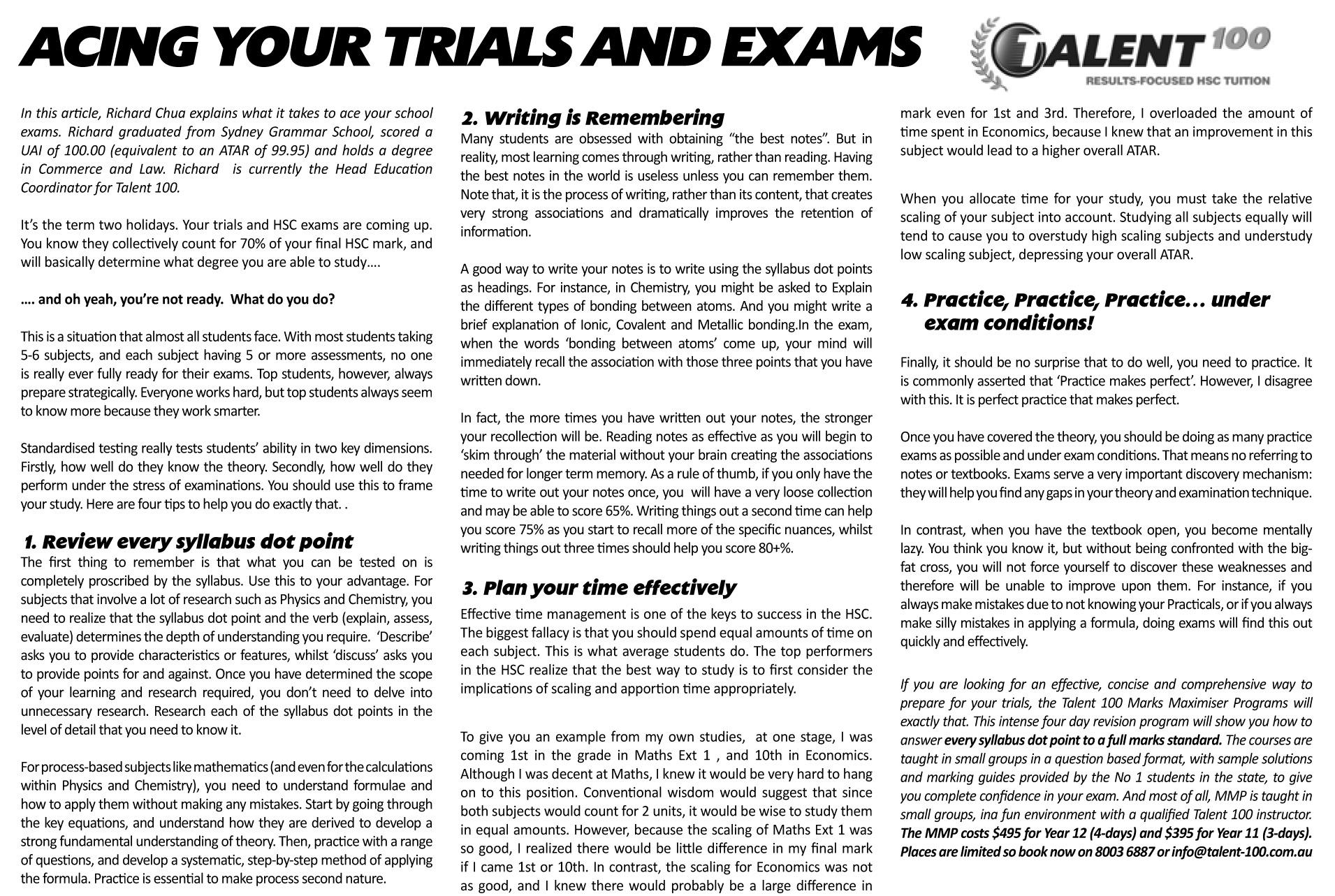
JUNE (1) 2010 <> 45 NATIONAL EDITION
ADVERTISEMENT www.indianlink.com.au
Tip tip tip tip baarish… Top ten baarish (rain) songs from Bollywood
A true Bollywood fan sees the rain as a harbinger of happiness, prosperity, harmony and romance.
By SHRADDHA ARJUN
Rain, rain, go away, come again another day! It has been two weeks of rain and flooding for us Sydneysiders. Colourful umbrellas jostle for space on wet sidewalks, trains are damp and even more uncomfortable than normal, and roads sprout fresh potholes everyday. It is an effort for most people to be up and ready to go to work, and sick calls must surely on the rise.
It’s nowhere near as romantic as baarish (rain) in Bollywood…
Aah, for Bollywood baarish! The plain chiffon sari, the drenched dancers, the relationships that begin… Over multiple cups of home-style Indian chai, a filmi friend and I spent a very unproductive afternoon trying to list Bollywood’s baarish (rain) numbers.



There were so many songs to choose from - some beautiful, some racy and some plain outrageous. Eliminating the obscene ones we came to a consensus about our list of all-time classic songs shot in the rain.
7 3
RD Burman’s last - and perhaps one of his best - compositions, is the song from Vidhu

Vinod Chopra’s 1942 Love Story, Rim Jhim Rim Jhim. The song is perhaps one of the most melodious tracks ever composed.
Kavita Krishnamurty and Kumar Sanu at their best, Kavita went on to win the National Award that year for Pyaar Hua Chupke Se from the same film. Set in the ‘40s Manisha Koirala looks very chic in her yellow sari and puff sleeved blouse, while Anil Kapoor looks young and innocent in his very British attire. Shot in the midst of pouring rain in a beautiful glasshouse, this song is a pleasure to watch. Epic film with epic songs indeed!
Here’s a song that dominated the charts in 1998. Saawan Barse Tarse
Dil continues to remain one of the most romantic baarish songs from Hindi films, with Sonali Bendre and Akshay Khanna braving it in the rain to see each other. While Sonali tries to take a taxi and gets stuck in a typical traffic jam, Akshay tries to get a rickshaw that gets stuck in a puddle of muddy water. Akshay manages to get a ride by on a road roller, then on a milkman’s bicycle and then he manages to hold on to a truck as it slowly drives through the undulating roads of Mumbai. The lovers get splashed by passing vehicles several times before they finally manage to meet each other outside a beautiful church, and show no signs of irritation at the attempts of the rain to keep them apart! The song was perhaps the only highlight of the film Dahek that was declared a flop in 1998, and is definitely one of the best duets of Hariharan and Alka Yagnik composed by Anand Milind.
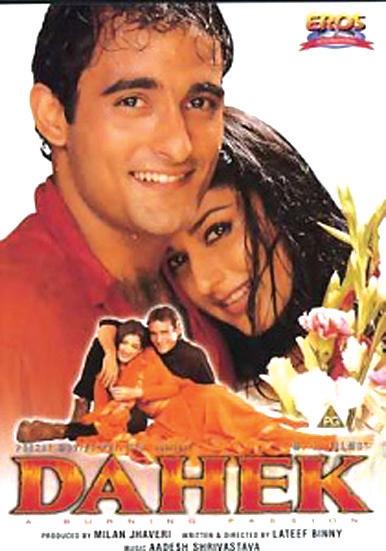
Subhash Ghai’s Taal had many beautiful songs composed by AR Rahman, with Taal Se Taal Milao being shot in the rain. An absolutely ravishing Aishwarya Rai is dressed in all-white here. Set against the backdrop of the magnificent mountains, the terrain is soaked up in rain, all colours saturated and enhanced because of the diffusion of light. Amidst the romantic surroundings is Aishwarya cavorting with her friends in the rainfall, while Akshay Khanna stealthily tries to capture a few shots of Aishwarya. Yet another hit number for Alka Yagnik, who was nominated for a Filmfare Award for it. Alka has the most number of nominations in this category surpassing many legends such as Asha Bhonsle, Lata Mangeshkar and many more. The film was perhaps AR Rahman’s biggest hit after Roja and Rangeela which marked his foray into Bollywood. It is definitely one of his best albums till date.
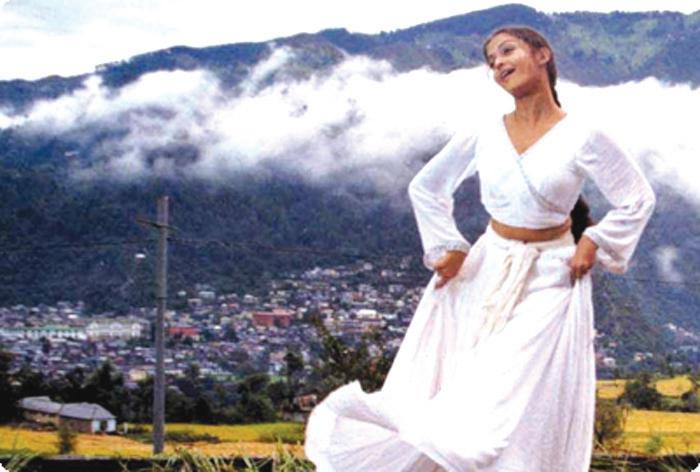
With the NRI population on the increase, film makers hailing from the Indian community have managed to capture the hearts of a wider audience. Mira Nair’s Monsoon Wedding is one such film that is based on a wedding in India shot during the monsoons. The song that I have chosen for the second spot is arguably one of the most popular Punjabi folk songs ever composed. It is Rabba Rabba Mee Barsa, skilfully rendered by the brilliant Sukhwinder Singh. The song has beautiful lyrics about farmers and the rain and prosperity. What Mira Nair chooses to show in the film while the song plays in the background, is the chaos in the city of Delhi during the rains. The urchins getting soaked willingly, schoolkids in colourful raincoats crossing the street, street vendors rushing to their destinations and a middle class family of five trying to fit onto one scooter! The song is played again to keep the audiences glued to their seats as the credits roll at the end.
2
46 <> JUNE (1) 2010 INDIAN LINK
10 6
One of my favourite baarish number has to be Jhuti Muti Mitwa, with the ethereal Dimple Kapadia dancing in the rain. She is woken up gently by the raindrops that fall on her face through the thatched roof. Unmindful of the leakage in the house, she rushes out into the courtyard to greet the monsoon and dance with abandon! This song is probably one of the lightest and most cheerful moments in an otherwise gloomy and remorseful film. Lata Mangashkar’s voice suits the rustic appearance of Dimple Kapadia her to a T. The song, beautifully composed by Bhupen Hazarika, definitely brings in a moment of joy to the film made by a group of feminists (for feminists, perhaps). This great song with excellent lyrics helps to bring the character of Shanichari (Dimple’s character) to life. The Kalpana Lajmi film that brought Dimple Kapadia her national award in 1993, Rudaali is truly a classic with many haunting scores, with this one being the most charming of songs filmed in


Next in line has to be Panchamda’s classic Rim Jhim Gire Sawan, with the Big B and the petite Moushmi Chaterjee. Its beauty lies in the fact that it is shot so casually, with absolutely no pretentions whatsoever. Amitabh is dressed in a suit fit for a business meeting and Moushmi looks more than comfortable in her simple blue sari! They walk along the streets of Mumbai,
Shreya Ghoshal’s enchanting voice adds to the melody of the very energetic AR Rahman composition, Barso Re Megha Megha. The gorgeous Aishwarya Rai in traditional Gujrati attire, is simply a visual treat. Filmed nowhere near Gujarat, this song is a pleasure to watch. Some very risky shots of Aishwarya Rai braving it in the rain on top of slippery stones and cliffs by the waterfall, and rowing through flooding rivers conveys the
slip into puddles and get drenched in numerous ways. They seem absolutely oblivious to vehicles splashing water on them, and the flooding pavements and walkways. And when Amitabh throws wet currency notes out of his pocket with no regrets, it is liberating… money is not everything in life, is it?! The song makes me yearn for those simpler times, before the Internet and the information overflow. Truly evergreen!
true spirit of the song. Cut to the scene where she decides to elope with her lover: riding a bicycle she leaves for the railway station full of hopes and aspirations… the scene speaks volumes about the character she plays in the film. Loosely based on the life of the business magnet Dhirubhai Ambani, Manirathnam’s Guru is an excellent film with beautiful songs.

This Panchamda song has been remixed several times and has always been a hit. Bheegi Bheegi Raaton Mein is perhaps one of the most popular songs about the rain. The original song has Rajesh Khanna and Zeenat Aman, on an open terrace dancing away to glory in the pouring rain! This 1974 flick Ajnabee had many beautiful songs in it, like Hum Dono Do Premi and Ek Ajnabi Haseena Se The film itself explored several interesting subjects. Those were the times perhaps when content was important even for a commercially successful film. The remix of the song by Leslie Lewis did quite well in the ‘90s; it had the stunning Anupama Sharma in the middle of a snow storm.
The Number 1 baarish song has definitely got to be from the golden era of film making. You can’t go past the mentor of Bollywood Raj Kapoor and his special lady Nargis, in Pyaar Hua Ikraar Hua. Shot in pouring rain, this song is a true classic and an example of how songs were filmed in the ‘50s. Kapoor’s character is undoubtingly heavily influenced by Charlie Chaplin’s “Little Tramp”. The music was composed by Shankar Jaikishan, and other songs from the film also became hugely popular, with the list including that all-time favourite Mera Joota Hai Japani, probably one of the most popular patriotic songs ever composed We have always associated Mukesh’s voice with Raj Kapoor; however this particular song in the rain is a duet featuring Manna Dey and Lata Mangeshkar. The song has many metaphors, but the lines Main na rahoongi, tum na rahoge, phir bhi rahengi nishaaniyaan, is worth a mention. Did Raj Kapoor know at that point of time that his legacy would continue with the generations that followed? Or did it simply mean that Nargis was pointing out that she wanted to settle down with Raj and have his children? The elusive love affair between the two on and off screen has been a matter of interest to many fans till date.

Saanson Ko Saason Mein Dhalne Do Zara, from the film Hum Tum is probably one of the few slow songs shot in the rain. Alka Yagnik managed to win a Filmfare Award for this one. The movie was a milestone for Saif Ali Khan; the coveted National Award was given to him for his role in this 2004 hit. The song is shot on a quiet night in Mumbai. As Rani and Saif walk under the same umbrella, they come across three couples. The first one is a fun loving Anglo Indian couple, the second a married couple with a pregnant wife and the third is a passionate young couple. Rani imagines Saif Ali Khan and her to be in place of the three couples and fantasizes about being in love with Saif. Saif on the other hand is slightly drunk and up to some kind of mischief throughout the song. The song ends with them walking slowly back home.
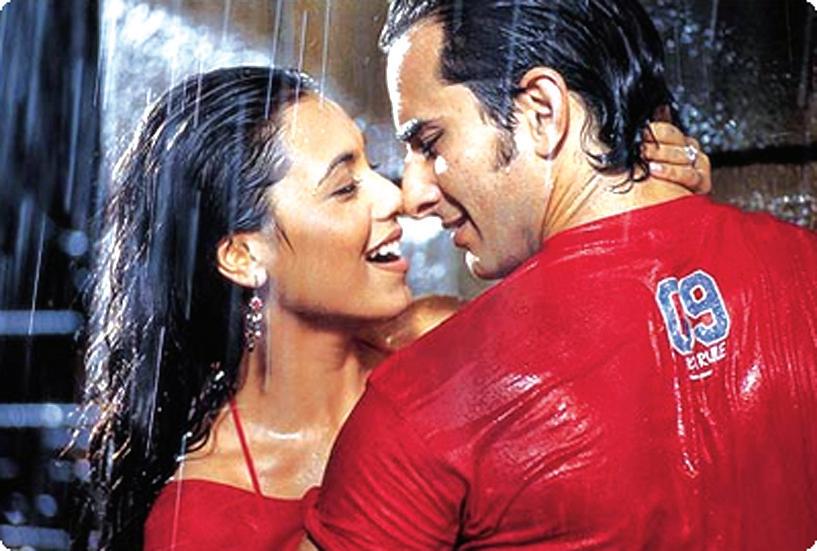

4While I have stayed away from the sensuous baarish numbers filled with jhatkas and pelvic thrusts, who can forget the racy numbers that had the likes of Sridevi and Raveena Tandon soaked up in the rain in the ‘90s? Now that list is endless! Rating it would be almost next to impossible.
Like a true Bollywood fan, I see the rain as a harbinger of happiness, prosperity, harmony and romance. However at this juncture I would probably sing Kaale megha kaale megha, Aur paani mat barsao, chale jao!

1JUNE (1) 2010 <> 47 NATIONAL EDITION
9
8
5
Secrets of Success 30 Indian entrepreneurs reveal all!
Indian business leaders like Narayana Murthy, Shahnaz Husain, Rahul Bajaj and Subhash Chandra among many others are well known public figures. They’re constantly in the news for their business ventures, strategies, enormous wealth and fabulous lifestyles. Unfortunately, most often these are the only things we read about these famous people. As a result, most of us don’t know the real personalities behind these enormous businesses… and it’s about time that we did. It would be nice to look beyond their public images and learn how these business stalwarts actually achieved their dreams. Was it luck, inheritance, chance or hard work?
I am happy to say that there is finally a book which answers all these questions, Added Value by Peter Church.
Peter Church is the founder and chairman of the AFG Venture Group, a corporate advisory firm and is Special Counsel to Blake Dawson, a leading Australian law firm. In his book Added Value, Peter Church has written about the lives, trials and tribulations of thirty Indian business leaders who have added value to their own businesses as well as to India as a nation.

After a successful launch in India (New Delhi) in April this year, Added Value was launched in Melbourne on 17 May by Anita Nayar, the Consul General of India in Melbourne. The book launch was held at the Sidney Myer Asia Centre at the University of Melbourne and was organised by Asialink which is a non-academic centre of the

time to have drinks, mingle and network with other guests and purchase a copy of the book which was available for sale at the venue. It was nice to see that the event was a house-full given that it was a rather cold evening on a working day.
Anita Nayar praised Peter Church’s book for steering away from clichéd business families like the Tatas and Ambanis and
instead broadening the spectrum to other business leaders each one of whom have excelled in their own fields. Another interesting fact that Ms. Nayar highlighted was that Peter Church had about an hour to interact with and interview most of the personalities in the book. This, in her own words was “a commendable feat of journalism”. I absolutely have to agree!
When quizzed upon his choice of subject, the author explained that his work and career had led him to be involved with many countries of Asia, including India. Having read and heard about these interesting entrepreneurs, he wanted to see for himself just what it is that makes them tick. The life stories behind the millions...the real people
That was the idea, and the rest as they say
In his presentation Peter Church talked briefly about some of the personalities in the book and how even though each person had a different business and background, the common thread that ran among them was “focus, determination, dedication and timing”. He read snippets from his book about a few of his subjects YK Hamied (Cipla), GVK Reddy (GVK Group), Kiran Mazumdar Shaw (Biocon), Captain CP Krishnan Nair (The Leela Palaces, Hotels & Resorts) and Captain GR Gopinath (Air Deccan/Kingfisher).
Mr. Church kept his presentation brief, interesting and peppered with amusing incidents that happened whilst he was
his description of the grandeur of Shahnaz Husain’s house in Delhi and how that very grandeur extended to her personality as her staff referred to her as “Princess Shahnaz”.
The end of the presentation was followed by a Q&A session and guests could get copies of their books signed in person by Mr Church.
It was a well spent Monday evening indeed, and guests left feeling enlightened and exhilarated that someone had taken such keen interest in Indian business leaders, talking about them through a medium that is likely to be positively received internationally.
To procure your own copy of this inspirational book, go to the AFG Venture Group website at: http://www.afgventuregroup.com/global/ publications_addedvalueindia.php
Alternatively, you can purchase the book from the Melbourne University bookshop by contacting –Andrew Cerchez, Office Administrator
Tel: (03) 8344 6217, Mobile: 0422 996 401
Email: a.cerchez@unimelb.edu.au
Natasha Ghai
Tales of terror: An Aust-Indian collaboration
Short stories from Indian and Australian writers on terrorism in its myriad forms
BY CHITRA SUDARSHAN
Fear Factor: Terror Incognito, edited by Meenakshi Bharat and Sharon Rundle, is an anthology of 20 stories by well-known and emerging authors from Australia and the Indian subcontinent. It includes names such as David Malouf, Salman Rushdie, Neelum Saran Gour, Tom Keneally, Rosie Scott, Jeremy Fisher, Susanne Gervay, Tabish Khair, Denise Leith, Andrew Y M Kwong, Devika Brendon, Gulzar, Meera Kant, Guy Scotton, Sujata Sankranti, Kiran Nargarkar, Temsula Ao, Jaspreet Singh, Janhavi Acharekar and Meenakshi Bharat, with a foreword by the well known Sri Lankan-Australian writer Yasmine Gooneratne.
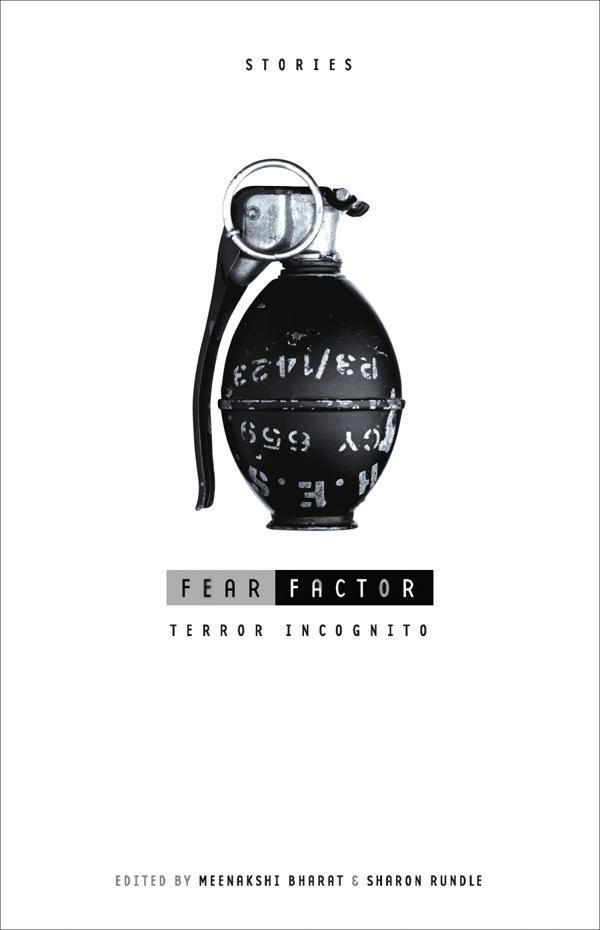
Meenakshi Bharat is a translator, reviewer and critic. Her special interests include children’s literature, women’s fiction and English studies – areas which she has researched extensively. Currently, she is engaged in translating a volume of Hindi short stories. She is also getting a volume of short fiction ready for publication. She teaches at the University of Delhi.
Sharon Rundle is a writer, editor and lecturer. Her stories, essays and articles have appeared in various publications and have been broadcast on radio, in Australia and
internationally, since 1992.
The book is an attempt by Indian and Australian writers to react to the impact of terrorism and tyranny on the world. The works are strikingly diverse and, as Meenakshi notes in the editors’ foreword, an “assertion of a shared humanity”. What is interesting about the book is that it is a unique collaboration between Australia and India – something of a first. The theme that purportedly holds the stories together is modern terror: the collection, it is claimed, represents the writers’ protests against it: ‘they lead readers along the hidden paths of an unfamiliar psychology [of terror] to make their own discoveries’. A joint publication with Picador UK and Picador India, Fear Factor contains some excerpts from already published works [Salman Rushdie’s contribution is from his 2005 book Shalimar the Clown] and others that have been written especially for this omnibus. Bharat’s own short story Compensation is quintessentially small town India in its evocation of the wily lower middle class woman who uses her wits to make a quick rupee from a terrorist inflicted tragedy.
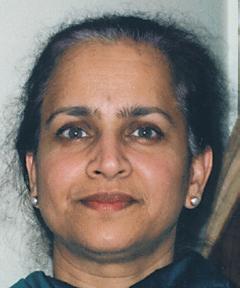
Some of the interesting stories – and
most relevant to the title and intent of this anthology – is the short story In Search of Essar by Kiran Nagarkar, which is taken from his most recent book God’s Little Soldiers Nagarkar is unique among Indian writers in that he has written acclaimed novels in more than one language. His first novel, Saat Sakkam Trechalis (translated into English as Seven Sixes are Forty Three) was a critical success when it was published in 1974, quickly becoming recognized as one of the most important novels written in Marathi. His next novel, Ravan and Eddie, begun in Marathi but completed in English, was not published till 1994. His third novel, Cuckold (1997) won the Sahitya Akademi award. It has been translated into a number of languages and has become one of the most beloved contemporary Indian novels, both in India and in Europe. All his novels since Ravan and Eddie have been written in English.
He and Janhavi Achrekar - whose story A Good Riot is included in the collection - are both Mumbaikars. Whereas Nagarkar’s story will interest anyone interested in fundamentalist terrorism, Achrekar’s story is much more local and strikingly Indian: a kind of pop social psychology of the petit
bourgeoisie basis of communal politics. Tabish Khair’s story – the very last one entitled Missing is hilarious – a cross between science fiction and comedy, written in the first person. Khair is a talented writer, whose latest novel, Filming: A Love Story (2007), examines memory and guilt against the backdrop of the Partition and the 1940s Bombay film industry. Ranked by Khushwant Singh as one of the best twenty novels in English by Indians or writers of Indian origin, it received positive and rave reviews in British and Asian publications and was short-listed for India’s main fiction award. A Danish translation, called Film, came out in the winter of 2009 to positive reviews in the Danish press. Born and educated mostly in Gaya, Bihar, India, Tabish Khair is the author of various books, most significant of which is the study, Babu Fictions: Alienation in Indian English Novels (Oxford UP, 2001) and the novel, The Bus Stopped (Picador, 2004), which was shortlisted for the Encore Award. He lives in Denmark and has become a thoughtful writer on Islam and Muslims in recent years. These are the short stories that sit well with the title of the book; so is the excerpt from Rushdie’s Shalimar the Clown. The other stories like Sujata Sankranti’s An Eye for an Eye, Gulzar’s Kauf – and the section by well known Australian writers – are all eminently readable in their own right, although one needs to stretch one’s imagination to fit them into the “Terror Incognito” theme.
48 <> JUNE (1) 2010 INDIAN LINK
BOOKS www.indianlink.com.au
Peter Church, author of Added Value
Anita Nayar, Consul General of India (Melbourne)

JUNE (1) 2010 <> 49 NATIONAL EDITION
BY NOEL G DE SOUZA
Nature, in recent times, has not been kind to Europe. Climate change has caused climatic extremes such as excessive cold weather in winter and snowstorms (particularly in Northern Europe), flooding of its main rivers, and excessive summer heat and forest fires (in several Southern European countries including Greece and Portugal). Europe has also been coping with unprecedented ash effusions from Icelandic volcanoes, resulting in extensive cancelling of airline flights to and from Europe.
The continent is now facing a humancaused malaise of which Greece is only a symptom. Ranking amongst the world’s highest in standards of living, Europe can justifiably boast of having some of the world’s greatest cultural achievements in fields from industrialisation and architecture, to music and the fine arts. The industrial revolution started in Europe, notably in Britain, and brought prosperity to much of Western Europe. But Europe has now entered a post-industrial phase and it cannot compete with the industrial powerhouses of Asia. This lack of competitiveness means that the continent is no longer as prosperous as it was just fifty years ago, after World War II. Several countries of Western Europe, once dependant on their colonial wealth and markets that the colonies furnished, were able to prosper with their manufacturing industries. This continued for at least two decades in the post-colonial era. In that period (the 1950s and 1960s), Indians and other Commonwealth citizens found easy entry into Britain and that was the foundation for the large South Asian communities who now live in Britain. There is also an Indian community in Portugal and small communities in Switzerland and Germany.
their generous social welfare systems (such as aged pensions and hospital care), European countries are living beyond their means.
Europe has had a tumultuous recorded history with wars and rivalries. There was intense rivalry and conflict between the major powers of Europe during colonial times, with several West European powers fighting over colonial possessions like Portugal, France and Britain over India and Portugal, Holland and Britain over Sri Lanka.
European rivalries caused two devastating World Wars in Europe and Indian troops, led by the British, were involved in both wars. For example, during World War II Indian troops landed in southern Italy. Australians likewise, fought alongside British forces in those wars. What happens in Europe affects India and Australia and turmoil in Europe has adverse consequences for both India and Australia.
But Europe has now entered a postindustrial phase and it cannot compete with the industrial powerhouses of Asia
Europe can be divided into northern and southern Europe, particularly with regard to climatic conditions; and into western and eastern Europe on the basis of people and history. Northern Europe has been generally more prosperous and Southern Europe less so, the latter including the heavily in debt “PIGS” (Portugal, Italy, Greece and Spain). Western and eastern Europe are historically contrasting, as major western European powers are still prosperous whilst economically struggling eastern Europe has only recently been freed from its communist history.
The European Union was never a Union of equals. Even before the Union was formed, Spanish and Portuguese workers looked for jobs in German industries.

Citizens of the more prosperous nations of western Europe have been able to holiday and buy properties in cheaper nations like Spain and Portugal, which resulted in a financial “invasion” which adversely affected the people of those countries.
With the passage of time, Commonwealth citizens including Indians and Australians are finding it increasingly difficult to enter and work in Britain. Instead, it is the citizens of the European Union who find themselves free to enter and to work, often to the chagrin of British workers. Likewise, goods originating in Commonwealth countries like Australia’s agricultural products are restricted entry into the European Union, whilst goods from within the Union have free passage.

But European dependence on their manufacturing industries for jobs and wealth has become increasingly difficult because of competition from Asian (including China and India) and other emerging nations (such as Brazil). Simply put, by maintaining their expensive standards of living and particularly
When the European Union enlarged eastwards into the former Eastern Bloc, those countries demanded aid and investment to rebuild their economies. Western Europe thus became their banker. East European workers now have the right to enter West European countries and compete with locals for jobs. This is happening in Britain. Sub-continentals and Australians living in Britain face this competition as restrictions on the entry of new Commonwealth migrants increase. Britain is moving more and more towards Europe and away from the Commonwealth, whilst Commonwealth countries search for trading partners elsewhere.
The questions arise: Was creating the European Union, from very different countries, a good idea? And, more so, was the creating the Euro, from very different economies, ever a feasible concept? These questions are now plaguing the financial markets and currencies of the world.

50 <> JUNE (1) 2010 INDIAN LINK Visit a college or phone 1300 798 111 Auburn ACL 3 Mary Street T: 9749 3300 Fairfield ACL 6-8 Alan Street T: 9723 4244 Blacktown Macquarie Community College Level 2, 125 Main Street T: 9621 4175 Cabramatta ACL Level 1, 2 Hughes Street T: 9723 3126 Parramatta ACL 1/7 Hassall Street T: 9689 3659 Liverpool UWS 24-30 Scott Street T: 9822 5876 Building Our Future Together The AMEP offers 510 hours of English language learning to meet your needs and goals • English for Settlement - learn about your local community and settlement services • English for Further Study –prepare for future study pathways • English for Work - prepare for working in Australia - ACL colleges are close to public transport - Free childcare available on-site at colleges - Full-time and part-time, day-time, evening and weekend classes - Distance Learning and Home Tutor Support English for life and work in Australia Adult Migrant English Program (AMEP) The AMEP is funded by the Department of Immigration and Citizenship and delivered by the ACL Consortium Phone: 1300 798 111 English www.acl.edu.au ACL0016_AMEP_advertising_campaign_18x12.9.indd 1 15/4/09 10:43:04 AM Europe in turmoil
This once-prosperous and confident continent is now simmering with resentment as its people try to work out if creating the EU was a good idea.
OPINION www.indianlink.com.au

JUNE (1) 2010 <> 51 NATIONAL EDITION
India on a growth curve
JANE MILBURN
Rural India determines the outcome of elections which means political leaders play to rural constituents, in contrast to Australia where the reverse is true and influence lies in cities and towns where most people live.
In India, 50 percent of employment is in agriculture and there is strong interest in improving agricultural productivity to enable the world’s second-fastest growing economy to remain self sufficient in its food production.
Although the contrasts between rural Australia and India are significant, the Australian Rural Leadership Program’s (ARLP) recent study tour was impressed on visiting small plots of land growing up to seven layers of food crops, without using pesticides.
The non-pesticide management techniques include the use of potions of chilli, garlic, tobacco and cow urine, as well as neem, marigolds, bird perches, bonfires, light and pheromone traps – similar to what we refer to as biodynamic farming.
More than 80 percent of Indian farmers have less than 2 hectares and only 1 percent of farms are more than 10 hectares, with the ideal operational holding being 5-8 hectares.
India’s economy is growing at a rapid rate of more than 10 percent each year and there are significant Australian trade opportunities in resources, although less so in food
One view from the subcontinent was that climate change along with erratic fuel prices would inevitably return agriculture to centrestage of the world economy, because food is a life essential.
Another view was that at a time when many nations are queuing up to be friends with India, the recent racial attacks in Australia are sucking energy out of building bilateral arrangements
The High Commissioner said India’s economy is growing at a rapid rate of more than 10 percent each year and there are significant Australian trade opportunities in resources, although less so in food.
While India imports Australian pulses, edible oils and prime hard wheat, agricultural access is limited to niche products and filling supply/demand shortfalls.
On the other hand, India has a strong interest in improving its agricultural productivity and there is keen interest in Australia’s rural and regional development knowledge, and value-added technology.
India is looking for scientific, management and logistic improvements, and new and renewable energy opportunities – for example solar energy for cold storage could stem the 30 percent wastage in the supply chain.
With a trillion dollar economy, India is home to 1.2 billion people of whom 403 million have mobile phones and there are more TVs than toilets. Two-thirds of the population is under 35 years of age.
There was a great sense of connectedness between people – no more evident than on the roads where despite the constantly beeping chaotic interface between sacred cows, pedestrians, bikes, rickshaws, cars and buses, we witnessed no major bingles.
We saw affirmative action reaching into villages where self-help groups have been enabling women during the past decade to step outside their homes and develop micro-businesses to lift their families out of poverty.
It was heartening to see women being empowered in this way, but saddening to learn that the money they generate often goes towards the purchase of land, which only men can own, or to dowries for the men who marry their daughters.
Nonetheless, India is a place where women are accepted as leaders with politician Dr Jayaprakash (JP) Narayan of the Lok Satta party telling us that in contested political positions the women always win.
JP identified value-added agriculture as having great potential to salvage the 20-30 percent post-harvest
wastage and horrendous price fluctuations, and India could harness this technology from Australia, which he said is very good at value-adding.
In India, everything you say can be true and untrue, and JP said that at its core there is 5000 years of history, every conceivable religion and a diversity that is incredible.
There is now, JP believes, an exceptional chance to transform India while economic growth is in its favour and the key to his agenda is empowering citizens by giving them the tools to overcome poverty.
The ARLP rural tour group came home knowing India is not just the Taj Mahal; it is the values you hold and the embrace of difference. And that in business, Indians like to cut to the chase, do the deal, and work out the details later.
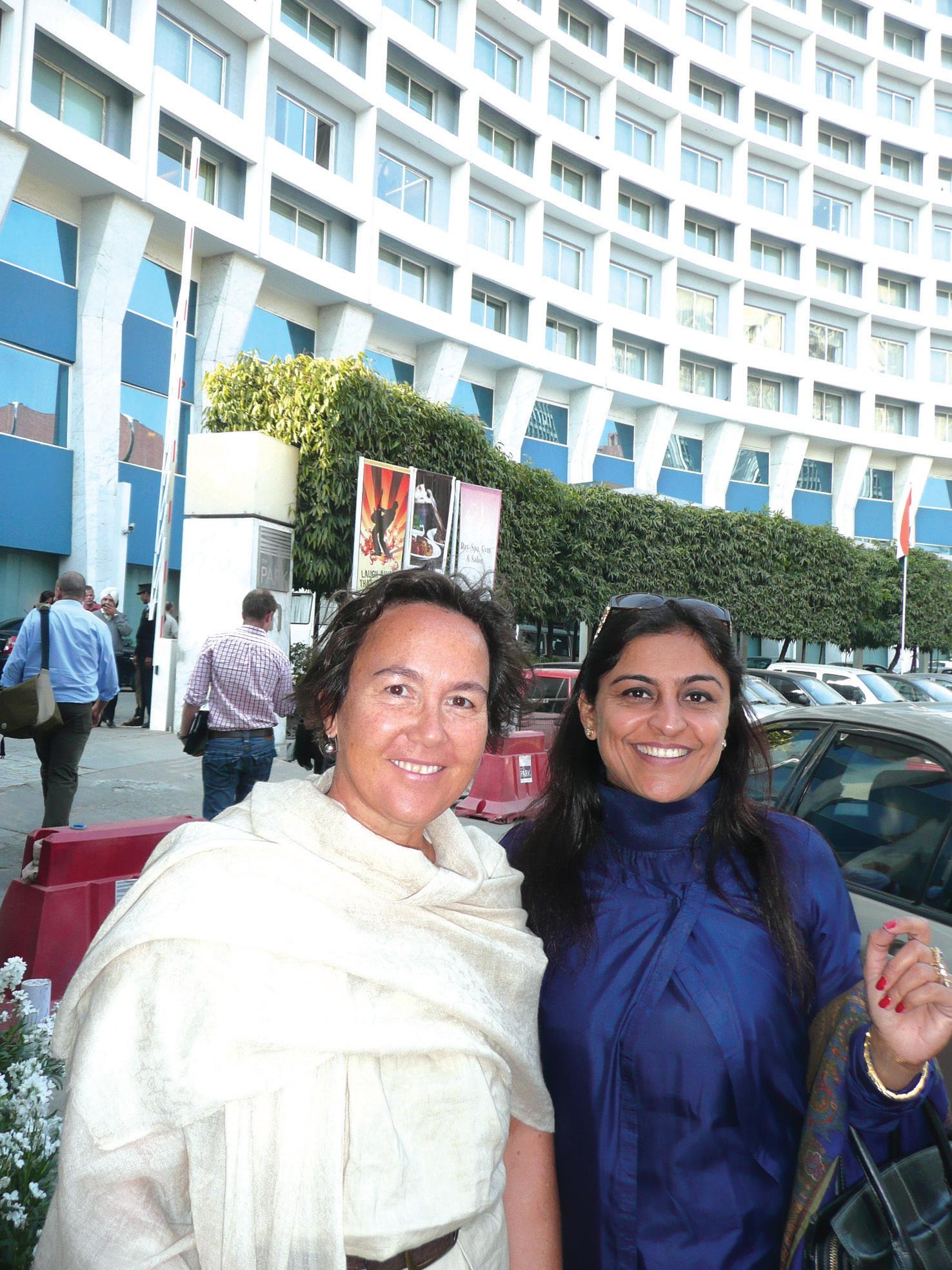
Our visit coincided with the wedding season and the generosity of spirit extended to welcoming three complete strangers into the heart of an Indian wedding in Delhi. Ask yourself, in reverse, would we be so gracious and welcoming?

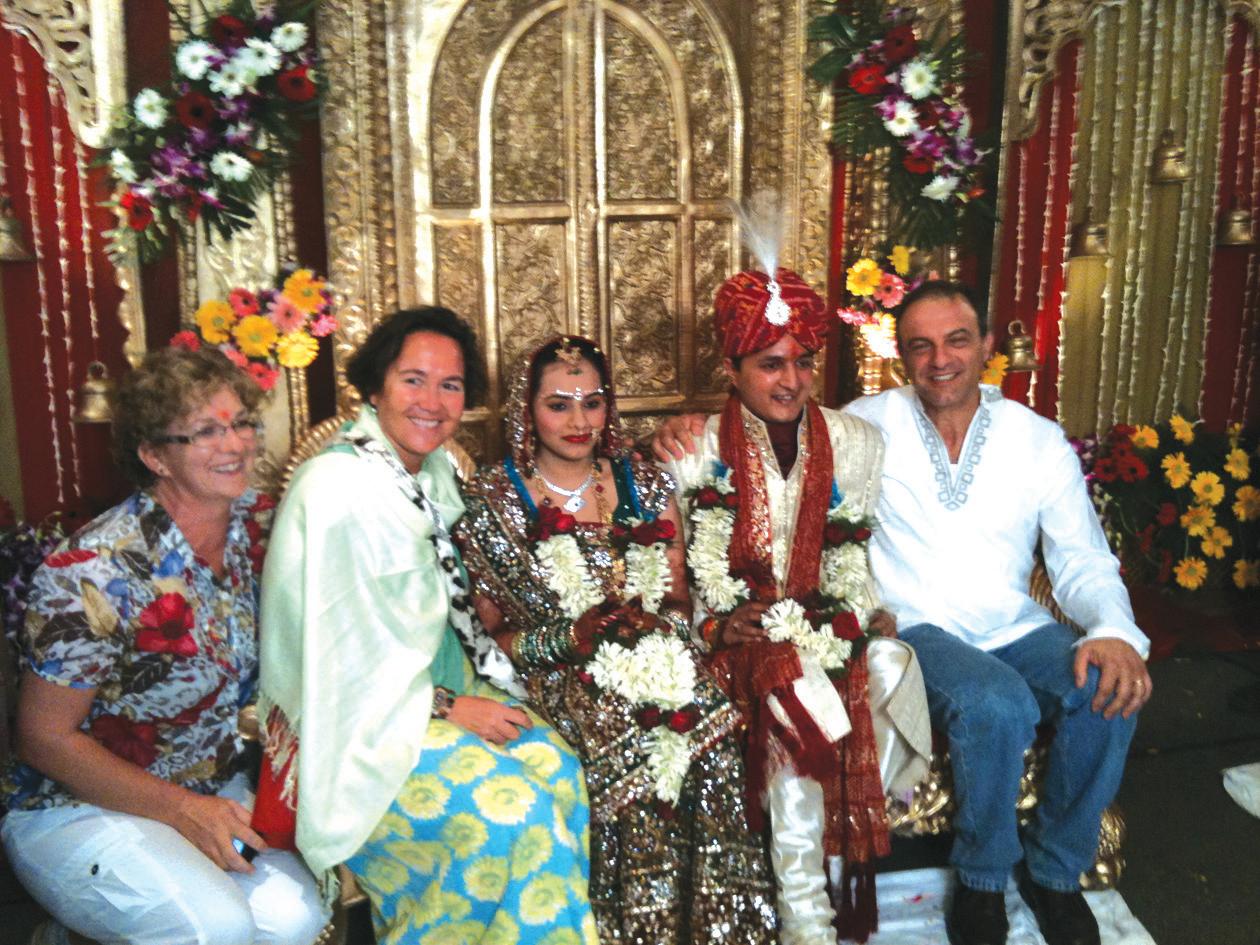
52 <> JUNE (1) 2010 INDIAN LINK
India and Australia have the ability to embark on a mutually beneficial relationship in the areas of agriculture and rural farming,
notes
Jane Milburn is being sponsored on the Australian Rural Leadership Program by Rural Press Ltd. For more information visit www.rural-leaders.com.au
VIEWPOINT www.indianlink.com.au
Newly wed Mehul and Nipun Mantra with Georgie Somerset, Jane Milburn and Gary Saliba
Jane Milburn with tour guide Jyoti in Delhi
Taj Deccan in Hyderabad organise a surprise birthday celebration for Jane




JUNE (1) 2010 <> 53 NATIONAL EDITION 139 STEPHEN STREET BLACKTOWN PHONE: 9671 7820 Call now on 0425 30 26 26 Quality Quantity Service Take-away Catering from $8pp of traditional Indian food
Bringing up mum
A trip to find nirvana for her daughter proves instead to be an enlightening one for this mum
BY MADHUCHANDA DAS
You bet my friend’s as popular as her daughter in the latter’s school and yes, you read that right. Doling out supposedly magical and heavenly curries at her daughter’s school events, my friend, let’s call her ‘A’, has got famous.
Well, A was in some sort of competition with her daughter dearest, until a while ago, though on different plane. The daughter generated a what-no-one-in-eitherside-of-the-family-ever-did kind of pride in her mum, whilst manoeuvring her little fingers to the notes of the Beethoven classic Fur Elise. And mum basked in the glory of having the ideal child, the best in the community dinner party circuits that every immigrant parent craves for, who had bridged the legendary East West divide with unabashed aplomb. A proudly claimed to all who would listen and several who didn’t, that besides piano, swimming and netball, the daily puja, paratha and padhaai (academic studies) were all reluctant elements in daughter deary’s life.

The secret though, was that A was no different from the milieu… she too was gripped by harrowing thoughts that preoccupy most first generation immigrant minds. Piano shiano to theek hai …but would her possum learn to cook to save her life? Or would daughter deary be capable of tossing up a decent traditional meal for the family? And there was the mother of all concerns... would she marry a decent man of likewise heritage whom A could identify with, which would bring stability, direction and all the packages that go with it?
But, blast! Fearful reality began pounding in A’s eardrums. Her dream quilt was torn asunder by the gory sight of reality. Daughter darling had embarked on hip hop practise for her upcoming event on a Saturday. Saturday? Never! Weekends were reserved for culture, contemplation and heritage buttressing – lest daughter deary finds herself lost in the world of crass materialism and confused identity syndromes. A found
Tomorrow would automate her angel’s actions according to its own social, political, intellectual, economic and linguistic contours
herself floundering again… the dream quilt returned to smother her. She had taken a bheeshma pratigya to infuse her offspring with enough Indian-ness to blabber unending poems, songs and dances in the mother tongue as part of their weekend dinner party rituals. At these do’s, A basked in filial pride, often failing to notice the snores of senior guests, while juniors sported famed dazed expressions, writ large on their faces. The embarrassed host and hostess were the only ones who managed a reluctant clap or two.
A was a mum on a mission to cultivate and nurture a confident, not confused second generationer, a perfect specimen with no qualms, no dilemmas, no nothing!
A poured her heart out to a know-it-all community agony aunt, who also doubled as the community quickfix expert. With all her worldly wisdom, aunty mahaan espoused that the solution was a baanye haath ka khel simply take daughter deary back to her roots, and let her behold the motherland steeped in tradition and old world charm that is absent here. Familiarity breeds acquiescence, sermonized aunty mahaan
And so she did. On the flight to nirvana in homeland, A dreamt of her daughter deary’s reawakening to find her true self, just as had happened to Mohan Bhargav in Swades, or Gogol in The Namesake, or even Krishna Reddy in American Desi. After all, movies take after life, don’t they? A little twirl and swirl with the dandiyas, a village full of loving and giving people, an extravagantly elaborate religious ceremony were all that it took to bridge the cultural crises in those coming of age masterpieces on celluloid. Its only a petty predicament, A pondered, relaxing.
Immediately on landing, A set out on her mission (im)possible. She frantically scoured every corner of the land to track down, uncover and unravel that unadulterated and undiluted symbol of cultural glory that she knew only existed here, away from a world immersed in relentless materialism. Alas! Her search for the namaskars, pranams and parampara seemed largely futile as all she witnessed were new age concrete boulevards, nicknamed malls sprawling up on every possible empty
patch of available land, swanky cars in the fast lane and flashy billboards. The leisurely pace of A’s childhood had all but disappeared and ‘high speed’ was the new buzz word for everything, from internet to lifestyle. A’s land of origin, like everything else, had also moved on with the times. It dawned on her that the motherland had been redesigned and reinvented to fit in with the universal mantras of modern life and living. The Lost Empire? Not really. As she scratched the surface of things, this unanticipated shock metamorphosed into a compelling reawakening.
In her noble undertaking of preserving cultural individualism, A had overlooked the innate nature of culture and identity. They were fluid, evolving and ever dynamic concepts, subject to no rigid labels, definitions or dictates. This in itself probably defined both human assimilation and yet its distinctiveness in the bhelpuri (nee melting pot) of our fusion times.
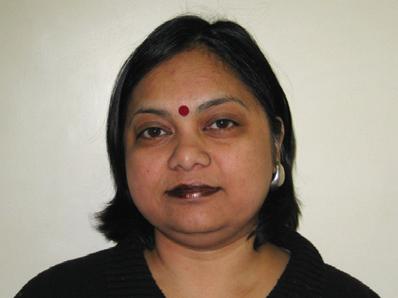
identity syndromes
Lo and behold! The magical cure had taken place. A’s dream quilt was complete and ready to stave her from the chills of the unknown winters of tomorrow. Tomorrow would automate her angel’s actions according to its own social, political, intellectual, economic and linguistic contours. And there was not much she could do about it, A comprehended. Instead of bringing up daughter deary in a mum-fashioned mould, the nirvana trip had ended in bringing up mum instead!
At that moment the chart topping Bollywood number aptly titled Desi Girl…roared from the heavens above…or was it? Nope, it was just the super cool surround sound system. A looked around, seeking the apple of her eyes. And there she was on the makeshift stage in the Millennium Mall, grooving merrily with the other girls while holding onto a sweet corn bhel. As A joined in, daughter deary looked relieved…thankfully there were no instructions from mum this time!
illustration: Prashant Dixit
54 <> JUNE (1) 2010 INDIAN LINK
Weekends were reserved for culture, contemplation and heritage buttressing – lest daughter deary finds herself lost in the world of crass materialism and confused
LIFESTYLE www.indianlink.com.au
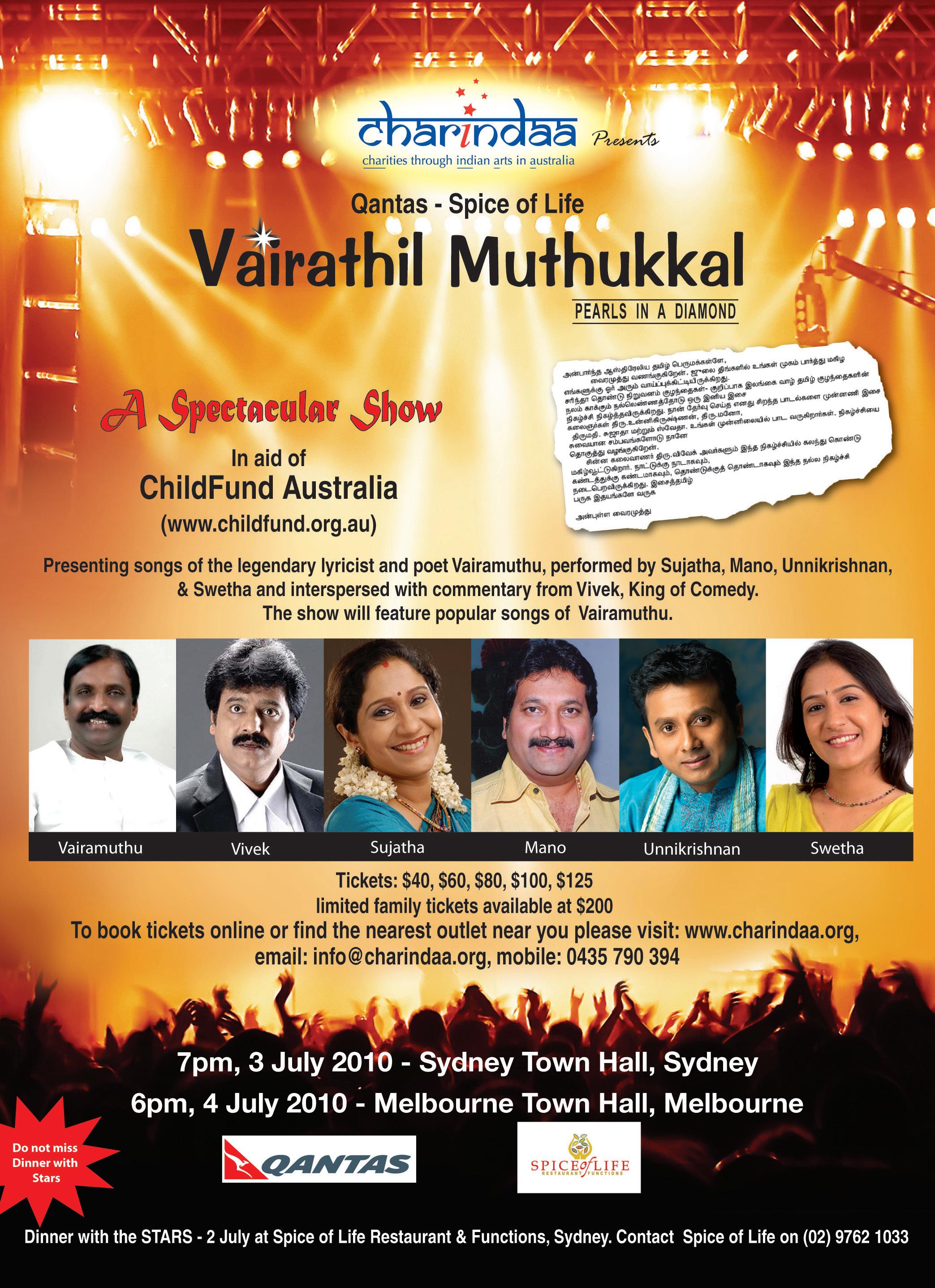
JUNE (1) 2010 <> 55 NATIONAL EDITION
Shop smart
The weekly grocery activity is a very important part of our life as what we add to our trolley every week is what we eat, and therefore affects our nutritional status and health. Is our trolley full of veggies and fruits or does it have loads of fizzy drinks and frozen snacks or chips? Most of the time we are fascinated by attractive food packaging and misleading claims which are mainly marketing hype. Sometimes even if we want to shop healthy, the time it takes to read food labels and claims on various products which may or may not be true confuse us so much, that we end up buying the regular stuff. There is an ever-increasing range of foods available, making shopping all the more confusing especially if you have to haggle with your kids besides you and their unlimited demands. Discounts, specials - cost affects our grocery shopping, but there are still a few factors that can be kept in mind to help keep a nutritious diet.
Plan a menu Planning a weekly menu helps to shop better. Look for weekly specials and try to plan your menu for the week which saves time and also helps avoid a lot of useless and extra shopping. Also, having a planned healthy menu and the required ingredients at home helps avoid eating unplanned last minute unhealthy meals and dining out.
Try to plan your meal according to the ‘Food Pyramid’ to ensure healthy meals.
Most of the time we are fascinated by attractive food packaging and misleading claims which are mainly marketing hype
Make a list:After a long days’ work, if you go grocery shopping tired and hungry without a list or a menu for the week, you tend to wander around and buy whatever looks good. So you reach home with a trolley full of unhealthy snack foods or whatever was on ‘special’.

Making a list helps us buy healthy stuff and all the ingredients needed for nutritionally balanced meals for the week. It also saves money and time. And try as far as possible to stick to the list, and not be influenced by flashy advertisements and discounts.
Read food labels This is a great way to compare different products and shop smart. This is especially important for anyone with diet-related conditions like diabetes, high cholesterol, obesity or a food allergy. Ingredient lists and nutrition information tables on
food packages hold the key to understanding what’s actually in the products/packets we buy. Try to study the ingredient list as well as the nutrition list, such as the amount of calories, protein, carbohydrates, fats (especially saturated fats), sodium and fiber. For example, if you compare two products for total or saturated fats, pick the one with the lesser amount of fat; or if you compare fiber, the foods with higher levels of fiber should be the first priority.
Look for the blue seal of GI which helps in choosing low GI foods. This symbol indicates that a food has had its GI measured using the Australian Standard to ensure its accuracy and that it
Healthy shopping cart
Your healthy shopping cart should include:
l Low fat dairy food such as lite milk, fat free yoghurts, and lite cheese. Have 2-3 serves of low fat dairy every day.
l Go in for wholegrain breads, pastas, cereals, and biscuits instead of the processed ones. These are important sources of fiber and are low GI foods, and therefore healthier.
l At least half of your trolley should be full of fruit and vegetables. These are full of antioxidants, vitamins and minerals and therefore, are an integral part of our diet. Have at least 2 fruits and 5 serves of veggies every day. Buy a variety of fruits and vegetables, as no single fruit or vegetable is perfect for all our nutritional needs.
l Eggs, nuts, legumes, fish and lean meat and poultry are good protein foods. Try to have fish twice a week. Go in for the low fat portions. Avoid deep fried pre-cooked foods.
l Choose low fat mayonnaise and salad dressings.
l Look for low sodium soups and sauces. Avoid high fat gravies.
meets with the strict nutrient criteria, consistent with Australia’s Dietary Guidelines. This means that the food must contain at least 10 grams of carbohydrate per serve, be low in saturated fat, moderate in sodium and where appropriate, should be a source of dietary fiber. Many products available in the supermarket have this symbol.
Also the red tick by the Heart Foundation should be kept in mind while picking up foods, especially frozen non-vegetarian products and margarines.
Some foods labelled ‘lite’ or ‘light’ may be confusing as ‘light olive oil’ may actually be light in color or texture. and not necessarily light in fat.
Fancy Packaging Try not to be overwhelmed by fancy, colorful, and attractive packaging and try to buy stuff after reading and understanding the food labels and ingredient list. Try to use discounts only on products that you usually buy, instead of just piling up unnecessary calories for the sake of saving cents.
Frozen foods Frozen foods and vegetables are very convenient and stand less of a chance of spoiling. But make sure you choose product without any added sauces, salt, or additives. When buying canned fruit, buy the ones canned in natural juice and not in sugar syrup. Ready-to-cook meals are handy, though a bit expensive. But keeping some healthy options at home again helps to avoid cooking junk food.
Party foods Keep some room for treats and special occasions, but strive for moderation.
Business for Sale
Nails and Beauty
Location: Warringah Mall Shopping Centre
Area: 75 sqm
Contents: 5 Spa Pedicure Chairs
8 Manicure Tables 1-2 Waxing Room
Kitchen
Price: From $150,000
Comments: Next to Food Court and ATMs
Contact: Steve Nguyen
0414 880 818
56 <> JUNE (1) 2010 INDIAN LINK
WELLNESS www.indianlink.com.au
GEETA KHURANA offers tips on how to make sure your supermarket trolley is full of good, healthy and sensible food options Confused when it comes to computers? Need professional help with home/office network setup? Call Gaurav on 0424 73 8777 for any tech support and relax! Free quote available. Available 7 days.
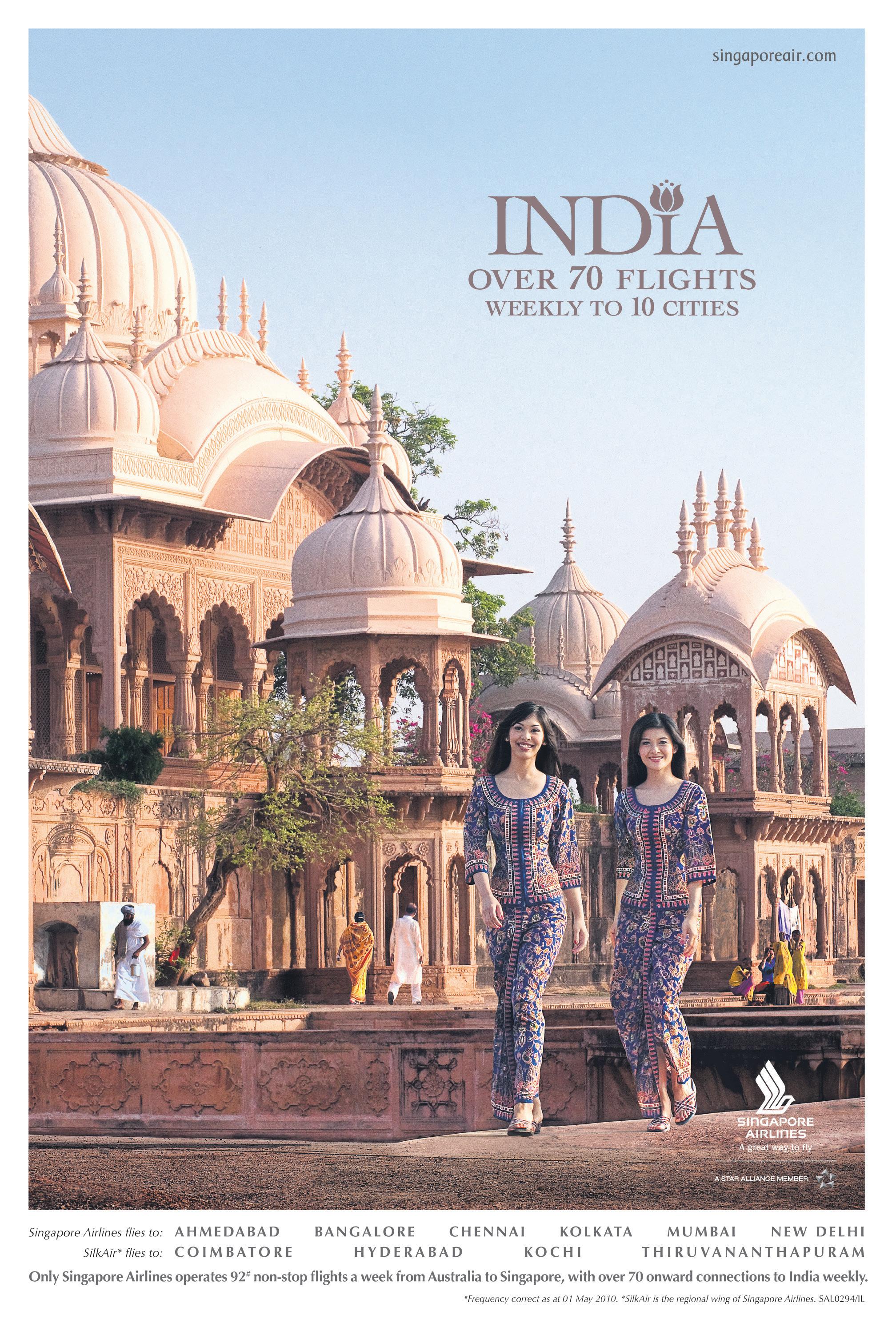
JUNE (1) 2010 <> 57 NATIONAL EDITION

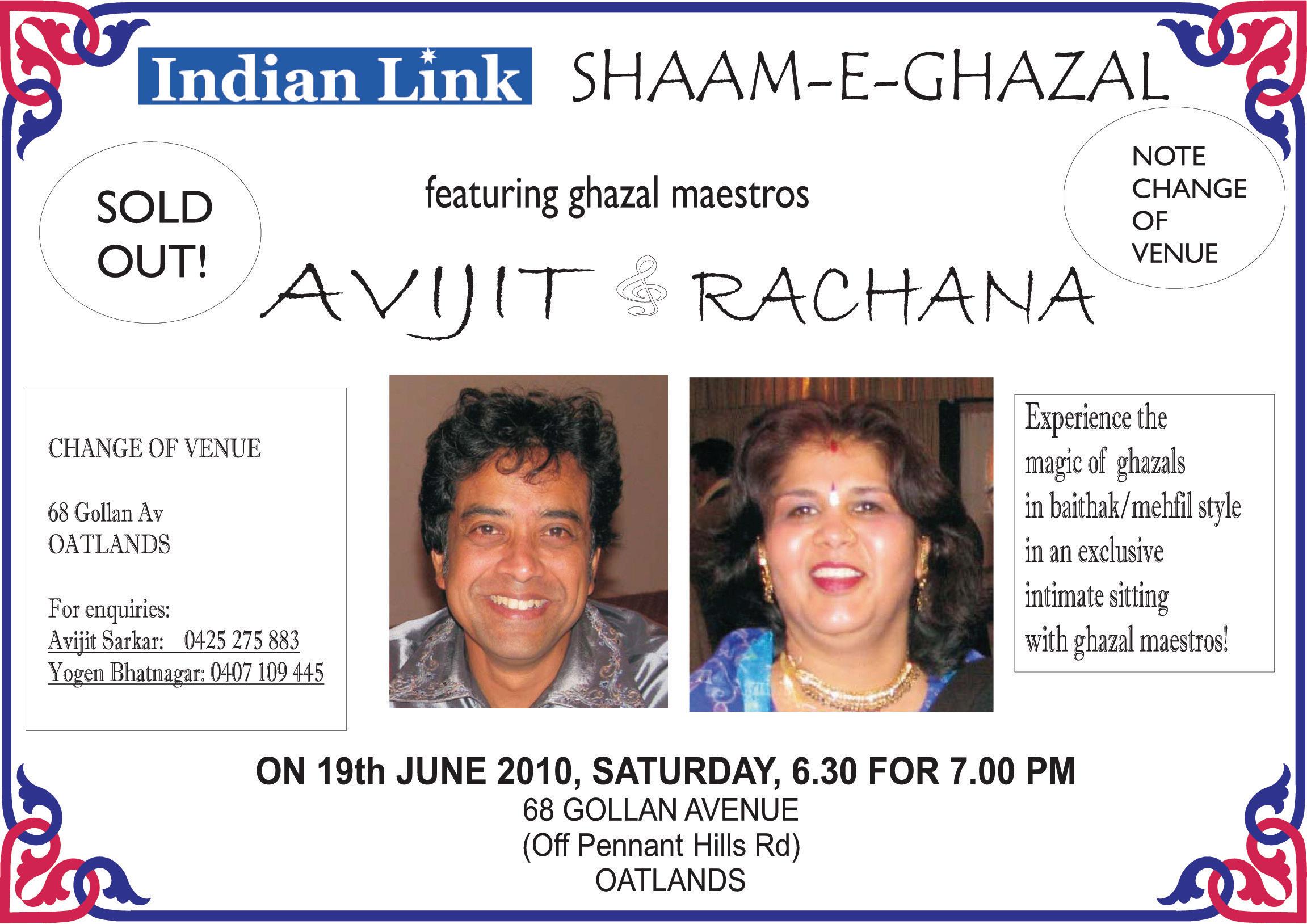
58 <> JUNE (1) 2010 INDIAN LINK
Ron and Raas Garba
It’s been a journey of delightful discovery dating from the 1920s, and India still hasn’t lost its charm for Ron Whitmore
BY MALAVIKA SANTHEBENNUR
Meet Ron Whitmore, a Welshman living in Australia since the past 60 years, who has been looking for Diwali cards for a while now. “I like to include a quality card with my box of Diwali sweets,” says this 80-plus Indophile, whose association with all things Indian has been long and interesting.

Malavika Santhebennur: You have lived in India briefly…

Ron Whitmore: I was in the Royal Navy, Fleet Air Arm serving in the British Pacific Fleet (BPF) off Okinawa when World War II ended. In those days I was assigned to the East Indies Fleet and had my first taste of Asia when my squadron was a few miles south of Colombo. I was then very happily posted in Ceylon with nothing much to do, then to Coimbatore where there was an equal amount of nothing to do, thence to Singapore where there was something for me to do, but very little and eventually in November 1946 I arrived back in the UK. I transferred to the Royal Australian Navy in 1950.
MS: What compelled you to travel to the sub-continent so often?
There are too many Hindu Gods to remember at my age and too many identities for me to fully comprehend
RW: I grew up in the 1920s and 1930s when many of my schoolboy stories featured India, e.g. the Bengal Lancers, the RAF attacking the “wily” Pathan in Afghanistan etc, and of course there was always Indian Army personnel helping the British to maintain the British Empire and all these were exciting to my schoolboy mind. Words like havildar, subahdar, sepoy, were common in my vocabulary and their use was second nature to me. I also had an uncle who lived and worked in Calcutta, and my cousin who was born there spoke Hindustani, as it was called then, before he spoke English. Our two families met during leave periods and my cousin and I more so when he attended boarding school in the UK. The Calcutta suburb of Ballygunge where they lived seemed as familiar to me as my own home in North Wales. So although I had never been there I felt I knew it, almost with a sort of affection.
I was a strong believer in the British Empire and India was known as the Jewel in the Crown. My belief grew stronger during WW2 when the Indian Forces played such an important role in the Allied cause, as they did in WW1. At that time the politics of oppression and self government had not come into my mind, and Mahatma Gandhi was considered only as a nuisance. In 1944 India and Ceylon were much the same place, both part of the sub-continent and the Empire, there were many Tamils in Ceylon, and to me that was the Indian way of life. I loved Ceylon, so it followed that I loved India and later in life, I visited India en route to Europe.
I love India and Indians and who would not love spending time in the vicinity of the most beautiful building in the world, the Taj Mahal with the river Yamuna flowing past. I used to stay in New Delhi, catch the Shatabdi Express at 6 am, get to Agra a couple of hours later, stay in the Taj Hotel and return to New Delhi on the train from Bhopal at 8 pm, on whatever day suited me. I didn’t need an excuse or reason!
MS: Are there any Indians you have heard of, met or read about who have made an impression on you?
RW: Just before Partition and the ultimate Indian independence I started to study Gandhi, and from a nuisance he became to me a man of good sense, a righteous man, a man who could bring India safely through the difficult times that were obviously about to come. He became a hero to me and his murder caused me much sorrow. Nehru impressed me, Jinnah didn’t. I have never made up my mind whether Partition was the right course of action or not; I tend to think it was unavoidable, because of hot-heads in both the Hindu and Muslim camps.
Over the years through to today, I am very happy to say I have made and known many Indian, Sri Lankan and Pakistani friends, and at my wife’s funeral ten years ago, there were both Hindus and Sikhs present, who were of great support and some still are! At 85, so many of my older friends have died, but with the immigration policy of this country I am constantly making new ones. My neighbours from New Delhi opposite my home in Wahroonga are great friends. My neighbours across the street are amongst my very close friends and when their daughter was married I was included in just about all the events and celebrations; and even earned some commendations for my ability as a stick dancer at the Raas-Garba. But I also earned a sore back as I was about 80 at the time, and let my exuberance outweigh my common sense! I also have a very dear Sikh family of friends living just a few suburbs away.
MS: What are your views on arranged marriages and Hinduism, from your frequent interaction with Indians?
RW: I don’t have strong views, I believe in live and let live. I respect those who hold to arranged marriage and have known of several successful ones. I respect all religions and I know more about the Muslim religions than Hinduism, which I find somewhat complicated. There are too many Hindu Gods to remember
at my age and too many identities for me to fully comprehend. Nevertheless, I fully respect a Hindu who goes to the temple to start his day with prayers to Ganesh. I have also attended the Gurdwara with my Sikh friends.
MS: What’s the significance of Diwali for you?
RW: I love the Festival of Lights. It is a very happy time for my Indian friends, and I am delighted whenever I am invited to join them in any aspect of it. I know the story of Lord Rama and after that it is purely a matter of joyous emotion. I firstly became aware of Diwali on an appointment to Kuala Lumpur in Malaysia, where it is known as Deepavali and is a significant festival and a public holiday.
MS: How about Indian food?
RW: I love most Indian food, except the very sweet puddings. For years I have been a reasonably good curry cook and enjoyed entertaining my friends to curry lunches, but as I age I have had to reduce the chilli content. Vindaloos are out and Madras Beef is now about my hottest. I always have bags of curries and lentil daal in the freezer at home, and I don’t keep strictly to the cooking rules as I am very fond of fenugreek (methi) and cardamom, so I add them to most of my curries, whether or not they are Southern or Northern Indian recipes.
MS: Do you have a favourite Indian restaurant?
RW: Not really. I am willing to try most from that lovely curry hall in Homebush to the more expensive CBD or suburban restaurants. There’s a very good one on Concord Road, Abhi’s, and one in Turramurra.
MS: What about Indian souvenirs or artefacts, do you own any?
RW: I have a few that are in keeping with the general style of my furnishing and I get much pleasure from their presence.
JUNE (1) 2010 <> 59 NATIONAL EDITION
Words like havildar, subahdar, sepoy, were common in my vocabulary and their use was second nature to me
INDOPHILE www.indianlink.com.au

60 <> JUNE (1) 2010 INDIAN LINK

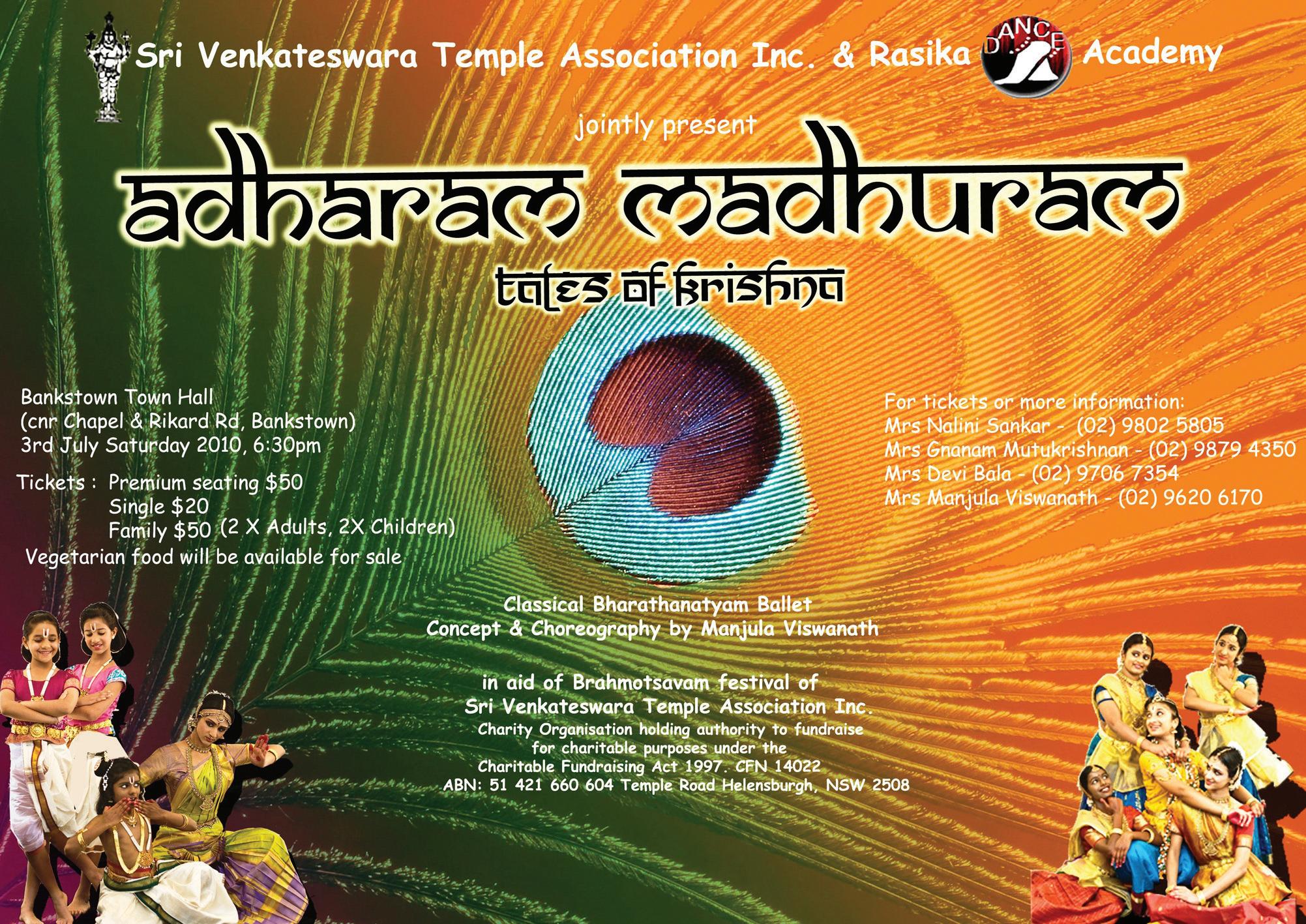
JUNE (1) 2010 <> 61 NATIONAL EDITION
Winnipeg’s Winning Ways
By THOMAS E KING
For some 6000 years, aboriginal people living on the western plains of a vast expanse now known as Canada tracked great herds of buffalo. Periodically, members of these nomadic tribes would gather to undertake trade and commerce on a prime parcel of land overlooking the place where the Red and Assibinboine rivers converge.
The practice continued until the late 19th century when Canada’s country-spanning rail line was completed. In 1886, Winnipeg, the provincial capital of Manitoba, was finally linked with a single ‘ribbon of steel’ that joined Vancouver, British Colombia to the west and Montreal, Quebec to the east. The world’s second largest country could, at last, be crossed in style and comfort.
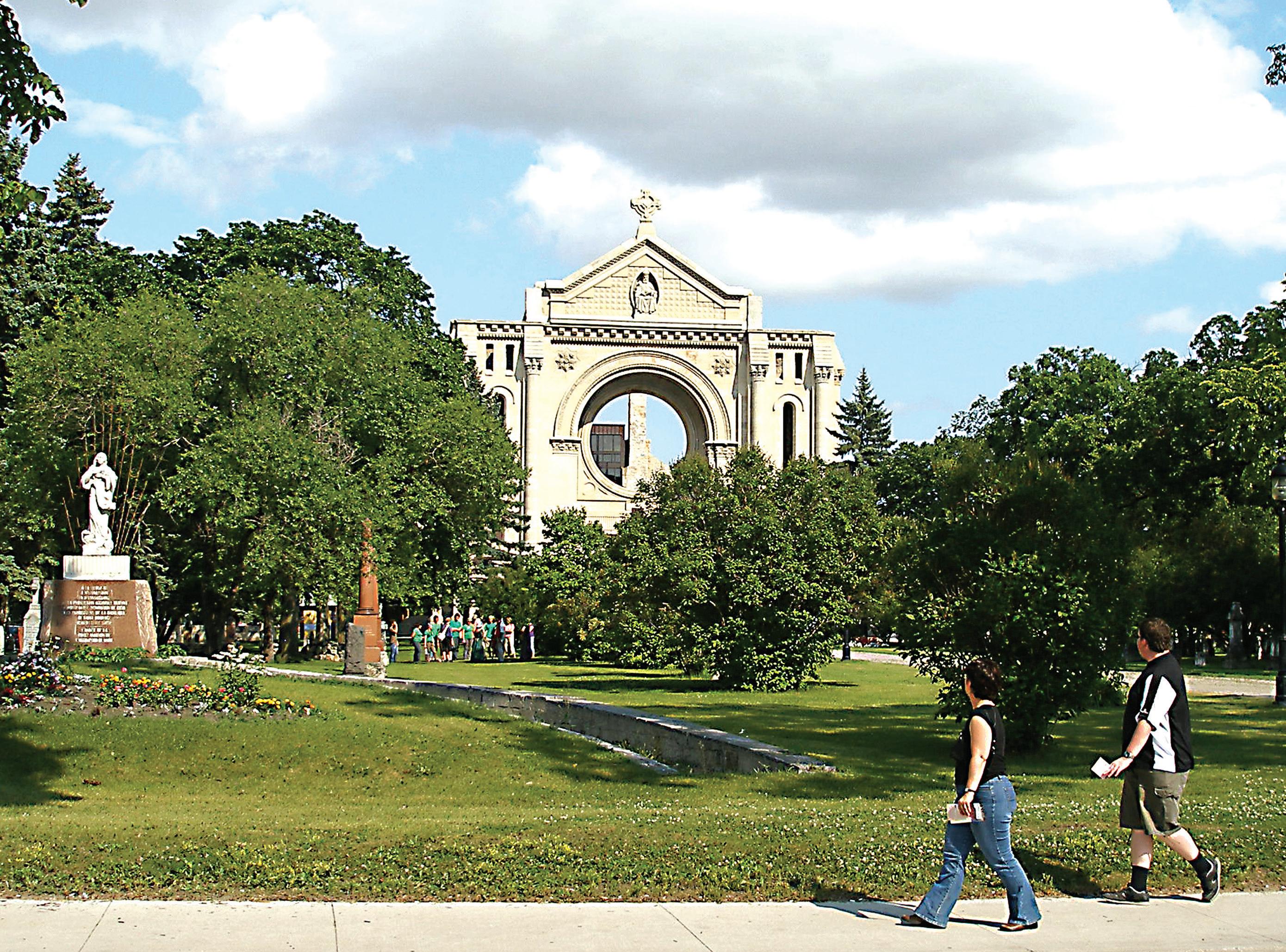
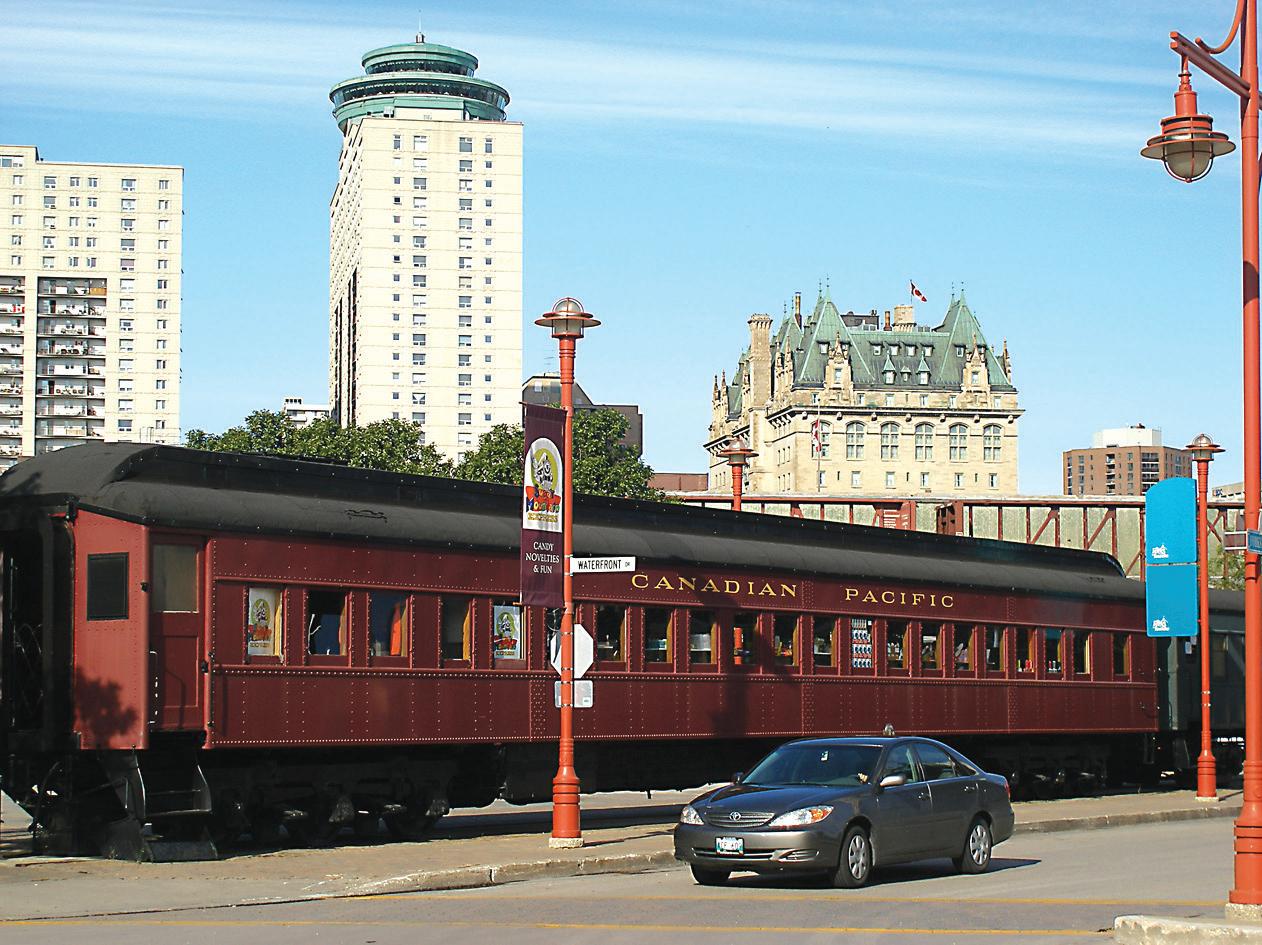
The strategic peninsula where native campfires once burned was turned into a rail yard in the 1890s but for much of the 20th century the area now called The Forks was a derelict dump. That situation changed in the mid 1980s when the 22 ha. site was entrusted to the city, and transformation began that turned it from a neglected eye ore to sparkling attention getter.
The old commercial constructions remain intact with old advertisements plastered on their sides, still spruiking curealls for all types of 19th century maladies
On a sunshine sprinkled summer’s day I stood in what’s become a sophisticated riverside park, commercial centre and recreation area, looking at the spot where the two muddy waterways intertwine, while listening to the beat of an up tempo jazz band nearby. The Forks National Historic Site as it’s officially called today – one of the most visited attractions in the population 700,000 plus city – is a relaxing place for summer strolling and winter ice skating.
As well, it’s also a hub of quality shopping and gourmet dining throughout the year. Reminders of those exciting rail days now contain retail outlets dedicated to these two fine pursuits. For instance, an old red Canadian Pacific Railway carriage is now a cosy restaurant while the rock-solid Fork’s Market, a former stable, now houses stalls where some 300 talented artisans sell a
variety of unique arts and crafts, all original local products. As well, there’s an eclectic collection of eateries. One evening after a day-long excursion through the city, I returned to the busy market for a meal of Ukrainian specialities; another evening it was tandoori treats.
While the historic buildings at The Forks have been restored, Fort Garry is a reconstruction. Winnipeg was founded as a fur trading post by the French Canadian explorer La Vérendrye in 1738 with the first fort constructed by the Montreal-based North West Company over 80 years later. I walked through the large gates built to replicate the entrance to the stronghold and into the protected compound where a colourful cast of characters was on hand to add authenticity to this tiny time capsule.
Throughout the sensational summer months, daily life from the 1815s is reenacted at the replicated Fort Garry by historical interpreters. Dressed in a beaded buckskin costume, a First Nations woman showed how pemmican was made. The
seemingly unpalatable concoction of 60 per cent dried buffalo meat and 40 per cent oil was loaded with calories needed by energycraving voyageurs (boatmen) who would often paddle their cargo-laden canoes for up to 18 hours a day. Furs had to be sent to waiting ships in Hudson Bay in the north and supplies brought in to this remote settlement via a series of inland waterways before the onslaught of winter.
In the replicated general store, a stocky salesman with a stovepipe hat told me that beaver fur – the currency of the day - was used to make stylish top hats for European gentlemen. Four beaver skins brought in by First Nations people who often did the actual trapping, was worth one genuine Hudson Bay blanket, he said, pointing to a colourful assortment of striped blankets filling a crude shelf on the bare timbered wall. His in-character explanation, period costume and 19th century mannerisms added greatly to the experience.
I ‘travelled’ from the early 19th century at the fort to the early 20th century in only

62 <> JUNE (1) 2010 INDIAN LINK
TRAVEL
2 1
FLIGHTS
Air Canada operates the daily CA34 flight from Sydney to Vancouver. The 14 hour non-stop flight is in a Boeing 777-200LR equipped with a personal touch screen TV at every seat and in-seat power for laptops. See your travel agent or contact Air Canada Australia-wide on 1300 655 767 for details of flights and fares. See www.aircanada.com Interstate passengers can easily connect with CA34 as it departs Sydney at 1330.
TRAVEL
Winnipeg is three air hours east of Vancouver. Air Canada has multiple flights every day connecting the two provincial capitals. In addition, you can travel by coach (Greyhound Canada) or car making stops at Calgary, Alberta after a scenic trip through the Rockies and Regina, Saskatchewan before continuing on the Trans Canadian Highway to Winnipeg.
ViaRail’s
Canadian offers a thrice weekly eastbound service. See www.viarail.ca and www.canadabyrail.ca
ACCOMMODATION
A former railway hotel, The Fort Garry is a historic 246 room property oozing with style and substance. See www.fortgarryhotel.com Located within the Forks precinct, boutique The Inn at the Forks offers 116 contemporary rooms near the produce and arts market. See www.innforks.com

EVENTS
Indians living in Australia will be able to meet with Indians residing in multicultural Winnipeg during Folklorama. Set over August 1 -14, this cultural celebration features some 30 pavilions located in halls and community centres throughout the city. See www.folklorama.ca
If you are headed to the city next month, then the Winnipeg Folk Festival is the event to attend. Numerous musical genres compete for
1 The remains of the Old St Boniface Cathedral are the iconic symbol of the French district

2 The Forks features shopping, stages for cultural events and interesting dining options
3 The Exchange District has a grand collection of century-old buildings often used as film sets

4 A cast of characters recall stories about early fur trapping days at the replicated Fort Garry

a few blocks when I visited the Exchange District in the heart of the city. This defined area which consists of 20 city blocks was the city’s financial hub for several decades before and after the turn of the 20th century. The railway had brought great prosperity and the city’s population nearly tripled from 40,000 in 1900 to 115,000 in 1907. Around 150 brick warehouses and commercial buildings still stand in this fascinating area which was given a heritage listing in 1997.
The old commercial constructions remain intact with old advertisements plastered on their sides, still spruiking cure-alls for all types of 19th century maladies. The scene is so evocative of days long gone that film makers have used “the best collection of turn-of-the-century architecture in North America” as convincing backdrops in Hollywood creations such as the circa 2006 The Assassination of Jesse James with Brad Pitt.
Like the Exchange District, St. Boniface is easily walkable and as I discovered, it’s a leafy tree-lined delight in summer. Home to the largest French speaking community in western Canada, Winnipeg’s French quarter began in 1818 with the establishment of the first Roman Catholic mission in the west. The landmark of the area is the towering façade of the circa 1908 Romanesque St Boniface Cathedral.
The cathedral burned in the late 1960s and a large hole can be seen in the wall where a massive stained glass window once existed. Visitors scurry around this oddity trying to find the best angle to photograph it and then often wait for an escorted walk in the footsteps of history.
I joined the unusually named Theatre in the Cemetery for a very entertaining yet highly informative narrative which is regularly conducted by costumed guides. For an hour I was enthralled by stories about the life and times of so many people who have all significantly contributed to Winnipeg, a rich multicultural oasis set on the scenic prairies of western Canada.
heaters and washrooms.
audiences during this 5-day outdoor musical extravaganza scheduled from July 7 – 11. See www. winnipegfolkfestival.ca/wp
TRAVEL EXTRA
Churchill, Manitoba’s most northern town, is the base for polar bear viewing in winter and beluga whale watching in summer. Best seen from mid June to mid August, beluga whales are not true whales but water-breathing fish closely related to the sailfish and marlin. With up to 3000 belugas spending the summer in the Churchill River, the chance of seeing these normally docile sea creatures during a snorkelling or kayaking adventure is exceptionally high.
Polar bears, by contrast, are best seen in and around Churchill from October to December when temperatures average a temperate -10°C. Yes, temperate because during January and February the temperature dips to a numbing – 40°C! Excursions are made in a Tundra Buggy equipped with propane
Travel between Winnipeg and Churchill takes 36 hours by rail or it’s a mere 1½ hour flight with Calm Air. Frontiers North Adventures is a specialist tour operator able to make all arrangements for any adventure in Manitoba. The long established Canadian company planned our comprehensive itinerary of Winnipeg and Churchill entirely by e-mail! Contact info@frontiersnorth.com, tel. (204) 949 2050. See www.frontiersnorth.com
INFORMATION
For advice on planning your holiday in Canada visit www.canada.travel or call the Canadian Tourism Commission on 1300 300 576. Also see www. destinationwinnipeg.ca and www.travelmanitoba.com Available from leading book outlets, Lonely Planet’s Canada has substantial information about Winnipeg, Churchill and other places of interest in Manitoba and all other parts of Canada.
JUNE (1) 2010 <> 63 NATIONAL EDITION
www.indianlink.com.au
Travel notebook Winnipeg
3 4
I ‘travelled’ from the early 19th century at the fort to the early 20th century in only a few blocks when I visited the Exchange District in the heart of the city
Photos: Thomas
E. King



64 <> JUNE (1) 2010 INDIAN LINK
Goodbye, Blinky Bill

Deforestation and disease is taking its toll on these native animals, making them a target for extinction
which it shares a common ancestor.
BY GRAHAM SIMS
As we all know, Australia has more than its fair share of strange and unique creatures, such as the platypus, kangaroo, echidna, emu, kookaburra, and so on. At an official level, we don’t have a “national” animal, although the kangaroo and emu appear on several coats of arms or crests.
We mourn the passing of the thylacine, the so-called Tasmanian Tiger, (for which we were responsible), and there is currently a very justifiable concern about the doubtful future of the Tasmanian Devil, infected with contagious and potentially fatal facial tumours.
On the world scene, Australia has a pretty lamentable track record for looking after our unique wildlife heritage and one of our most internationally recognised and loved Aussie icons is now facing a very grim future, almost certainly doomed to extinction in the wild.
The animal concerned is the koala, once called “The Native Bear” and most probably the origin of the ubiquitous “Teddy Bear” of song, cuddly toy and storybook fame ... and supposedly sourced to U.S President “Teddy” Roosevelt, who had such a toy bear.
The Australian author, Dorothy Wall, wrote a celebrated children’s book called Blinky Bill, the story of a young orphaned koala. Although first published in 1939, Blinky Bill is still in print, and has even been made into a film. The koala could lay claim to being Australia’s most instantly and internationally identifiable symbol, adored, (at least until they actually meet one) by overseas tourists, and once used by Qantas in a major promotions campaign, despite the kangaroo being the official symbol of our national airline.
Despite their fluffy ears, boot-button nose and eyes, their cute, furry appearance and supposedly harmless, cuddly nature, the koala, in reality, is not a mega-star in personality, intelligence or sex appeal. Even Prince Charles referred to them, after one or two encounters of the close kind, as “piddling, stinking little beasts”.
The koala desperately needs a new press agent, before it’s too late!
So, where does the koala stand in Aussie culture and environmental science, and what is its likely future? Firstly, there were countless thousands, probably millions, of koalas up and down the entire east coast and in Western Australia, before the arrival of the first Europeans.
They were known to, and used by the Aborigines for their fur and probably as a food source. The dingo, bush-fires and severe drought took their due toll of the animals, but they still thrived.
As was the case with several Australian creatures, early Europeans tried to correlate the koala with a known, familiar animal. Hence it became the Native Bear or Koala Bear. (“Koala” supposedly means “no drink water”). Even throughout my childhood it was still referred to as a Koala bear, although as a marsupial, it is not related to bears. Its closest living relative is the wombat, with
Although the koala is arboreal and has paws suited to climbing, it can run (or bound) quite well on the ground. Indeed its anatomy is closer to that of a grounddwelling animal. Its pouch, for example, slopes backward (or downward), like a wombat’s, and is potentially quite dangerous for a young joey. The wombat’s brain, however, is much larger and more complex.

Early settlers made use of the koala’s fur for hats and rugs, and intriguingly, there is no evidence of it being a clan totem for any Aboriginal group, in contrast to other animals such as the kangaroo, crocodile etc, which were tribal totems.
In the wild, koalas are almost the ultimate loners. Even the 9-12 month bond between mother and cub is broken the minute a new joey reaches the pouch.
The largest (13 kilo), dominant or alpha males are brutal towards all rivals and towards all sexually available females, including their own daughters. In a further mismatch, males are sexually active all year, whereas females (10 kilos or less) ovulate for only a few hours each 35 days. Many males try to mate with available females, but usually only the alpha male succeeds. Even then, the procedure hardly looks and sounds like courtship. Years ago I heard the roars, grunts and screams of “courting koalas”. I was reminded of a bushman’s description of it sounding like “a mad pig trying to sound like a demented donkey”.
After only 35 days, one tiny “joey”, the size of a peanut and weighing only half a gram, is born in the normal mammalian way and, blind and hairless, makes the hazardous journey up into its mother’s pouch, hopefully attaching itself to one of only two nipples. There it remains for 13 weeks (twins are extremely rare). Until comparatively recently, it was thought that marsupial babies (koalas, kangaroos, possums etc.) were actually born in their mother’s pouch, The late Dr Harry Frith of the CSIRO proved that the birth process is the same as for all mammals.
The koala also has a strange, internal, tubular organ, some 2 metres long, thought to be the equivalent of our human appendix. It is now known that this organ, called the caecum, is a means of slowly processing and neutralising the toxins in the eucalyptus leaves which form the koala’s diet. And here is another of the koala’s oddities. It was long thought that the koala lived and thrived on eucalyptus leaves alone, and only those from a specific type of gumtree. It is now known that it will eat the leaves of over 30 types of eucalypts, but all of them, to varying degrees, are toxic.
Furthermore, the toxins are strongest in the newest, freshest, greenest leaves, which are precisely the ones koalas seem to prefer. Hence the 2-metre long caecum has to slow down the koala’s metabolism, so that the minimal, manageable amounts of toxins actually get into the koala’s system.
Despite their fluffy ears, boot-button nose and eyes, their cute, furry appearance and supposedly harmless, cuddly nature, the koala, in reality, is not a megastar in personality, intelligence or sex appeal
Western Sydney’s Doonside, very helpfully explained that although koalas seem to thrive in captivity, (just as well, given their grim future in the wild), they’ve never been able to wean them off their toxic dietary preference. Although they will occasionally nibble on a piece of fruit, they soon return to their beloved gum-leaves. Even specially prepared food pellets are rejected. Despite this, they can live twice as long in captivity as in the wild, where 10 years is their life expectancy. Evan mentioned with pride that Featherdale has “an old girl, 19 already ... and still going strong!”
One doesn’t need to be Einstein to realise that, in the wild, a slow moving, slow eating, slow breeding, eucalypt dependent tree dweller such as the koala requires extensive forests of gum-trees, or at the very least, appropriate corridors of them, through which it can range, feed and breed in safety. It no longer has them!
The koala’s habit of spending up to 19 out of 24 hours sleeping or resting, is not, therefore, “laziness”, but a necessary means of processing and safely digesting its potentially dangerous diet. If it tried to be constantly active, it would die. It’s now also been discovered that as soon as the baby koala attaches itself to a nipple, the mother koala exudes a “pap” from her caecum to help her joey cope with her potentially toxic milk.
In the wild, koalas have also been observed eating leaves from the acacia (wattle), boxtree, native cherry, tea-tree, native kapok and swamp paperbark, even pine-needles. All of these contain toxins.
I was intrigued to know whether, in captivity, koalas could be persuaded to eat fruits or non-toxic plants etc. Evan Harris, a senior keeper at Featherdale Wildlife Park, in
The extensive and rapacious deforestation up and down the entire east coast of Australia and our forests’ replacement by modern development foreshadow the extinction of the koala in the wild. Tokenistic bits of parkland and scattered trees are not enough to save it.
And as if this weren’t enough, the defenceless koala has been hit for six by another scourge. Increasing numbers of wild koalas, (and even some in captivity), are infected by an insidious, sexually transmitted disease called Chlamydia. Its external symptoms include “wet rump”, but, even more seriously, it affects the reproductive organs, especially in females, leading to sterility and death. There now seem to be very few populations of wild koalas not affected.
Zoo-kept koalas can, of course, be monitored and treated, but Featherdale’s Evan Harris indicated that there are now several forms of Chlamydia-related diseases and retro-viruses making the koala’s future, without our help, even grimmer.
With sadly typical hypocrisy, koalas have been “protected” in Australia for 100 years (in Victoria since 1898, NSW since 1909 and Queensland since 1927).
A few pitifully underfunded researchers strive to find the cause of, and cure for, the koala’s life-threatening diseases; dedicated lobby groups, zoos and carers do their very best for those that come under their care ... but as John Williamson’s song, Goodbye, Blinky Bill so poignantly says, it’s not enough.
Sure, in reality, the koala is not the sweetsmelling, cute and cuddly, loveable “Teddy Bear” we mythologised it to be. It is, however, a unique Aussie icon, struggling to survive in an increasingly hostile environment which we have changed for our own, selfish benefit.
It deserves a better fate than its likely one.
JUNE (1) 2010 <> 65 NATIONAL EDITION
DINKUMAUSSIE www.indianlink.com.au
Years ago I heard the roars, grunts and screams of “courting koalas”. I was reminded of a bushman’s description of it sounding like “a mad pig trying to sound like a demented donkey”
WENTWORTHVILLE $329,000
QUALITY TOP FLOOR UNIT
This 2 bedroom top floor unit has features galore. With open plan living, modern polyurethane kitchen & gas cooking, stainless steel appliances, modern bathroom with spa & second toilet, two balconies –one off the main bedroom and a large balcony off the living room over looking an in ground salt water pool, internal laundry, lock up garage and a short walk to station, schools and shops.

WESTMEAD $394,950
LIFESTYLE
Situated in the final stage of this prestigious complex is this ultra modern 2 bedroom unit with spacious living areas gorgeous kitchen with gas cooking down lights throughout, air conditioning, vogue décor, video security lock up garage. Enjoy the features of this complex including swimming pool, tennis courts, gymnasium, BBQ area and more, inspection highly recommended.
Laing & Simmons Wentworthville 9688 4000
Contact Alan Fowler
SOUTH WENTWORTHVILLE $650,000
HUGE POTENTIAL!
Currently split into 4 flats with own meters, returning $800PW, set on over 1,000sqm block with potential for re development.
Laing
NORTH PARRAMATTA $259,950




Saturday 19 June 2010 on site at 11:00am
765SQM BLOCK
12 Springdale Road

Spotless presentation, 3 bedroom home with modern bathroom & kitchen, separate lounge, large rumpus room, lock up garage and more. Great potential for redevelopment (Subject to council approval), walk to shops & station, Fantastic opportunity, a must to inspect.
Open For Inspection: Saturday 12:30-1:00pm
Auction: Saturday 26 June 2010 on site at 1:00pm

Laing & Simmons Wentworthville 9688 4000








Contact Alan Fowler 0413 057 699 or Leanne Ollerenshaw 0414 790 887
All in a convenient area close to amenities and schools
Open For Inspection: Saturday 1:30-2:00pm Auction: Saturday 19 June 2010 on site at 2:00pm Laing & Simmons Wentworthville 9688 4000 Contact Alan Fowler 0413 057 699 or Leanne Ollerenshaw 0414 790 887
WENTWORTHVILLE $309,950



PRIME LOCATION
Be amazed by this well presented 2 bedroom unit, features include built-in’s, separate lounge and dining, internal laundry, tiled
WENTWORTHVILLE $329,950
66 <> JUNE (1) 2010 INDIAN LINK OLD TOONGABBIE AUCTION HUGE BLOCK WITH WIDE FRONTAGE Set in a high position with local views this 3 bedroom home requires TLC. With 27.48m frontage and 1,162sqm this property has huge potential, build your dream home or develop (subject to council approval). 20-25 minutes walk to Wentworthville station and transport at the door. Rare opportunity a must to inspect! Open For Inspection: Saturday 11:30-12pm Auction: Saturday 3 July 2010 on site at 12pm Laing & Simmons Wentworthville 9688 4000 Contact Alan Fowler 0413 057 699 or Leanne Ollerenshaw 0414 790 887 PENDLE HILL $399,950 NORTH PARRAMATTA $389,950 UNIQUELY DESIGNED This unique split level designed townhouse is definately worth the look, features include 3 double sized bedrooms, main with ensuite & balcony, ducted a/c throughout , large lounge & dining area, modern kitchen, large paved courtyard & double remote LUG, 3 toilets in total, walk to Pendle Hill Station, shops & amenities Laing & Simmons Wentworthville 9688 4000 Contact Leanne Ollerenshaw AS NEW! This Apartment is absolutely spotless. Features include 2 large bedrooms, floating floors, large lounge and dining room, modern kitchen with gas cook top, 2 modern bathrooms, large balconies and secure lock up car spaces, all set on the second floor, close to shops and transports Laing & Simmons Wentworthville 9688 4000 Contact Alan Fowler WENTWORTHVILLLE AUCTION TORRENS TITLE 4/26 Stapleton Street Only 2 years old this private 2 bedroom villa has features galore with ensuite to main, built in wardrobes, ducted air conditioning and vacuum, garage with remote door, own courtyard and all situated with in walking distance to shops & station. MUST BE SEEN! Open For Inspection: Saturday 10:30-11:00am Auction: Saturday 3 July 2010 on site at 11:00am Laing & Simmons Wentworthville 9688 4000 Contact Alan Fowler 0413 057 699 or Leanne Ollerenshaw 0414 790 887 WESTMEAD $335,000 WENTWORTHVILLE $319,950 EXECUTIVE LIVING Located on the 6th floor this 1 bedroom spacious apartment has lots to offer! Features include one large bedroom with built in & air conditioning, large lounge & dine area with air conditioning, modern bathroom, huge gourmet style kitchen with gas cook top, alarm, security intercom, large balcony overlooking pool and tennis court facilities and lock up garage. Laing & Simmons Wentworthville 9688 4000 Contact Leanne Ollerenshaw 164 STATION STREET Immaculate ground floor unit featuring 2 large bedrooms with built ins, large lounge & dining area with floating floors, modern bathroom, internal laundry with 2nd toilet, modern kitchen with gas cook top, lock up garage and large private decked courtyard excellent for entertaining, all set close & handy to schools, shops & trains. Laing & Simmons Wentworthville 9688 4000 Contact Leanne Ollerenshaw PEMULWUY AUCTION ONE OF A KIND 107 Naying Drive Superbly situated in a central location within the highly attractive Pemulwuy estate, this 19 month young home is everything you’ve been looking for. • Attractive layout with stunning interiors • Open-plan kitchen, with stone bench top and gas cooking • Stunning entertaining area with timber deck, built in BBQ and water feature • Generous sized bedrooms with built-ins and potential 4th bedroom • Good sized study and separate large dining room • Double lock-up garage on rear access lot • Ducted air conditioning • Foxtel and broadband set-up Open For Inspection: Tuesday 6:00-6:300pm &
Auction:
Laing
Contact Leanne Ollerenshaw
Saturday 10:30 - 11:00am
& Simmons Wentworthville 9688 4000
0414 790 887 or Alan Fowler 0413 057 699
Laing & Simmons Wentworthville 9688 4000 Contact Jim Malamas
Laing & Simmons Wentworthville 9688 4000 Contact Alan Fowler WENTWORTHVILLE AUCTION
GREAT STARTER Great opportunity to buy into this market! This 2 bedroom unit features separate lounge, internal laundry, and undercover car space in a security building close to transport and shops. A MUST TO INSPECT. WONT LAST!
throughout, modern kitchen & bathroom, lock up garage. Close to shops, schools and station. Laing & Simmons Wentworthville 9688 4000 Contact Alan Fowler WENTWORHVILLE AUCTION GREAT FAMILY HOME Located in a quite cul-de-sac surrounded by well maintained homes is this 4 bedroom brick home with air-conditioning, separate lounge and dining room. Timber floors to the main living areas. Built-in robes to all bedrooms. Kitchen boasts loads of cupboard space and serving counter. Complete with 2 bathrooms and ensuite, a remote controlled double garage with internal access, and enclosed outdoor entertaining area.
& Simmons Wentworthville 9688 4000 Contact Leanne Ollerenshaw RARE FIND Currently leased until December 2010 this well maintained villa is ideally located within walking distance to shops, station and transport. Includes 2 spacious bedrooms, air conditioned lounge & dining, modern kitchen with gas cooking, lock up garage and set in a small complex of 8. Wont Last! Laing & Simmons Wentworthville 9688 4000 Contact Alan Fowler WENTWORTHVILLE AUCTION LOCATION, LOCATION, LOCATION 40 Haig Street This home is ready for your family to move straight in, located in one of Wentworthville’s most Blue Ribbon positions this home has everything going for it! Features include 4 large bedrooms, 2 separate living areas, combustion fire place, ducted air conditioning, fully tiled throughout,2nd toilet & shower in laundry, modern kitchen, electric side gates, leading to a fully powered driveway and double lock up garage, great size yard for the family and even a fantastic cubby house is included. Open For Inspection: Saturday 1:30-2:00pm Auction: Saturday 26 June 2010 on site at 2:00pm Laing & Simmons Wentworthville 9688 4000 Contact Leanne Ollerenshaw 0414 790 887 or Alan Fowler 0413 057 699 WESTMEAD $399,950 GREYSTANES $419,950 AS NEW Only 3 years old this top floor unit is located in a popular within walking distance to shops & station features 2 large bedrooms, main with ensuite, open spacious living areas, latest bathroom & kitchen, large north facing balcony, video security and garage. Ideal for the first home buyer or investor. Laing & Simmons Wentworthville 9688 4000 Contact Alan Fowler A RARE GEM This 3 bedroom villa truly must be inspected as this property will surely please all buyers. Features include great sized bedrooms, built ins, ensuite to main, huge open plan lounge/dining, modern kitchen with granite bench tops, modern bathroom, tiled throughout 2x air conditioners, internal laundry and a massive private courtyard with your own storage shed along with a double remote lock up garage. Close to all locations with minutes walk to trains schools and shops. Laing & Simmons Wentworthville 9688 4000 Contact Jim Malamas
A choice of care
BY MARYAM MAGHSOODI
While the Australian population as a whole is ageing, the population of people from culturally and linguistically diverse (CALD) background is ageing even more rapidly.
As predicted by the Australian Institute of Health and Welfare (AIHW), by 2011 nearly 22.5% of Australians aged 65 and over will be from a culturally and linguistically diverse (CALD) background. It is also predicted that by 2011 one in every five people aged 80 and over will be from culturally and linguistically diverse (CALD) backgrounds. Ageing people from CALD backgrounds generally have poor access to aged care services and experience specific barriers. As a result of this, the Australian Government has identified these communities as a ‘Special Needs Group’ under the Aged Care Act 1997. It aims to provide affordable, accessible and quality aged care to all older Australians. Quality aged care is a fundamental right for all older Australians regardless of their cultural background, language, religion, economic circumstances or geographic location.


There are different types of aged care services in Australia, but the two government-subsidised aged care services are Community Care and Residential Care.
Community Care programmes
Community Care programmes are a diverse range of services which are designed to help frail older people to live in their own homes as long as possible. With the help of community care you can maintain your independence at home and in the community for longer than you thought possible. For a minimal fee, community care is available to a range of people like older people, younger people with disabilities, carers, and people with dementia, mental illness, chronic illness and people with brain injury.
How can Community Care help you?
Community Care programmes can assist and support you in managing daily tasks such as personal care (assistance with bathing, dressing and eating), meal preparation, home help (assistance with housework, laundry and shopping), gardening, transport to appointments and social support. Using community care services can improve your confidence and spirits, making your life more comfortable while you stay at home and perform activities of daily living to your optimum efficiency.
Available options

Different options are available in Community Care:
Community Aged Care Packages (CACP): These are very flexible and
and designed to help people who need more help than a community aged care packages can provide. Generally a person who requires high level care could be eligible for an EACH packages.
Extended Aged Care at Home Dementia Packages (EACH D): These packages are flexibly designed to help with individual care needs, providing high-level care to people who experience difficulties in their daily life because of dementia.
These Community Care services provide an intensive home-based care programme to frail aged people to help them to remain in their own home through an approved service provider. To access these services you need to be assessed by a member of the Aged Care Assessment Team. This assessment is free, at no cost to you.
Residential Care programmes
If you can no longer live at home due to age and illness, you may need to consider aged care homes or residential care service.
Residential Care service is an option for those who have complex and higher needs which cannot be met only at home. There are two types of residential care; low level care and high level care. Both levels of care provide a range of specified services such as: accommodation, basic furnishings, laundry, cleaning, meals and refreshment, personal care; assistance with bathing, dressing, eating and social activities. High level care is designed for frail older people who need 24–hour assistance and ongoing nursing care. For accessing these, the residential services Aged Care Assessment Team (ACAT) plays an important role in the assessments.
As a care recipient you need to make a
JUNE (1) 2010 <> 67 NATIONAL EDITION
SENIORS www.indianlink.com.au
The Australian government has organisations that help one make informed choices of care for older people as they age
You have the preference and privilege to make use of the support services available
The above information is adapted from The Department of Health and Ageing and www.agedcareaustralia.gov.au websites.
Quality aged care is a fundamental right for all older Australians regardless of their cultural background, language, religion, economic circumstances or geographic location

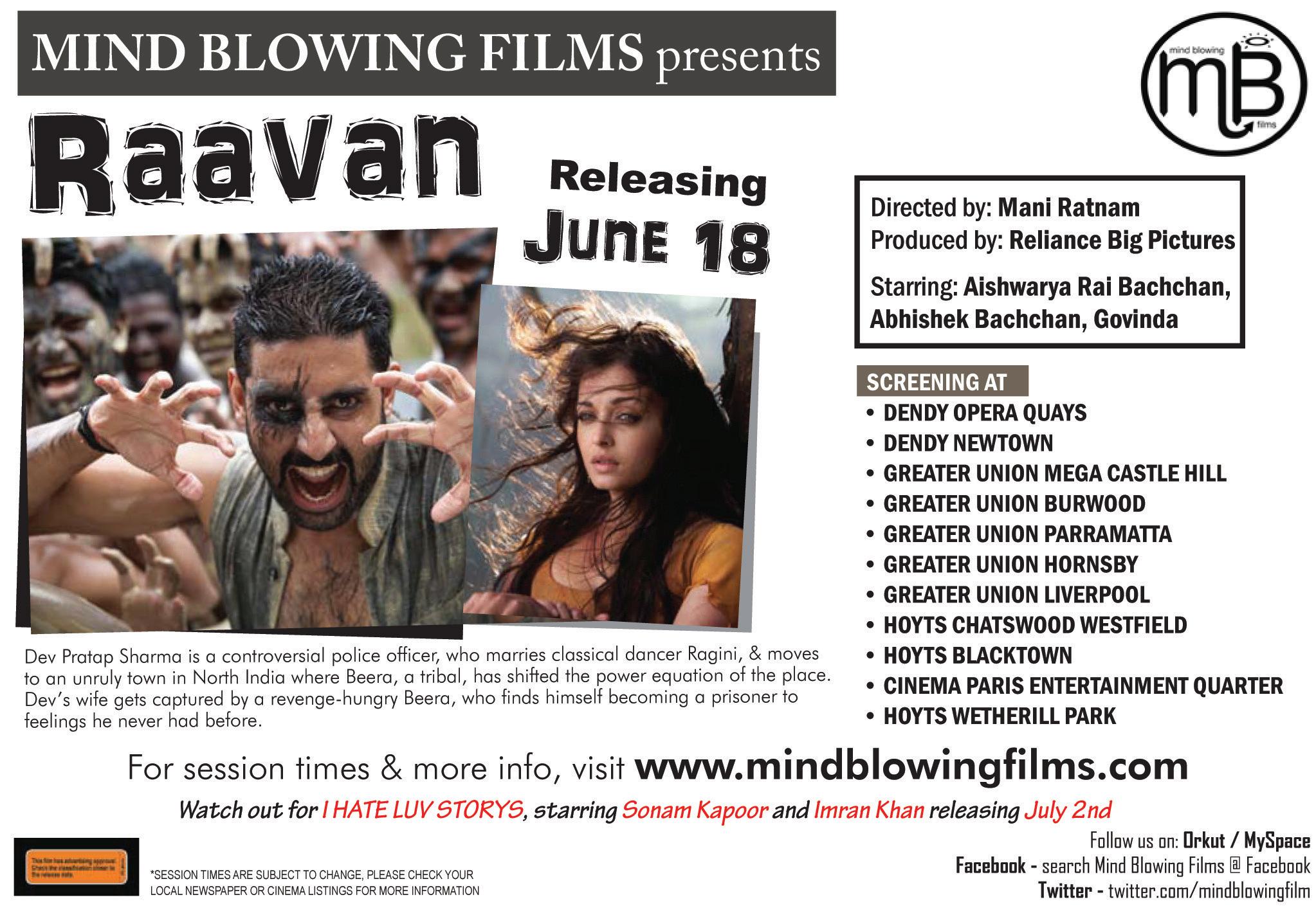
68 <> JUNE (1) 2010 INDIAN LINK
Get real with virtual
BY KANISHKO DAS
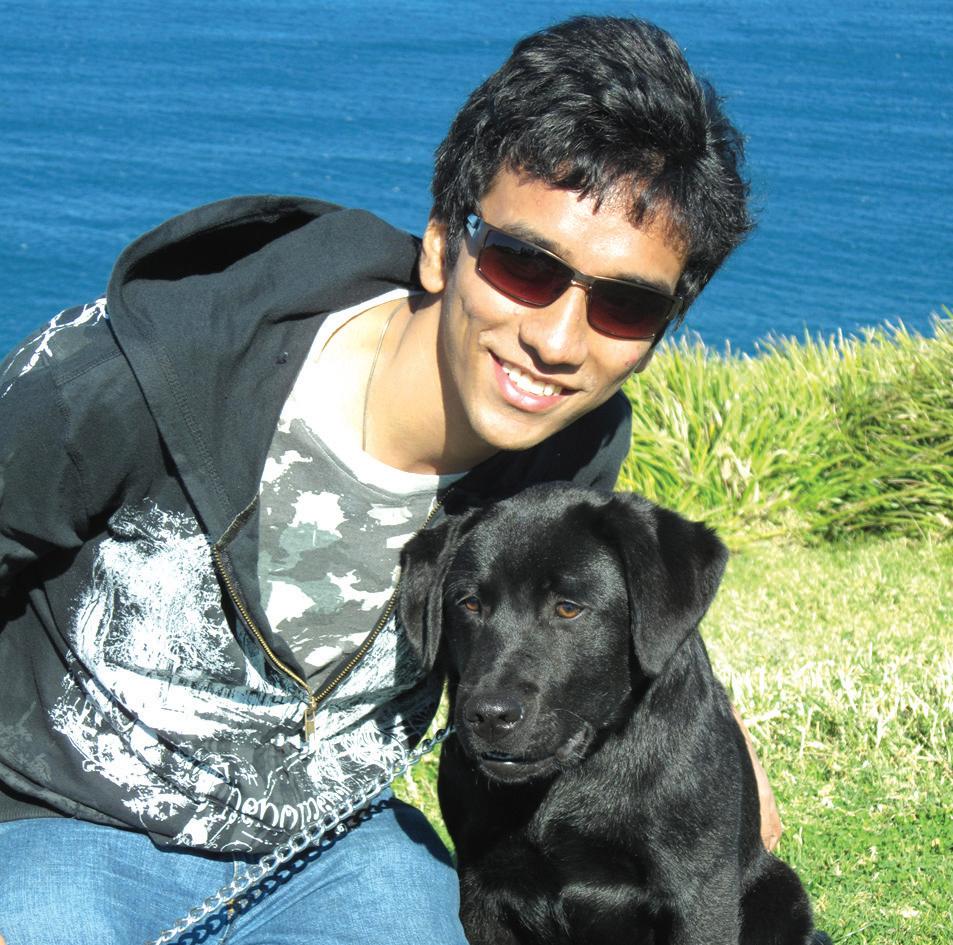
Gone are the days when a son would ask his reluctant dad for quarters to experience the ultimate gaming experience. The definitive quest for glory, either on a twisty race course or relieving a desperate hostage situation, was only for those who could wait in long queues for a shot at saving the world or a chance to stand on the top step of the podium. But fortunately, arcades are a thing of the past as bigger and better options have taken over the hearts and imaginations of gaming enthusiasts worldwide.
From battlegrounds to soccer pitches, racing cars to running lives, virtual is increasingly giving the real a run for its money. A gamer’s mind today is overwhelmed by stunning detail in which every nuance of reality is captured and depicted in the game-play of today’s warzones and race tracks. From real physics to breathtaking graphics, from out-of-the-world sounds to the intricacies and details of the story line, this era of gaming is no walk in the park. At present an average game takes up a massive 5 GBs of disk space, and sets demands like a bare minimum 512 MB graphics card and twin processors - basically pushing the average two-yearold PC to its limit just to run normally. The price tag on each game can also sometimes be regarded as equally extravagant. Long gone is the time when games used to be a tool merely for passing time.
With the advent of intuitive artificial intelligence in gaming just after the dawn of the new millennium, this form of entertainment has reached a totally new level today.
Soccer is an all-time favourite.

Electronic Arts (EA) has controlled the market of soccer maniacs for more than half a decade. Its latest instalment FIFA 2010 has simply gone on to overshadow its predecessors. Real time commentary, array of teams and stadiums to choose from and best of all, the player and team game-play together makes up a package which is mindboggling. From selecting a team jersey to line-ups, from scoring goals to hearing the cheering crowds, to team management - the atmosphere created during the entire gaming experience really kicks up the pressure during the matches and highlights both, ecstasy and the disappointment. The game is available on most common platforms today and hosts several new features including pre-match scouting, more intelligent team players, skilled dribbling and abilities to use skills employed in practice in real game-play. Devansh Dwivedi, a Delhi University student and gaming enthusiast claims, “It’s basically football coming to life!”

Next in line come the immensely popular first person shooter games. Brought into the limelight by the worldwide phenomenon of a game known as CounterStrike, again in present times these games have scaled dizzy heights, pushing frontiers in science and animation. A few games are currently setting the standard and are vying for top honours. Newest amongst these releases is Battlefield: Bad Company 2 by EA Digital Illusions CE. The game, made in mind-numbing detail, boasts physics in the real world in great detail amongst other highlights. From collapsing buildings due to continuous bombardment or the effect of taking bullets, its realism is absolutely spectacular. Based on general war-time scenarios between usual foes Russia and the USA, the single player mode alone is based around a US special ops team of four trying to diffuse World War III and their quest to find a deadly electromagnetic pulse weapon, while supplying vital intelligence to the head command about enemy associations, positions and advances. The team is forced on difficult terrains combating enemy defence and offence and making use of different vehicles including new additions, such as a UAV helicopter man patrol boat, a personal watercraft, a UH-60 Black Hawk a BTR-D host of different modern weapons including grenade launchers. The story with its twists and turns is in itself a complete package. But the multiplayer online version of the game again takes first person shooter games to a different level. The game is restricted to people 15 years old and over because of its graphic detail. “There is not a moment in the game where you think you know what will happen next; I actually find myself holding my breath sometimes. It is a surreal experience, just awesome!” says Jason Clemensen, a Sydney Uni student. Also falling in the same category are games like Corporation. Based on unearthly scenarios in the wake of a deadly virus amongst the human race, the game features a group of four survivors battling through hordes of the infected to try and get rescued. The game-play is controlled by an artificial intelligence engine which coordinates the levels of difficulty and scenarios, to make the actual playing more challenging. With heavy emphasis on cooperative game-play, it again hosts a range of features like out-of-the-

world graphics and new weaponry. Again, the story has a whole share of twists and is a feast for the average gamer, though restricted to 15 or 18 year olds and above depending on which country one resides in, due to safety issues. “It is a one of a kind game and the setting in certain levels really makes your jaw drop!” exclaims fan Simanta Mahanta, a student at the University of Texas at Dallas.
Racing cars have been the ultimate fantasy of millions of gamers, and racing video games have been around for a much longer time than most other forms of gaming. Leading this pack is a series from EA, the widely popular Need for Speed. The critically acclaimed series has rolled out fourteen instalments till date and at least two more are in the pipeline. The game is played both in single player mode or multiplayer online. From real physics where the software recreates real car behaviour, damage, car tuning and most importantly the legendary police pursuits, these features make the series stand out. Sporting the top and most exotic cars in the driver market today, these cars can be customised, parts can be upgraded and they have optional nitrous boosts. To add to the thrilling racing experience is traction control to manage the car’s behaviour and prevent loss of traction while racing at top speeds. The latest instalment in , slated for a second
Finally we come to the bestselling PC franchise . Developed by Maxis and published by EA, the game has released three instalments till date and the fourth is under development, which is being developed by The Sims Division. The player here basically creates Sims and runs their lives for them. But what makes this game click is the wide range of things the gamer can do, and requires great amount of physical, mental and
Today, a plethora of games and platforms are hitting store shelves with ever increasing diversity. With the advent of Wii, gaming now demands greater physical involvement from gamers, while platforms like the Xbox360 and Playstation3 are pushing frontiers to make the virtual feel that much more real. We find Nintendos on almost every kid’s palm and finally with the advent of the iPhone, it seems the horizon of gaming just got bigger as social gaming is up-and-coming. The human mind is increasingly engaged more in the virtual than in the real, as time of life lived online more or less matches time lived off it. Arguably there is a long way to go before we can seriously consider our virtual lives more real than the real, but the velocity with which we are approaching such a predicament is increasing
JUNE (1) 2010 <> 69 NATIONAL EDITION
YOUTH www.indianlink.com.au
It’s an entertainment medium that’s the product of a techno-savvy generation, and one that’s scaling new heights in virtual reality
From real physics to breathtaking graphics, from out of the world sounds to the intricacies and details of the story line, this era of gaming is no walk in the park
COMPENSATION LAWYERS



If you have suffered an injury at work, a public place, or in your car, you may be entitled to up to double your compensation entitlements through Top Up Insurance. The professional team at Sanford Legal has recovered millions of dollars from Insurance companies and is committed to achieving the best results for you.



70 <> JUNE (1) 2010 INDIAN LINK
Call Sanford Legal today for your first free consultation. Ph: 1300 842 784 Level 2, 5 Belmore Street, Burwood NSW 2134 www.sanfordlegal.com.au

JUNE (1) 2010 <> 71 NATIONAL EDITION
A little seed of goodness can provide a whole lot of essential nutrients.
RAJNI ANAND LUTHRA on flax seeds
On a trip back home to India recently, I carried with me a variety of items from the health food shop. My parents have become total health food freaks lately and I thought they would enjoy what I had to offer.
“Isn’t this alsi?” Mum said as she closely inspected my beautifully packaged bag of flax seeds.
“Yeh to yahan mitti ke bhav milti hai she said (it’s cheap as dirt here). She opened her freezer and showed me her stash of flax seeds. While the polypropelene packaging on my bag was decidedly superior, the seeds in the plain Indian plastic bags looked so much fresher and better in quality.
Apparently both Mum and Dad have added flax seeds, or linseeds as they prefer to call them, as an essential element in their daily diet.
“It is highly nutritious,” Dad told me. “It is filled with Omega-3 fatty acids so it is good for my cholesterol, and it also has plenty of fibre and anti-oxidants”.
Vegetarians who want to increase their intake of Omega-3 fatty acids, and want to stay away from fish-oil capsules, will find flax seed very useful. And as for fibre, new research has shown that there is no food higher in fibre than this tiny seed.

Flax seed is also very low in carbohydrate, and so dieters like to add it in their breads and muffins.
The little flax seed, it would seem, is a powerhouse of nutrients.
In fact, Mahatma Gandhi once said, “Wherever flax seed becomes a regular food item among the people, there will be better health”.
Enough said – I returned to Australia determined to max the flax in my own diet. Read on for some interesting flax seed recipes. Note two facts however: one, flax seeds need to be ground to make their nutrients available (even though the lead recipe presented in this column uses them whole), and two, keep them stored in your freezer (the fat in them, highly unsaturated, can go rancid fairly rapidly).
Mum’s Quickfix Alsi Ki Panjiri
1 cup flax seeds
1 cup wholemeal wheat flour
2-3 tbsp ghee or canola oil
½ cup light brown sugar.
Dry roast flax seeds, cool and then grind in a dry grinder. Mix with wheat flour.
Heat ghee in a heavy-bottomed pan and add the flours in. Roast until aromatic. Take off heat and add the sugar; mix well.
Store in an air-tight container and eat a small bowlful every day.
You can add in nuts and raisins to make it fancy.
Alsi Ki Pinni
Mum’s panjiri is actually the basis for pinni, that northern-Indian laddoo that is eaten during winter to ward off the cold. Pinnis are made from a variety of ingredients, but are filled with ghee and nuts. This particular version is however, less fatty, and perfect for this time of the year.
1 cup flax seeds
1 cup wholemeal wheat flour
Home-made Muesli

2 1/2 cups rolled oats
2 cups puffed millet
1 cup raw almonds (with skin), chopped
1 cup sunflower seeds
½ cup flax seeds
1 tsp salt
1 tsp cinnamon powder
½ cup canola oil
½ cup light brown sugar
1 cup dried apricots (chopped)
1 cup chopped pitted dates
Mix together in a large bowl oats, millet, almonds, sunflower seeds,
flax seeds, salt and cinnamon. Add oil and sugar and mix well. Use your hands if you have to, but make sure sugar is evenly mixed.
Line with foil 2 large baking trays and lightly oil. Divide the mixture evenly between the two trays and bake in a moderate oven, 180 degrees, for about 20 minutes. Cool, and then mix in the dried fruits. (You could use any other dried fruit of choice such as raisins).
Store in an air-tight container.
1 cup canola oil
¾ cup jaggery, roughly powdered (or use
1 cup gm almonds, pistachios and cashewnuts, coarsely powdered
Dry roast seeds and then coarsely grind in a dry grinder. Dry roast the wheat flour until brown and aromatic. Keep aside.
Now heat ghee in a large wok/karhai, and add the jaggery or brown sugar. Let the mixture bubble, then add the flours. Keep heat low and mix well. Then introduce the nuts and raisins. Mix well and remove from
Allow mixture to cool enough to handle, and then shape into little balls. Store in an air-tight container.
Apple Muffins
1 1/4 cup flax seed meal
2 tsp baking powder
1 tbsp cinnamon powder
1 tsp nutmeg powder
¾ cup light brown sugar
1/4 cup canola oil
1 tbsp vanilla essence
1 apple, chopped finely
1/2 cup chopped walnuts
Preheat oven to 180 degrees. Mix the dry ingredients together first, then add the others. Set aside for 10 minutes. Meanwhile, grease a 12-muffin tin. Pour batter in and bake for 20 minutes, or until toothpick comes out clean.
Flax Seed Bread
2 cups flax seed meal
1 tbsp baking powder
1 tsp salt
2 tbsp sugar
5 beaten eggs
1/2 cup water
1/3 cup oil
Preheat oven to 180 degrees. Line a large oven tray with baking paper and grease. Combine flax seed meal, baking powder, salt and sugar in a large bowl. The add eggs, water and oil and mix well.
Set aside for five minutes. Then pour onto tray and even out with spatula. Bake for about 20 minutes, until it springs back when touched.
Cool and then slice up.
72 <> JUNE (1) 2010 INDIAN LINK FOOD www.indianlink.com.au


NATIONAL EDITION Sydney, Canberra Melbourne For details call 18000 15 8 47 One paper FIVE EDITIONS

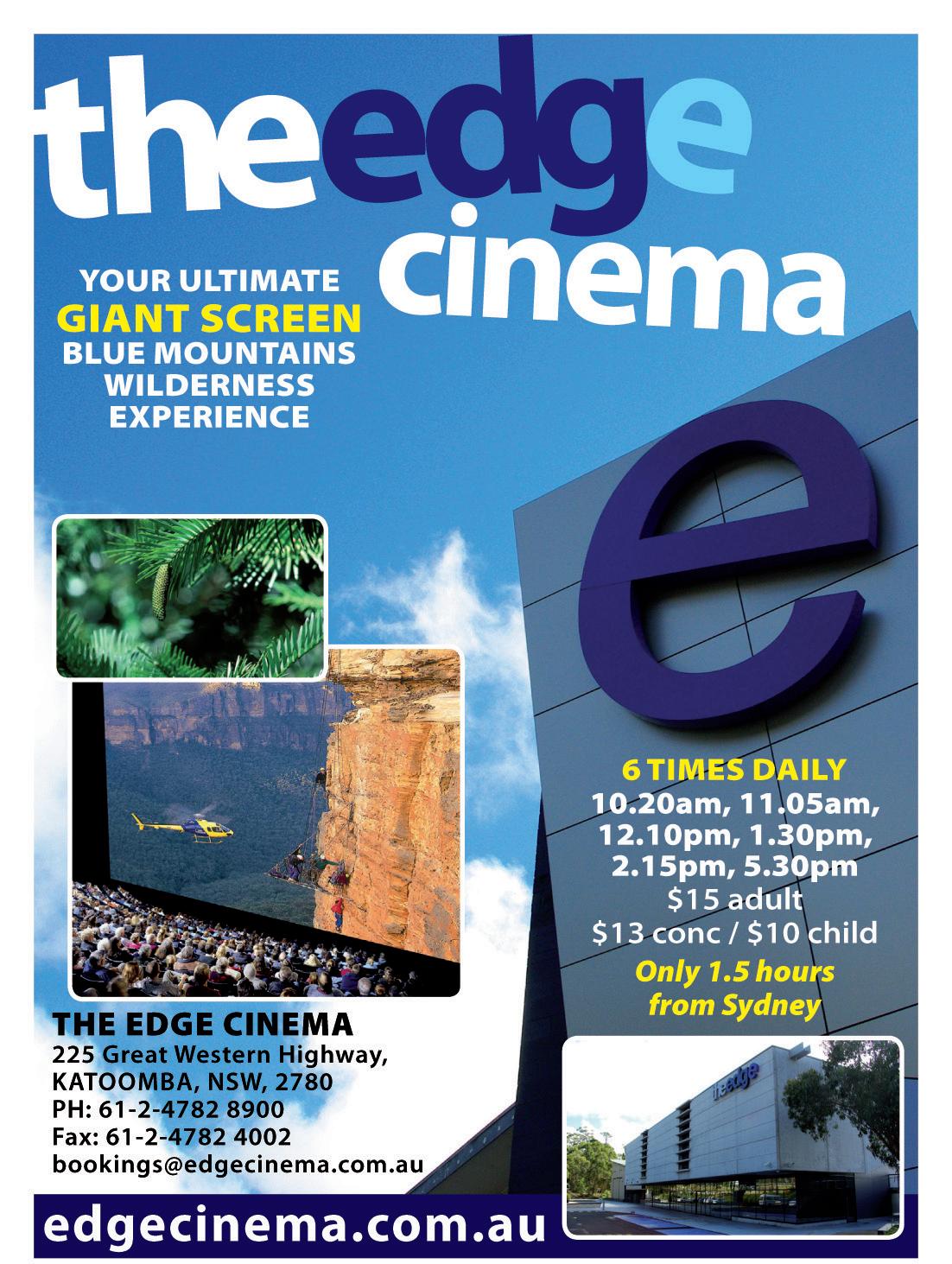

74 <> JUNE (1) 2010 INDIAN LINK


JUNE (1) 2010 <> 75 NATIONAL EDITION
Matrimonials
SEEKING BRIDES
Seeking a slim, fair and homely girl with good family values, for my brother, very handsome, 29 years, clean-shaven Sikh boy, Marketing Manager in Dubai. I’m well settled in Sydney for the past 8.5 years. Please email a.kaur@optusnet.com.au
Suitable matches are invited for our 28/180 handsome Punjabi (Manglik) boy. Senior managerial job, internationally recognised qualifications, with well settled family here and in India. Fluent in Hindi, boy loves to cook and plays sport. Please email details with pics, Sydney.Matrimonial@gmail.com
Seeking alliance for a 29-year-old, 5’11”, Gujarati boy. Working as a database analyst in Melbourne. Looking for a well educated, preferably Gujarati girl with family values. Please email modi.nayan@gmail.com or ring 0403 652 602. Bharat Matrimony: G54933
Qualified beautiful Punjabi match from respectable, cultured family for highly educated, 28-year-old, 5’11”, presentable, responsible, family oriented, Punjabi boy, architect, Australian citizen, in Sydney, belonging to high status family in Mumbai. Send bio + pic (must) to sdiwans@gmail.com
Palghat Iyer 32/5’9”, MBA, MS, veg, dual citizen, well settled with permanent IT position in large telecom, with pleasant looks and cheerful personality, seeks bride, 27-30 with similar cultural background. TM ID M607788, horoscope available, email kkrangan@yahoo.com or contact 0418 720 781.
Australian citizen, Jat Sikh boy from Melbourne, 25 years, 5’ 7”,
professional full time worker, looking for a career oriented Punjabi Sikh girl with good family values. Respond with photos at melbourneldh@yahoo.com or call 0433 544 251
Match for Arora boy, Oct 74, 5’11”, fair, working with bank in Melbourne. Permanent resident. Elder brother Australian citizen, staying with him. Parents here till Oct. Wife met with tragic accident, lost her memory therefore legally divorced. Caste no bar. Early marriage. Contact Mukesh Pahwa Mob: 0413 175 681 Res: 03 85020656 Email Photo and CV: karneshp@gmail.com.

Australian permanent resident, Sachdeva/ Arora Hindu boy, 5’6”tall, 32 years, born on 30/08/1977, never married, good at heart, caring and loving by nature. Seeking good looking girl for marriage, having good moral values, family oriented, caring, honest and educated girl. Nationality no bar. Email sachdevasunil30@gmail.com
SEEKING GROOMS
Seeking matrimonial alliance from professionally qualified and well settled Malayalee Nair boys, age to 27 years, brought up in Australia or overseas, for a 22-year-old beautiful Nair girl brought up in Sydney, graduate in Animal Science, pursuing further studies. Contact with photo pradeeppillai@ ozemail.com.au or 0410574006.
Seeking clean shaven, teetotaller for Punjabi Prajapati manglik beautiful, slim girl, born July 1981, 5’5”, graduate (p.u.), diploma in fashion designing. Family in Chandigarh, own business. Brother in Sydney, running own business. Girl visited Australia last year. Preferable Australia/New Zealand/ around Chandigarh. Upper caste no bar.
Contact: +919417072965, 0422 669 082 rk_sangar@yahoo.co.in

Seeking clean shaven, professional alliance for our 27-year-old, 157cm, Sikh daughter. She is a finance professional with strong family values. We are settled in Australia for many years. Please send your details and photo to matrimonial275@gmail.com
Seeking a suitable match for Panjabi girl, 28 years (Aust citizen), 5’8”, fair, never married, working in Sydney. Seeking match with progressive and broadminded personality, preferably settled in Sydney, caste no bar. Parents currently live in Brunei. Send details and recent photo at mukeshrandev@ hotmail.com or Tel: 00 673-233 4324 (Res).
Seeking professionally qualified/wellsettled match for 39/165, never married, fair, slim, beautiful Punjabi girl, family oriented and responsible. Engineer working in Sydney, Australian citizen. Early marriage. Can relocate. Parents well-settled in India. Caste no bar. Email with photo: sydgirl09@ gmail.com
Seeking professional, educated boy for Sood Khatri girl, 81 born, 5’4” M.O.A., working as a manager in Australia. Send biodata with recent photo to soodbrothers@ yahoo.com
Well-settled and professional alliance invited for fair, slim, beautiful and tall Sikh girl, 22/172 cm. Professional lawyer and accountant, working in MNC. Well mannered with modern outlook and traditional values. Family well settled in Australia. Please respond with photo, education and professional details to email: sohnachan@gmail.com Mobile: 0415 035 80
Seeking match for 28/158cm, fair, beautiful, intelligent, Australian citizen girl, from a respectable Hindu family with good professional job. Boy must be 29-32, professionally qualified, well settled, openminded, non-smoker with strong family values. Please email profile and photo to sydney_girl2010@hotmail.com
Seeking suitable professionally qualified, Hindu, well settled match for an Indian-based Hindu girl, never married, 37 years, 165cms. Family are well settled in Sydney. Please contact Peter on 0400 981 912 or hariom1969@hotmail.com
Punjabi Arora parents invite never married well-settled/professional match for fair, slim, attractive, 37/165, IT professional with strong family values. Never married. Settled in Sydney. Australian citizen. Status family. Caste no bar. Early marriage. Email with photo: ausgirl101@gmail.com
Sister and brother-in-law seek a suitable groom for a lovely 25-year-old Fiji born Hindu girl, independent, fair, lovely girl, Australian citizen professionally qualified, currently working in an Australian company. Family seeks a qualified match from suitable boys 25 to 29 years of age. Please email bio data and recent photographs to arieso@ rediffmail.com
Sister-in-law seeks educated and wellsettled boy for Sikh Punjabi girl. She is working as Auditor at KPMG, Australian citizen, Sydney based, 23 years old, 5’ 6” slim and beautiful. Please send details and photo to Ravinder Kaur ravinderkaursydney@gmail. com
INDIAN LINK


JUNE (1) 2010 <> 77 NATIONAL EDITION Open 7 days BUSINESSES FOR SALE CALL SUNNY SINGH ON 0433 239 589 sunny.singh@sbx.com.au www.sbx.com.au NO CHARGE TO BUYERS WE SPEAK YOUR LANGUAGE SBX Sydney Business Exchange TAKE-AWAY NANDO’S FRANCHISE NEWS AGENCY CONVENIENCE STORE BROKER’S TOP CHOICE SPORTS ONLINE TRANSPORT TELECOM Code Profit/Week Price SB1056 $2,500 $129,000 Code Profit/Week Price SB1110 $2,500 $495,000 Code Profit/Week Price SB1123 $4,250 $460,000 SB1094 $1,400 $129,000 Code Profit/Week Price SB1084 $1,000 $49,000 Code Profit/Week Price SB1116 $4,500 $990,000 Code Profit/Week Price SB1104 $2,000 $249,000 SB1105 $12,000 $649,000 Code Profit/Week Price SB1080 $4,000 $595,000
China Airlines inaugurates “India Express” for Sydney passengers
8508, Delight Travel, delighttravel@live. com.au, tel (02) 9280 0688, Formosa Travel and Holidays, michael@ formosatravel.net, tel 1300 787085 and Taiwanholidays, sales@TaiwanHolidays. com.au tel (02) 9267 1308.
Taiwan-based China Airlines has realigned its Sydney/Taipei and Taipei/ New Delhi flight timings to create an “India Express” with a choice of three types of Indian meals on a pre order basis, at least one Indian movie and several music channels with Indian favourites.
Three of five weekly services departing Sydney have very convenient connections with three of the four weekly flights on to the Indian capital, said Jim Wong, Sales Manager, China Airlines, Sydney.
The Monday/Wednesday/Saturday CI 052 flights, for instance, leave Sydney at 2210 and arrive in Taipei at 0540 the next morning. The onward CI 071 flights to New Delhi depart at 0815 and arrive in the Indian capital at 1220.
The return CI 072 flights depart New Delhi at 11.30 on Monday/Wednesday/
Special air fares beginning from $1100 including tax and available for travel during the mid June to mid October period can be booked through travel agents or on the airline’s website: www. china-airlines.com There is no booking fee or credit card charges.

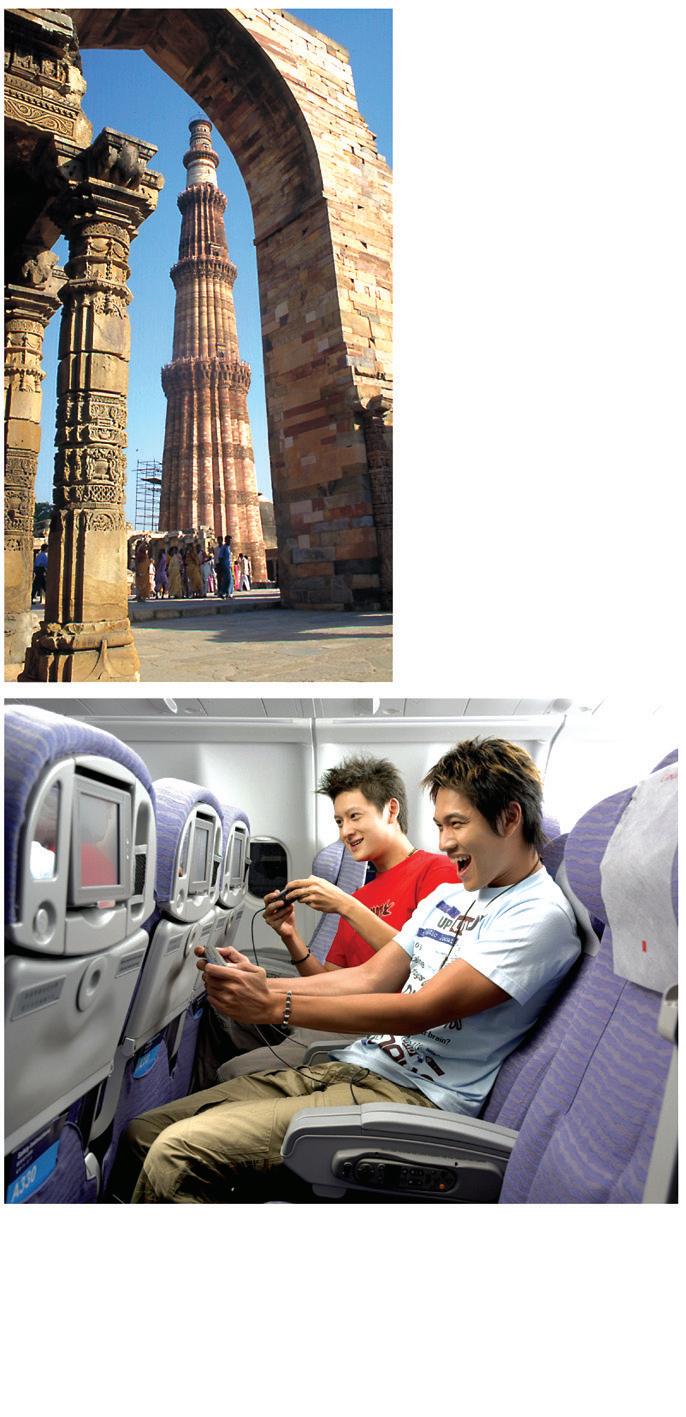
Sydney/Taipei/New Delhi flights will be operated in Airbus A330-300 aircraft equipped with Audio Video on Demand entertainment centres.
These popular entertainment systems allow passengers to choose from a large selection of movies and short features. As well, passengers have access to many music channels and the superior AVOD system allows them to create their own playlists.
In addition to its five weekly flights out of Sydney, China Airlines also has a three times a week A330-300 service between Brisbane and Taipei.
Bridal Glamour Mehndi ki shaam aayi... It’s celebration time again!
It's that wonderful time of the year again - time for festivities and tradition, time for pampering yourself with a new wardrobe and dressing up in your most gorgeous attire.
Indian Bridal Fair, a speciality wedding exhibition, is a one-stop event where all wedding related items and services will be showcased for two days. The prime objective of this event is to provide an ideal platform for the wedding service / merchandise providers to interact with discerning
customers.
There's no better time than now to visit Indian Bridal Fair and do your shopping and selections from Sydney’s a major bridal related products / service providers. It is an opportunity no fashion enthusiast should miss!
Indian Bridal Fair helps to find all that one needs for the big day. The exhibition offers a huge variety of stunning traditional wedding attires at attractive prices. On display will be all essentials that a bride and groom-
to-be need - a full wedding wardrobe, gold and diamond jewellery, beauty, hair services and products, photo and videographers, mandaps, wedding planner, decorations, catering, wedding stationery, jyotish, reception venues, florist, cakes, DJ and more.
In a short span of time, Indian Bridal Fair has become a name to reckon with in the wedding fraternity. With a discerning eye and the ability to distinguish the exquisite from the ordinary, IBF brings style and
uniqueness under one roof where you can find an array of finest collections. Spread the Joy ... come, be a part of Celebrations!
The exhibition will be held at:
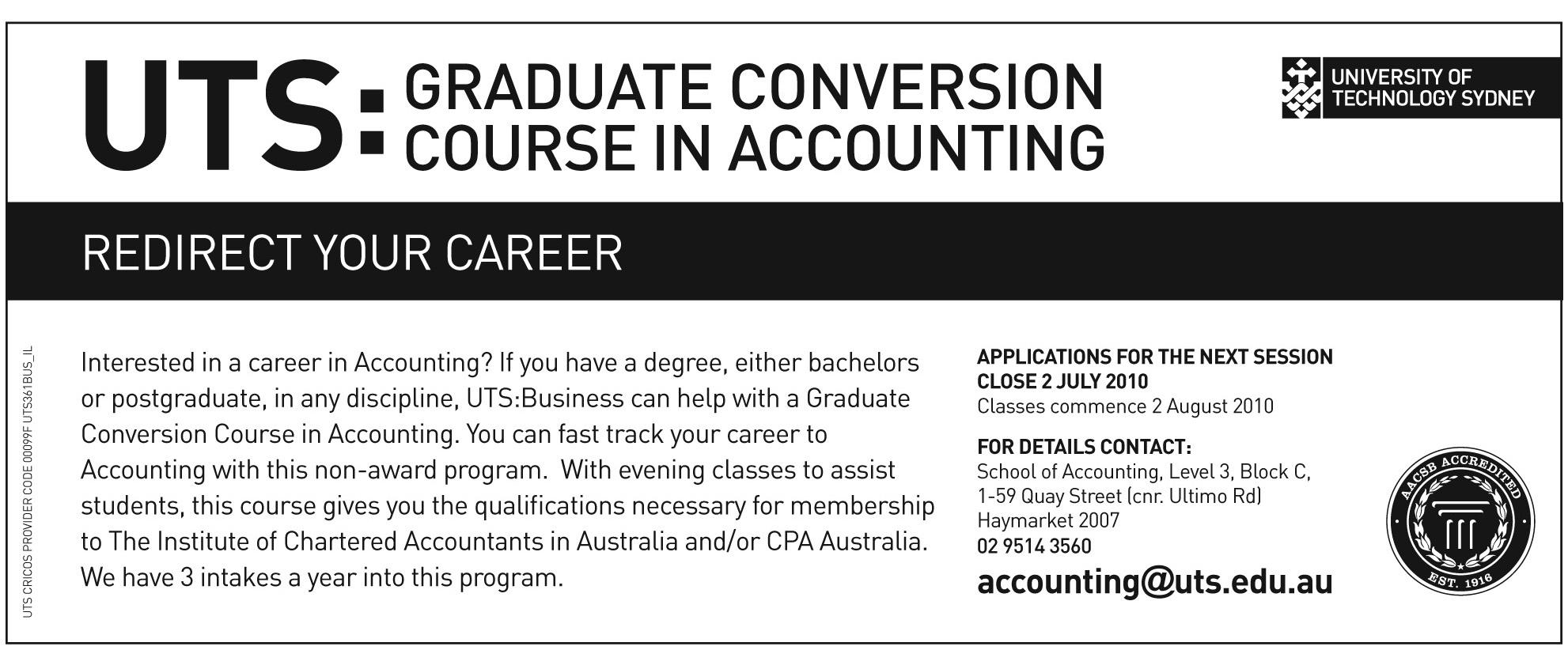
Castle Grand, Level 1
Cnr Castle & Pennant Streets
CASTLE HILL Sydney NSW 2154
24 and 25 July 2010 (10 am - 5 pm)
Free car parking
www.indianbridalfair.net
78 <> JUNE (1) 2010 INDIAN LINK ADVERTORIAL www.indianlink.com.au
China Airlines flights to Taipei and India have a superior Audio Visual on Demand entertainment system.

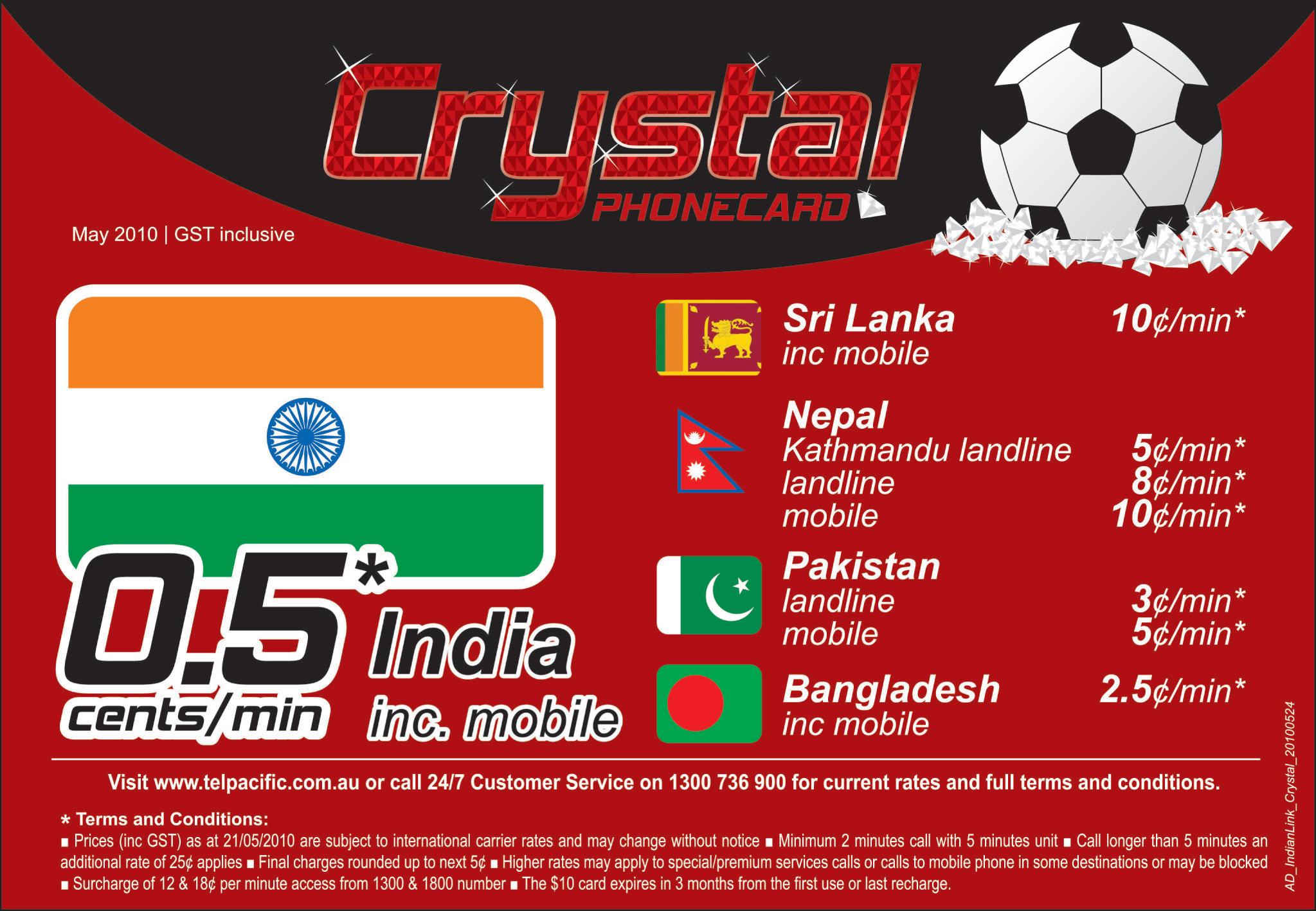
JUNE (1) 2010 <> 79 NATIONAL EDITION

80 <> JUNE (1) 2010 INDIAN LINK


JUNE (1) 2010 <> 81 NATIONAL EDITION
ARIES March 21–April 20
Tarot ‘n’ You Tarot ‘n’ You
‘n’ You Tarot ‘n’ You
Tarot predictions for June 2010

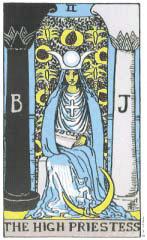




Tarot predictions for February 2010


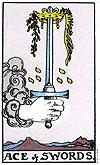
Tarot foresees a focus on relationships. On a personal level it is a good time for romance and compatibility. Tarot indicates harmony, romance, peace, concord and prosperity. Gatherings will be happy and congenial. Monetary success is suggested. Purchase of property can be contemplated. Tarot indicates a quiet time spent with friends and family in a favourite place. It is a time when you are successful in feeling at home in a relatively new situation.
TAURUS April 21–May
21
The focus this month is on development of potential for advancement. You are seen building foundations for future success. Opportunities for a new job or development of a new skill, abound. A creative talent could turn into a profitable project. Friendships are likely to be strong. You are likely to be committed to a situation at the present moment, which will reap you rewards in the future. It’s a good idea to take up a course to widen your scope of employment.
GEMINI May 22–June 23
Your focus this month is on aspirations and ambitions. You are likely to come across a sensitive person who would be able to give sound business advice as she would be intuitive about people. She will be trustworthy and would sincerely work towards general good. Her practicality and good communication skills get her through situations and people. You are likely to be helped by such a person. Tarot signifies security in money and status. You can be successful through practical application of your ideas.
CANCER
June 23–July 22
Tarot indicates success through self-discipline and practicality. In order to succeed, you will have to adopt a pragmatic approach to life in spite of the limitations that confront you. Tarot represents stability, strength and conviction. New opportunities are likely to come your way, which you need to make the best of, by laying solid foundations that will finally lead to success. You should be prepared to act instantly and leave the option for any changes that may be required.
LEO July 23–August 23
Your focus is likely to be on matters related to family and relationships. You will encounter a friendly and loving person who is not only popular in company, but also clever in business and works with drive and enthusiasm. This person is likely to bring you success in business. You are advised to adopt such qualities yourself. You are likely to achieve success through inner strength. Tarot suggests a good business proposal. Anything to do with property or security is well favoured.

VIRGO August 24–September 22
You are likely to come across a person who is virtuous and honest. Tarot indicates a stable relationship, linked to domestic happiness. In order to develop an inner understanding of matters on the table, you are required to study the depth of things. Tarot advises you to adopt a mature approach in life and take action only after thinking and rationalising. You are likely to achieve success in creative disciplines. Tarot indicates an offer for friendship or a deeper level of commitment in a relationship.

LIBRA September 23 – October 23
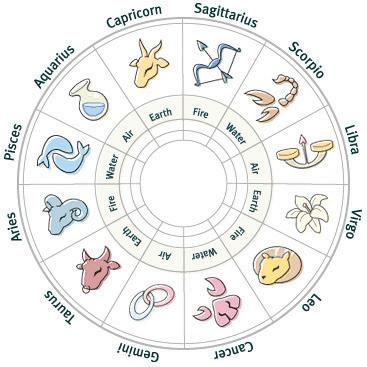
You are likely to focus on your achievements this month, and an overall feeling of happiness will result from it. Tarot indicates success and victory. You are nearing your personal goals and an enterprise is coming to a successful conclusion, making you feel emotionally secure and content due to a job well done. Your inner needs are fulfilled. Relationships hold harmony, as you have learnt to love and care for yourself and so you work towards making relationships happier.
SCORPIO October 24–November 22
Congratulations, Tarot foresees success and fulfilment for you. You are likely to be happy on achieving lasting success. You have the support of people around you – well-wishers surround you from every side. Overseas projects are indicated for you this month. Travel is likely to be fruitful. The project on your mind at this time will ultimately bring you success. Make the most of this time, but remember, you should continue to put in hard work in whatever you do.
SAGITTARIUS November 23–December 21
Tarot advises that it will benefit you to surrender to life with faith in positive changes. A struggle in the present circumstances would only lead to further entanglement and difficulties. Peace will be restored after this challenging period is over. You should use the present opportunities to quietly reflect on the causes of your present state of being. You need to make adjustments to improve your circumstances and use free will to move forward when the time is right.
CAPRICORN December 22–January 19
You realise that you can no longer stay away from issues and are required to face your problem responsibly. There is a conflict in the air that may have brought about the worst side of everyone involved. You need to be careful of someone who can create trouble, and avoid arguments for your reputation may be at stake. The end result is not likely to give anyone much happiness. You should be careful taking up only as much responsibility as you can cope with.
AQUARIUS January 20–February 18
Tarot signifies a new beginning for you. You may be required to make a decision and act on it. Hence, it is important for you to keep yourself emotionally balanced for the same. You are likely to act with utmost passion towards your desired goal. In a relationship reading, it seems you have a clear idea of what you want from a relationship requiring mental compatibility. Your purpose is clear, so you are able to focus on what you desire.

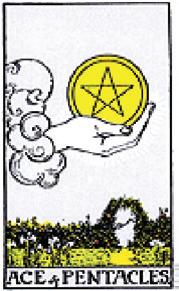
PISCES
February 19–March 20
Winter comes so that there can be a spring. Change is the way of life. Tarot signifies changes that are permanent in nature. The old is likely to give way to the new. It will bring with it new beliefs and understandings. There are times when situations end in life and new beginnings are seen and experienced. Certain beginnings are accepted easily and some may need adjustments. Be open to change and make the best of it.
82 <> JUNE (1) 2010 INDIAN LINK
STARSFORETELL www.indianlink.com.au
Budget Removalist 0413 709 731
Tarot


JUNE (1) 2010 <> 83 NATIONAL EDITION 11A, 7 HOYLE AV, CASTLE HILL 2154 www.ezyworldtravel.com OPENING SPECIALS INDIA FROM $1095 * INCLUDING TAXES Singapore 4 nights from $275* per person 4 nights accommodation at the 3 Star Value Hotel Thomson Return seat in coach airport transfers Sale: 30 Jun 10 Travel: 27 Sep 10 - 31 Mar 11 MOST COMPETIVE PRICES, BETTER THAN THE REST MAKE THE MOST OF YOUR STOPOVERS ON THE WAY TO INDIA Hong Kong 4 Nights from $329* per person 4 nights accommodation at The Central Park Hotel BONUS: Breakfast daily Sale: 10 Oct 10 Travel: 29 Sep – 10 Oct 10 Thailand - Bangkok 4 nights from $149* per person 3 nights accommodation at the 3.5 Star Royal Princess Larn Luang BONUS:Stay 3 for the price of 2 BONUS:Breakfast daily Return seat in coach airport transfers Sale:30 July 10 Travel: 01 Oct 10-31 Mar 11 *Conditions apply subject to availibility at the time of booking.
Cine Talk
It swings and sways, but never soars
Film: Kites
Cast: Hrithik Roshan, Barbara Mori, Kangana Ranaut, Kabir Bedi, Nick Brown

Director: Anurag Basu
Music: Rajesh Roshan
Producer : Rakesh Roshan
There are one too many strings attached to this film, so that it never really soars to the heights it should - becoming, in the end, a predictable tale of star-crossed lovers. Set in the glittering lights of Las Vegas and the brooding deserts of Mexico, it’s Matchpoint, Bonny and Clyde and much else rolled into one, failing to take off on its own.
The problem with Kites is that it is never truly its own film. The first half constantly takes you back to Woody Allen’s compelling Matchpoint with the doomed quartet of Jai (Hrithik), his girlfriend Gina (Kangana Ranaut), her brother Tony (Nick Brown) and his fiancée Natasha (Barbara).
Life is set to roll for the rakish, down and out Jai with Gina, the fabulously rich, hopelessly-in-love daughter of a Vegas casino owner, until he meets Natasha, the exotic Mexican immigrant also looking out for the good life. The attraction is inevitable - and fatal.
The pull is irresistible. Designer watches, flashy cars and jewels beckon but Jai and Natasha are caught in a relationship that transcends language. She knows no English and he knows no Spanish.
So far so good, before the script decides to meander into a Bonny and Clyde caper with the couple on the run from the powerful Tony, robbing a bank. Completely unnecessary and giving no time for the intensity of the romance to develop.
The narrative moves back and forth in time, beginning with a bloodied Jai tumbling out of a train wagon and
A taut drama of political nemesis
Film: Raajneeti

Cast: Nana Patekar, Naseeruddin Shah, Manoj Bajpai, Ajay Devgn, Arjun Rampal, Ranbir Kapoor and Katrina Kaif
Director: Prakash Jha
In Prakash Jha’s sweeping, damning and definitive look at Indian politics and its power-hungry players, Sarah Thompson is Ranbir Kapoor’s Irish-American girlfriend who suddenly finds herself thrown into the vortex of murky Indian politics.
Jha, known earlier for his deft Devgnhelmed Bihar-centric political thrillers Apaharan and Gangaajal, this time explores the Mahabharata for a look at the way politics in our country governs almost every aspect of existence.
Thompson’s shocked realization of the immoralities of Indian politics cuts across the audiences’ perception of the world bathed in blood and corruption.
Raajneeti has more characters lunging for the ballot box than the popcorn-nibbling
stumbling across the desertscape to look for his ladylove. So you get a sense of what is in store. The predictability of the script is not really a problem - the opening line of the film lays the tenor, with Jai in a voiceover telling you that two kites flying together can never soar very high or very long because one has to get cut.
This is a chronicle of a tragedy foretold, much in the way of other epic romances.
It could have worked. The much talked about chemistry between the lead couple is in evidence, but not enough. Director Anurag Basu is at his best in the intimate scenes. Like when Jai looks out of his window to see Natasha being roughed up by Tony and goes to comfort her. There are no words but the shadow play on the wall of their fingers intertwining is romance as it should be.
The soul of true love is there somewhere, but it gets lost in the two-hour film that also brings in murder, torture and gunmen galore. Basu seems lost in the larger macro frame of the film.
The two main characters are not fleshed out enough, and the others around them are like caricatures. How many Bobs (Kabir Bedi as the powerful, ruthless casino owner who does not balk at shooting down cheaters) have we seen, or Tonys, the archetypal jealous boyfriend with an army of goons behind him?
A script doctor was badly needed to stitch up the loose ends - too many loosely scripted scenes and gaps that really should have been filled for a lucid narrative.
But the superb cinematography that has the look of a truly international film, and Rajesh Roshan’s lilting music (Zindagi, zindagi) score as winners.
Barbara Mori also strikes a chord, and she’s a real good looker. But the best for the last - Hrithik Roshan looks better than he has in any other film, and with him dominating virtually every frame, this one is a treat for his fans. Go swoon, if you must.
Minu Jain
audience can keep track of. A taut, clenched drama of devastating nemesis, Raajneeti moves across its epic-inspired canvas with a vigour and velocity that sweep audiences off their feet.
The way Jha captures the parched, dusty, bustling energy of political rallies is impressive. This is no amateurish attempt to yoke the Mahabharata with Indian politics. The truth-defining moments in Raajneeti are truly shattering. The lies that co-writers Anjum Rajabali and Jha’s characters live have ricocheting ramifications.
Jha delves deep into the characters’ conscience to emerge with penetrating insight into the corroded heart of the Indian body-politic.
But his storytelling never touches those nerve-ends in his narration where his characters would have actually expressed what they feel. A sequence like the one where the mother-figure (Nikhila Tirkha) meets her illegitimate son (Ajay Devgn) for the first time is more interesting for its dramatic possibilities than their actual realisation.
The criss-cross of relationships is an intricate tapestry of trust, betrayal, murder and atonement. But no character is allowed ample space to express his or her innermost desires and ambitions.
Katrina’s character, for example, is so underdeveloped that we never know what
she really wants to get out of her space in life. The brutality with which she is shoved by the male characters - from rebuffed love to a marriage of political convenience to a widowed political career - is a plot of immense dramatic potential, alas sketchily realized.
We see Jha’s gallery of dynastic politicians in all their ruthless glory. But we never get close enough to them to connect with their lust, greed, pain, anger and hunger.
The squalor and ugliness of Indian politics is put on screen with cutting immediacy. There are interesting side characters, like the ambitious female politician from Sitapur (Shruti Seth) who uses sex for barter, and women newscasters, rallyists and petty politicians played by actors who seem to know the world they are meant to occupy from the fringes.
The trouble with the over-laden plot is
that all the major characters clamour to be individualistic. They are unique in their portrayal of political clichés.
What really elevates Raajneeti to the level of a powerful political parable of our times are the performances. Nana Patekar, Manoj Bajpai, Arjun Rampal and Ajay Devgn get a firm grip over their characters and carry their tumultuous karma to a logical culmination.
Katrina comes into her own in the last 15 minutes. She looks vulnerable and resplendent as a girl forced to put power over her heart. As for Ranbir, he is actually the backbone of Raajneeti. He brings a reined-in, steel-edged ruthlessness to his character. For sure there is no other actor from his generation who could have played this character.
The pair’s goodbye sequence at the end is so deftly handled, you wish there were more moments between the two. Raajneeti is not just a film that opens up the tattered edges of Indian politics. It dares to walk right into the muck with restraint, vigour and some sensitivity.
The film has some outstanding cinematography by Sachin Kumar Krishnan. The camera seems to be looking into places in the characters’ psyche that perhaps even the screenplay isn’t aware of.
Subhash K. Jha
84 <> JUNE (1) 2010 INDIAN LINK
ENTERTAINMENT www.indianlink.com.au

JUNE (1) 2010 <> 85 NATIONAL EDITION
BUZZThe
3 Idiots sweeps IIFA Awards
Aamir Khan’s 3 Idiots swept the 11th edition of the International Indian Film Academy (IIFA) Awards that concluded with much fanfare in Colombo recently, despite the absence of Bollywood’s megastars like the Bachchan family and Shah Rukh Khan. However, the Roshan family turned up in full force, from Hrithik Roshan’s filmmaker maternal grandfather J. Om Prakash, his dad Rakesh and mum Pinky, and even the hunky star’s wife Suzanne and sister Sunaina.
The glitzy and glamourous awards ceremony also had Salman Khan, Sanjay Dutt, Anil Kapoor, Saif Ali Khan, Kareena Kapoor and Bipasha Basu flying the Bollywood flag with comperes Lara Dutta, Boman Irani and Riteish Deshmukh once again enthralling the audience with their excellent chemistry on the extravagant sets. Naturally, there were high points like Hrithik Roshan’s mindblowing livewire performance when he not only danced, but wowed the audience by singing as well.
And of course, forgettable moments like Bipasha Basu’s performance.
The three-day event saw a fashion extravaganza, a live musical event and even a charity cricket match where, needless to say, the Sangakkara XI knocked out the two Bollywood teams led by Suneil Shetty and Hrithik Roshan.

But it was the grand finale that stole the show with its extravagance and glamour, a true setting for Bollywood’s best to be publicly acknowledged for their talent.
3 Idiots created history by becoming one of the most successful films in Hindi cinema, carrying away 11 trophies, including Best Film, Best Director (Rajkumar Hirani) and Best Actress (Kareena Kapoor).
Kareena shared the award with Vidya Balan for her role as a single mother in Paa
Mega heart on Big B
Bollywood superstar Amitabh Bachchan was deeply moved when a group of people, including a little boy, lined up along a road in Gujarat with bouquets in the wee hours of the morning to catch a glimpse of him. He was in Gujarat to shoot for a tourismpromotion campaign, but couldn’t stop to acknowledge his fans because of the entire contingent of cars moving with him at the time. But the superstar set up a meeting with the same group the next day as he drove to Diu to catch a flight back to Mumbai.
“It was the look on the face of the little boy holding the bouquet of flowers at 5 in the morning that moved me. This is the group of fans from a nearby resort Amidhara that had put up the banner outside their facility on the drive from where I was to pass,” Bachchan wrote on his blog.
“I felt that our driving away was so inconsiderate to the boy, who must have had
so much expectancy as he stood their waiting for me to acknowledge him,” he said. The Big B stopped at their resort, apologised for his behaviour to them, took some pictures and autographs and then drove away, satisfied that he was able to assuage his guilt at ignoring the party.
“All is well that ends well and I am happy that it did,” he said in his blog. Which goes to prove that Amitabh Bachchan’s heart is certainly as big as his mega star status.
De-glam Katrina rocks in Raajneeti
Katrina Kaif has proved that she is more than just a glam doll, as the actress earned rave reviews for her role of a politician in Prakash Jha’s Raajneeti. Katrina, who is seen in a de-glam role in the film, has won praise for her acting prowess, said reviews of the film.
Sanjay Dutt, Bollywood’s affable Munnabhai, walked away with the Best Comic Actor for All The Best, while Boman Irani received the Best Actor in a Negative Role award for his brilliant portrayal of an eccentric professor in 3 Idiots Other award winners were: Sharman Joshi, Best Supporting Actor, 3 Idiots Divya Dutta, Best Supporting Actress,
Talking about her performance in the film, acclaimed critic Taran Adarsh said, “Katrina Kaif is first-rate. The sincerity and earnestness shows in every sequence. She sheds her glam doll image and transforms into an actor with this film.”
“Katrina has often been synonymous with


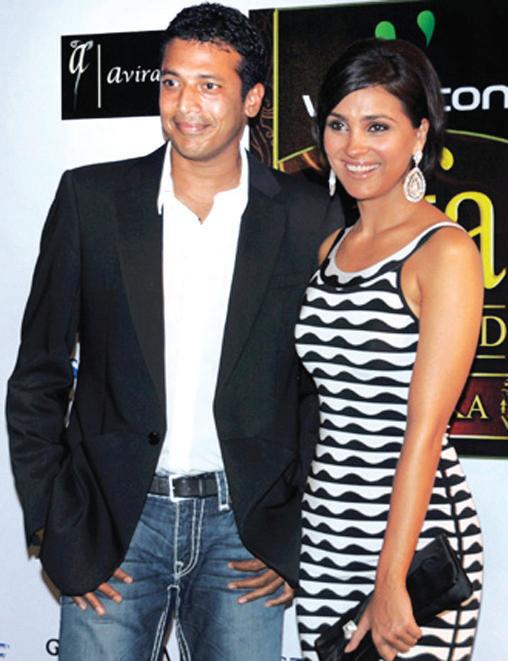
Pritam Chakraborty, Best Music Director Award, Love Aaj Kal

Swanand Kirkire, Best Lyrics Award, 3 Idiots
In the special award category, well-known Hindi filmmaker J. Om Prakash who made films like Aap Ki Kasam (1974), Aasha (1980) Aas Paas (1981), was honoured for his outstanding contribution to cinema. The award was presented to him by proud grandson Hrithik Roshan.
Versatile actor Anil Kapoor was honoured for outstanding achievement by an Indian in international cinema, mainly for his powerful Slumdog Millionaire. And yesteryears’ glamour girl Zeenat Aman was honoured for her outstanding achievement in Indian cinema.
While Bollywood macho man Salman Khan was given the Habitat for Humanity award, his not-so-good friend Vivek Oberoi, was honoured with the Panasonic Global Green award.
The first look of movies like Dabaang, Lamhaa and Knockout were also showcased at the event, as was a sneak peek into the multi-million project Kingdom of Dreams - a mega entertainment destination slated to open in Gurgaon in Mumbai, ahead of the Commonwealth Games in October.
It was an event with song, dance and all the trappings that make for glamour and excitement. There were impromptu performances galore, like Salman Khan, Govinda and Anil Kapoor singing on stage and getting the audience to join in as well. Despite unsavoury controversies surrounding the Awards and their venue in particular, the event showcased Bollywood in all its glory. Kudos to the IIFA for pulling it off!
candy floss roles but with Raajneeti she is out to prove that she is here for the acting. In the film she plays a character whose life changes dramatically and she handles it well. Additionally, her beauty doesn’t overshadow her performance,” said a trade analyst.
The 25-year-old beauty, who has delivered
GUESS WHO ?
Reluctant actress who always wanted to be better known for her singing
(Find the answer under Caption Contest)
86 <> JUNE (1) 2010 INDIAN LINK
ENTERTAINMENT
ABHILASHA SENGUPTA brings us up-to-date on what’s hot and happening in Bollywood
Hrithik Roshan
Mahesh Bhupathy and Lara Dutta
Bipasha Basu
Jacqueline Fernandes
a string of hits playing the urban young woman in films like Namaste London, Singh is Kinng and Ajab Prem Ki Gajab Kahani has silenced her critics with her performance in the new film.
“Katrina’s popularity is soaring by the day. Often topping polls of beauty and sex appeal her contemporaries have much to worry about since she just proved her acting prowess,” the analyst added.


Shot in Bhopal, Raajneeti is the story of a fiercely fought election campaign where money power and corruption are the accepted norms and where treachery and manipulation are routinely used weapons. And it isn’t just Katrina who’s walking away with accolades. Co-star Arjun Rampal has also been swarmed with compliments for his role of a conniving politician in the film. Many from Bollywood, including Shah Rukh Khan, Hrithik Roshan, Rishi Kapoor, Shekhar Kapoor, Riteish Deshmukh, have congratulated him for getting rave reviews.
The actor, who recently received a National Award for his supporting role in Rock On!, is on cloud nine, and says he is “humbled and touched”.
So that’s two more from the glamour gang who have proved that they can actually act. Well done, Rajneeti!
Sherlyn snubs Playboy
Bollywood item girl Sherlyn Chopra has cited reasons for not accepting the offer from Playboy magazine and said that she is not at all comfortable with frontal nudity.
“Bob, the magazine’s chief photographer, saw my pictures on the net and approached me but I had to refuse it because the shoot involved frontal nudity and I am not comfortable with it,” said Sherlyn in an interview. Recently, Sherlyn had posted a nude picture of hers on Twitter. According to her, it was to get feedback from her fans. “I wanted to get feedback from my fans. Most of them posted that I shouldn’t be doing something like this as it is against our culture,” said Sherlyn. Well, I guess Twitter’s as good as Playboy, so keep those pictures coming, Sheryln!
Comfortable with both hats
Irrfan Khan, who is not only a popular actor but also one of the biggest Bollywood actors in Hollywood, says that he is as comfortable in Hollywood as in Bollywood.
“As actors, we all need change, we can’t deal with similar stories and do the same things. Also, the way of telling a story should be different so that it enhances your acting capabilities,” Khan said in an interview.
“I am comfortable with both sides of the entertainment industry - Hollywood and Bollywood. All I want to do is things from different parts of the world,” he added.
Irrfan will soon be seen in Knockout, directed by Mani Shankar and also starring Sanjay Dutt and Kangana Ranaut. Knockout is supposed to be based on the 2003 Hollywood flick Phone Booth but the actor denies it saying that the movie is very contemporary and is based on reality which is very relevant in today’s world. “It is going to be an explosive movie that will touch some reality issues,” said Khan.
The 48-year-old actor has worked in movies like Haasil, Rog, New York and Maqbool among many others. He became a prominent Indian face in the international film circuit as well after he featured in movies like A Mighty Heart and Slumdog Millionaire
He is also working in Jennifer Chambers Lynch’s Hisss
The actor at present is shooting for the American television show In Treatment but says that working in Bollywood movies is a different experience altogether.
CAPTION CONTEST
film,” said the actress who has teamed up with Rajat Kapoor and Amole Gupte in the movie. So will Neha have us in splits again? Let’s wait and see.
Luv not so lucky
Veteran actor Shatrughan Sinha’s son Luv Sinha, who made his screen debut with Sadiyaan that also starred Rekha and Hema Malini, feels that it was a mistake to start his career with that film.
“I’m going through scripts and trying to find the right projects because it is very important. I don’t want to make the same mistake twice. Based on audience perception to your work, you have to figure out what they want from you and do that. That’s what I’m trying to do,” said Luv in an interview.
“Now I would prefer doing something more contemporary, something more modern. Even if it’s a romantic comedy or an action thriller. I feel I can do those things pretty well, but to do that you need the right director who will actually tap you,” he said, revealing his wish list.
What’s Hrithik whispering to Barbara here?
“An actor is only as good as the director he works with. I say this without any problems and I completely believe in this,” he added. When asked if his father, who has been in the industry for so many years, would help him get the right project, the actor said, “I don’t know how much having a celebrity father helps. You can meet the right people through your connections but it won’t help you get a project.”
you don’t need to be logical all the time. Real life can bore you, so Bollywood will always remain close to my heart,” said Khan.
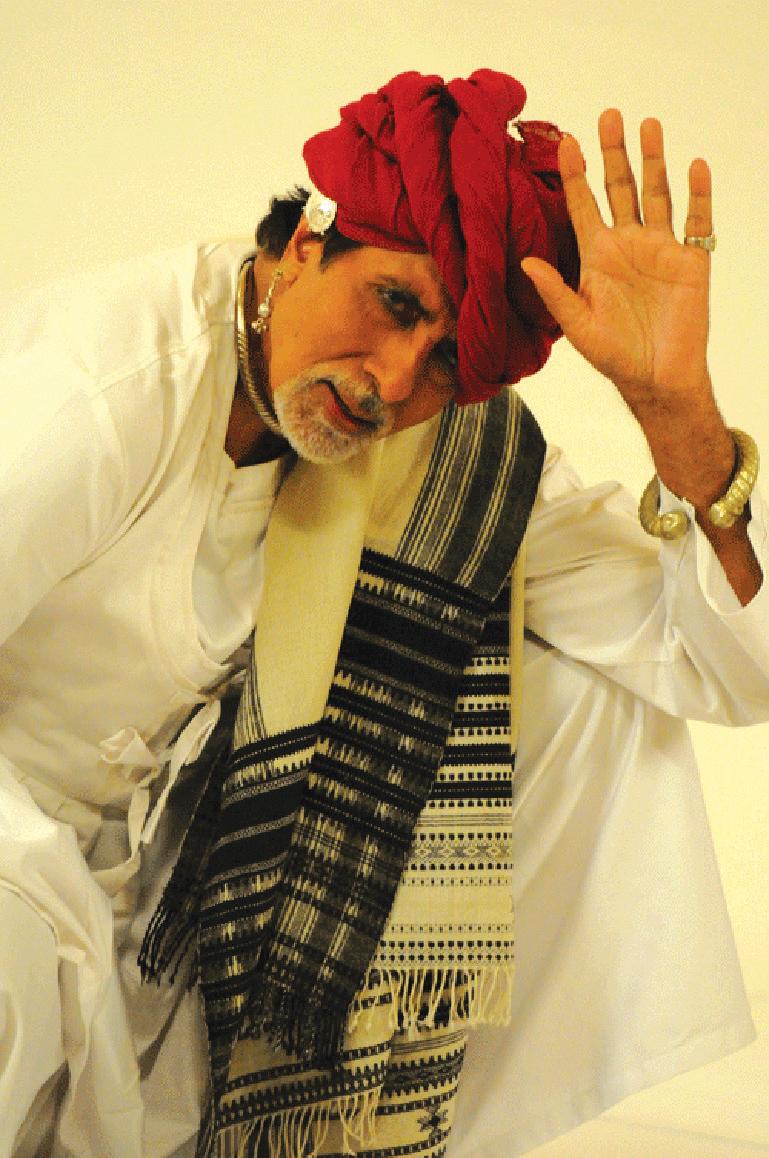
When asked whether he had any dream role the actor replied, “No, I don’t have any dream role. All I want to do is to do diverse roles as an actor and learn with every movie.”
Neha likes comedy
Unlike other actors who feel making someone laugh is difficult, Neha Dhupia enjoys doing comedies and says she has never doubted her capabilities as an actor.
“I don’t think comedy is difficult. It all depends upon how the director guides you. It becomes easy when you are working with good directors. Moreover, I don’t doubt my capabilities as an actor,” said Neha, who showed her comic streak in films like Singh Is Kinng and De Dhana Dhan
“Comedy is a genre that offers complete entertainment, so I never hesitate to take it up. When you are working with directors like Anees Bazmee (Singh Is Kinng) and Priyadarshan (De Dhana Dhan), you are bound to perform well.”
Neha, who won the coveted Miss India title in 2002, made her Bollywood debut in 2003 with Qayamat: City Under Threat and was later seen in films like Julie, Garam Masala, Delhi Heights, Mithya and others.
On Bollywood Neha says, “Acting is in itself a liberating profession. The fact that I can do so many different things and entertain people, keeps me hooked on to it. You can make so much difference to yourself and the people watching you - this is the best part of this profession. Bollywood is a fantastic place to work in.
It is changing every day. I don’t think I would like to be anywhere else except for Bollywood.”
Last seen in Raat Gayi Baat Gayi, Neha has a string of releases lined up this year, which includes romantic comedy Action Replayy that has Aishwarya Rai and Akshay Kumar in the lead roles, Pappu Can’t Dance Saala and With Love to Obama, in which she has donned a completely different avatar. “I play a village thug in With Love to Obama. For someone like me who likes to wear western clothes, playing a village girl was challenging. I am really looking forward to the release of this
Send in your responses to info@indianlink.com.au and win a surprise prize
Last issue Caption Contest winning entry
But does his father advise him while going through scripts?
“He always gives me his advice and inputs. My mother has also been an actor, but I pretty much go by what my father says. He’s been here for so long, so his experience really counts for me,” Luv said.
Poor Luv, not so lucky first time around, but hey, he’s here to stay!
Some other good ones
Viveik Oberoi and Celina Jaitley are working as anchors at an award show.
Viveik: “Hey Celina can you handle this show alone - I have to rush off now”.
Celina “But why????”
Vivek: “I just saw Sallu walk in”.
Sunny, Eastwood NSW
Viveik: “Arre Celina, tu to moti ho gayi hai…”
Celina: “Kya baat kar rahe ho?! Abhi to liposuction karvaya hai!”
Jaya Punjabi, Lidcombe, NSW
What’s the chitchat between Celina Jaitley and Viveik Oberoi?

Celina: “Stay away from me Viveik, I know you have a thing for beauty queens –Aishwarya Rai, Jacqueline Fernandez…”
Viveik: “You know me so well already – I’m sure we have a great future together!”
Nisha Pathak, Dandenong VIC
Nisha wins one free ticket to new Hindi film Raajneeti
Viveik to Celina: “Before we take this relationship any further, please confirm… do you have anything to do with Salman Khan?”
Neha Talwar, Parramatta NSW
Viveik: “I’m fed up of handing out Best Actor trophies… How long do I have to wait win one myself?”
Celina: “I know exactly how you feel, Viveik”.
Sonia, St. Leonards NS
JUNE (1) 2010 <> 87 NATIONAL EDITION
www.indianlink.com.au
AMITABH BACHCHAN IN BHUJ MODE
KATRINA KAIF
GUESS WHO :ANSWER Vasundhara Das of WeddingMonsoon fame
In tune with June
Late at night, sleepless and with a lack of anything better to do, I set about teasing Google for silly searches. First it was the Montauk monster, which led to the Chupacabra monster - a mythical blood sucking beast, and typical of a sleepdeprived mind, I began to wonder what such a beast might relish as an accompaniment to its beverage. Something sweet….ahh! Donuts, that’s it! Unthinkingly, I typed in a search for donuts and was surprised to find that June 4 is celebrated as Donut Day. And from there I made the most amazing discovery, one which dashed any hopes of sleep for the next couple of hours. I found out that almost every day in the month of June dedicated to celebrating something.
June 1
Stand For Children Day
On this day, the Stand for Children aims to use the power of grassroots action to help all kids get a good public education and the support they need to thrive.
Oscar the Grouch’s Birthday
The well-loved Sesame Street character was born on this day. World Milk Day is being celebrated on June 1 in 35 countries including Australia. It is a United Nations initiative to raise awareness of dairy products.
June 2
Radio was patented on this day in 1896.
June 3
The First US Space walk by Ed White in 1965 took place on this day and is still celebrated.
June 4
Aesop’s Birthday
We are all familiar with the timeless classic Aesop’s Fables about the hare and the tortoise, the lion and the mouse, the fox and the cat and the goose who laid golden eggs. Yet nobody knows much about the author apart from the fact that he was born a slave in Greece on June 4, 620 BC. Diehard fans celebrate his birthday every year.
Donut Day
Celebrated with the baking of donuts and some donut offering free samples on the first Friday in June.
June 5
World Environment Day
Each year on this day the UN seeks to focus world attention on the environment and on the efforts put forward for protecting or restoring the globe’s natural heritage.
June 6
D-Day
This day is also remembered as the best known D-Day dating back to 1944 Normandy landing, initiating the
June 14
Queen’s Birthday Celebrated on the second Monday of June in Australia, this is a true cause for jubilation with a long weekend to look forward to

Western Allied efforts to liberate mainland Europe from Nazi occupation during WW2.
June 7
Amazing Mumford’s Birthday
Mumford the magician from Sesame Street was created on this day to keep kids in stitches with his chant of “a la peanut butter sandwiches” and magic gone all wrong.
June 8
World Ocean Day
World Ocean Day is officially celebrated on this day because of a UN General Assembly resolution passed in 2008. Events are organised in coordination with zoos, aquariums, museums, schools etc., to raise awareness of the world’s oceans and highlight our connection to the sea.
June 9
Donald Duck’s Birthday
June 10
Iced Tea Day
To mark the official start of summer in many countries, gatherings offer iced tea to celebrate this day.
June 12
Magic Day
Magic Day is just another day to thank your loved ones for the magic in your life brought about by their love, or to organize magic shows and learn more about magic.
Fly a Kite Day
Celebrated in commemoration of Ben Franklin’s kite experiment of June 15, 1752 this can be a fun day to hunt out the kites and head for the park.
Global Wind Day
This day is celebrated all over the world to emphasize the benefits of wind energy, through contests, exhibitions, workshops and conferences.
This is an annual commemoration in Dublin and elsewhere to celebrate the life of Irish writer James Joyce and relive the events in his novel Ulysses. The day is marked by readings of the classic novel, its dramatizations and having fun in
World Day to Combat Desertification and Drought
Events and activities around the world to protest against desertification, land degradation and drought are conducted to celebrate this day.
International Picnic Day
Grab a picnic rug, some snacks, round up a handful of friends and head to your favorite picnic spot to celebrate this year’s International Picnic Day.
World Juggling Day
The International Jugglers’ Association strives to spread fun of through the art of juggling and to bring the jugglers together all over the world.
Ice Cream Soda Day
Ferris Wheel Birthday
United Nations Public Service Day
The United Nation’s Public Service Day is held on this day every year, aiming to celebrate the value and virtue of service to the community.
June 25
Take Your Dog To Work Day
Celebrated with dog talent shows, photo contests and of course, tagging your dog along to work.
June 6 Yo –Yo Day Whip out your yo-yos and impress everyone with ‘walk the dog’, ‘sleeper’ or ‘forward pass’ skills.

June 9
Donald Duck’s Birthday

June 13
Weed Your Garden Day
Give a little extra thought to your garden today and weed out those life sucking nasties.
June 28
Let It Go Day
Whatever’s bothering you, just let it go today!
June 29
Camera Day
June 30
London Bridge’s Birthday
London Bridge was opened on this day in 1894
Superman’s Birthday
Phew! Wouldn’t that be a busy month for someone who likes to celebrate every day of life?
88 <> JUNE (1) 2010 INDIAN LINK
LIFESTYLE www.indianlink.com.au
If you’re looking for a reason to celebrate each day, June is the month for you, says FARZANA SHAKIR


JUNE (1) 2010 <> 89 NATIONAL EDITION

90 <> JUNE (1) 2010 INDIAN LINK

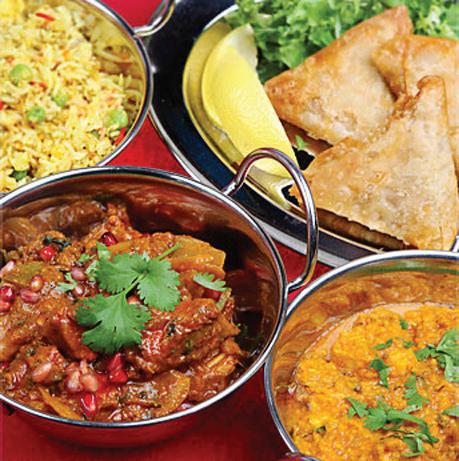



JUNE (1) 2010 <> 91 NATIONAL EDITION Call us now on 1300 780 765 or Visit us @ www.garmagaram.com.au Catering for all occasion from $7.99 Our specialties l Pujas (Veg food without onion and garlic) l Jain food Lunch and Dinner delivered to your doorstep from $7.99 Our Specialties l Daily Cooked l No Preservatives l Just Buy and Eat l New Menu for every day l 100% Home made taste
Parramatta
Lunch areas: Sydney CBD, North Sydney, Olympic Park, Rhodes, North Ryde,
Dinner areas: Parramatta, Harris Park, Westmead, Wentworthville, Pendle Hill

92 <> JUNE (1) 2010 INDIAN LINK























 BY RAJNI ANAND LUTHRA
BY RAJNI ANAND LUTHRA






























































































































































































































































